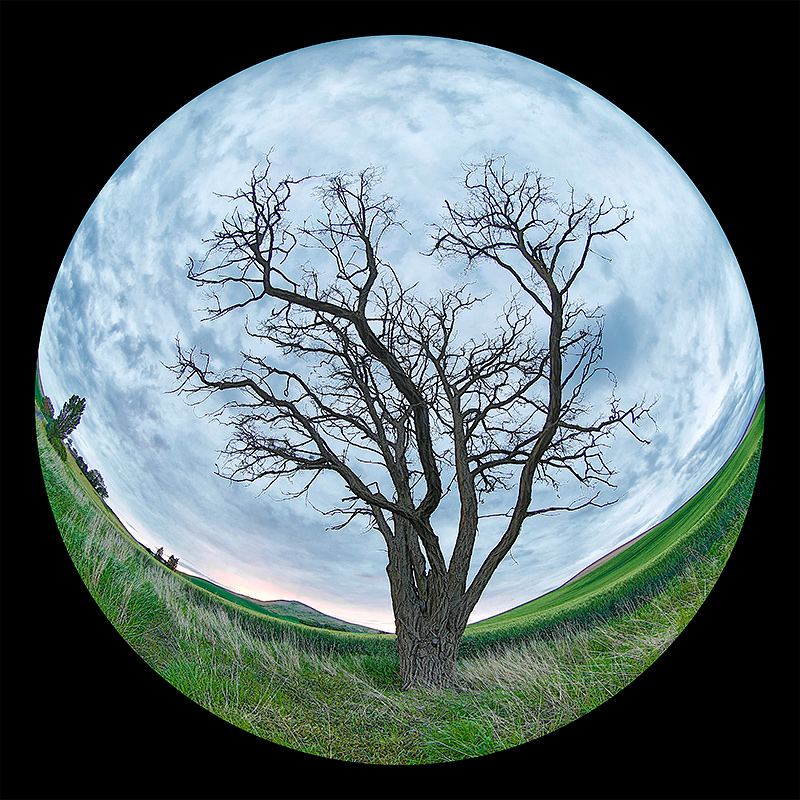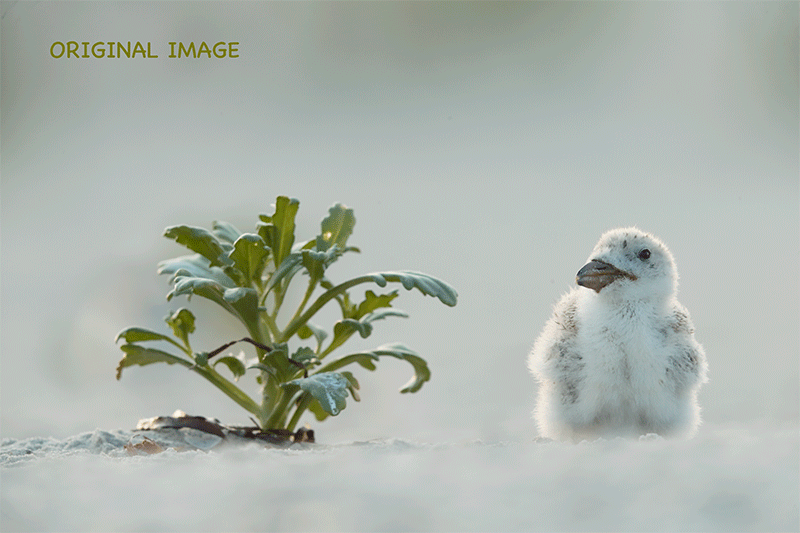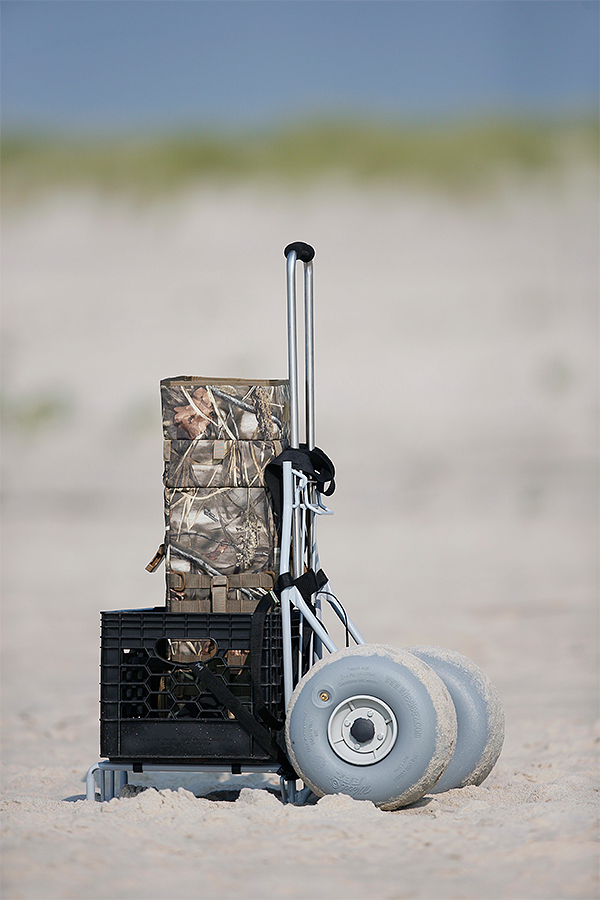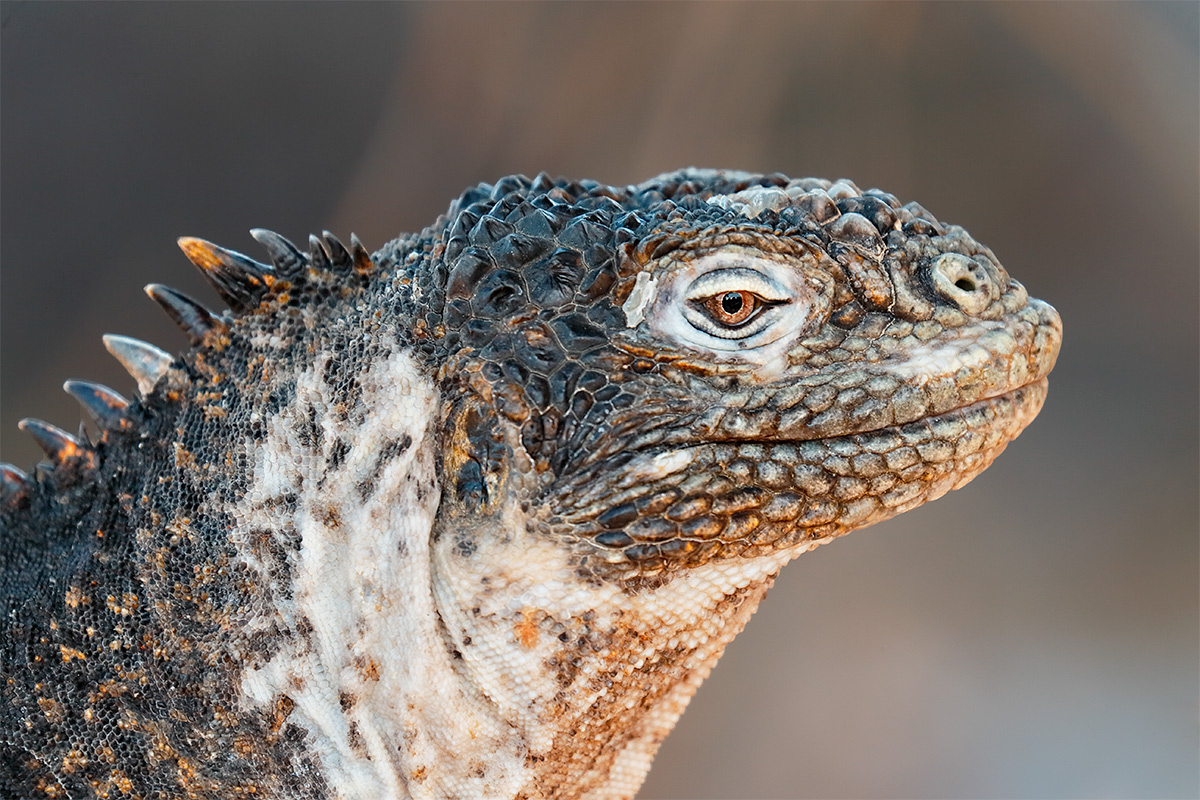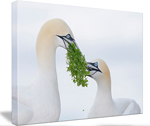August 26th, 2015 Stuff
It is 5:26am on Monday, August 24, 2015. I have been up for a few hours. The boat’s generator just came on and we will be departing to the south about 1 1/2 days late for our Inside Passage adventure.
This blog post is scheduled to be published from the Cloud at 6:00am on Wednesday, August 26, 2015.
Bill Lloyd Save Your Butt Tip…
In the blog post here, where I mentioned the posterior pain that came with 20 hours of travel and much too much sitting, Bill Lloyd who had so much fun on the UK Puffins Trip that he immediately signed up for our Namibia IPT, was kind to leave this potentially pain relieving solution:
I mentioned this briefly on the UK Puffin IPT to Denise: the ThermaRest Travel Cushion really has made a huge difference in my travel comfort. So much so, that I use it while driving long distances as well. It weighs only a couple ounces and is self-inflating; the key is that after it fills you need to let out the air until it is only about 1/3 full> It rolls up nicely and will easily slip into the top of the great Think Tank Urban Disguise bags that you both use. If you don’t try it, you’ll never know how great it is.
If I have to get some sleep on a plane, the ThermaRest cushion, foam earplugs, and even those silly sleep mask blindfolds are a must. And they do work.
You’ve got my sympathy, keepin’ the nether regions happy is a top priority for me when I travel! Bill
Following Up With Bill
Not being one to part so quickly with 30 bucks I had a few more questions for Bill. I sent him the Amazon link and asked if I had the correct item. He responded:
Yep that’s it. It’s self inflating. Open the valve and in a minute or two it’s fluffy. Close the valve and sit on it, then slowly open valve to let air out. You want it something like only a third full, your butt almost contacting the seat. If you’re perched, rolling around on the thing, that’s too much air. Bill
Then I wrote back as follows: Am I correct in thinking that it gets down to almost nothing when you squeeze all the air out?
He answered:
Pretty close. I open the valve and roll up as tight as I can from the opposite end. Close the valve and it stays rolled up. I’ve got an Urban Disguise like you guys, it can go in the top center compartment rolled, or I used to pull it out flat (deflated) and stash it under the large side flap – B.
I am having Jen order one for me today. You can order yours by clicking on the logo link above. Many thanks Bill!
Why Bill Signed Up for the Nambia IPT
It was great to see you again.
As you know, I haven’t been on an IPT in some years. I came away from the 2015 UK Puffins and Gannets IPT surprised at how much my photography improved with the “refresher” course. Nothing beats making images on an all day week-long intensive experience like that – I’d truly forgotten. Those of us to your right hadn’t even noticed the Razorbill pair copulating until you called out to us: we were still getting puffins in flight.
So, it was a no-brainer signing up for Namibia! When I saw the price, I had my deposit in the mail even before the itinerary was up – and I think waiting for years to go to Africa is going to pay off with this trip. Really looking forward to traveling with you and Denise, getting wildlife and landscape images together doesn’t seem to be the rule with most tours I’ve looked at in the past – it’s usually one or the other. Be seein’ ya!
Bill
Join Us In Namibia
Learn how by clicking here. So far we have assembled a cast of international participants: one from the US, two from South Africa, one from Hong Kong, and one from Australia. More than a few are world class photographic talent….
Facebook
Be sure to like and follow BAA on Facebook by clicking on the logo link upper right. Tanks a stack!
Support the BAA Blog. Support the BAA Bulletins: Shop B&H here!
We want and need to keep providing you with the latest free information, photography and Photoshop lessons, and all manner of related information. Show your appreciation by making your purchases immediately after clicking on any of our B&H or Amazon Affiliate links in this blog post. Remember, B&H ain’t just photography!
…..
Amazon.com
Those who prefer to support BAA by shopping with Amazon may use this link:
Amazon Canada
Many kind folks from north of the border, eh, have e-mailed stating that they would love to help us out by using one of our affiliate links but that living in Canada and doing so presents numerous problems. Now, they can help us out by using our Amazon Canada affiliate link by starting their searches by clicking here. Many thanks to those who have written.
Typos
In all blog posts and Bulletins, feel free to e-mail or to leave a comment regarding any typos or errors. Just be right :).
August 25th, 2015 Stuff
I started this blog post last week when I was at my Mom’s. I am finishing while sitting in 22B at 35,000 en route from JFK to SLC and then on to Seattle and Juneau. Sitting next to me in 22A working on some of her Iceland images is denise ippolito. We are headed for our SE Alaska Inside Passage cruise. There are gale warnings for Saturday and Sunday. Yikes!
This post took about an hour to prepare. If all goes well, it will be published automatically at 6:00am on Tuesday, August 25, 2015.
Can Denise’s Tree Be a Circle?
The funny thing about photos of Denise’s tree is that whenever I look at them my left hip hurts…. A lot. See here for “here ” for “Hip-wrecked on the Prairie” if you missed that tale.
Canon EF 8-15mm f/4L Fisheye USM Fisheye Ultra-Wide Zoom Lens
The Canon EF 8-15mm f/4L Fisheye USM Fisheye Ultra-Wide Zoom lens is fun to use. It gives you a perfect circle at 8mm with a full frame camera body–be sure to zoom out fully, and it gives you a 15mm fish eye when used with a 1.6X crop factor camera like the EOS 7D Mark II. Again, you must be sure to zoom out completely or you will clip the corners.
Making good images with what I affectionately call “the circle lens” can be a bit tricky…. I have not yet figured out how to work with it on clear days. If you work with the sun behind you your shadow will be an integral part of the image. And if you turn around and include the sun in the frame you will have all sorts of diffraction and flare…. I love playing with the circle lens in the pre-dawn or on cloudy days when both of the problems mentioned above are no longer factors.
|
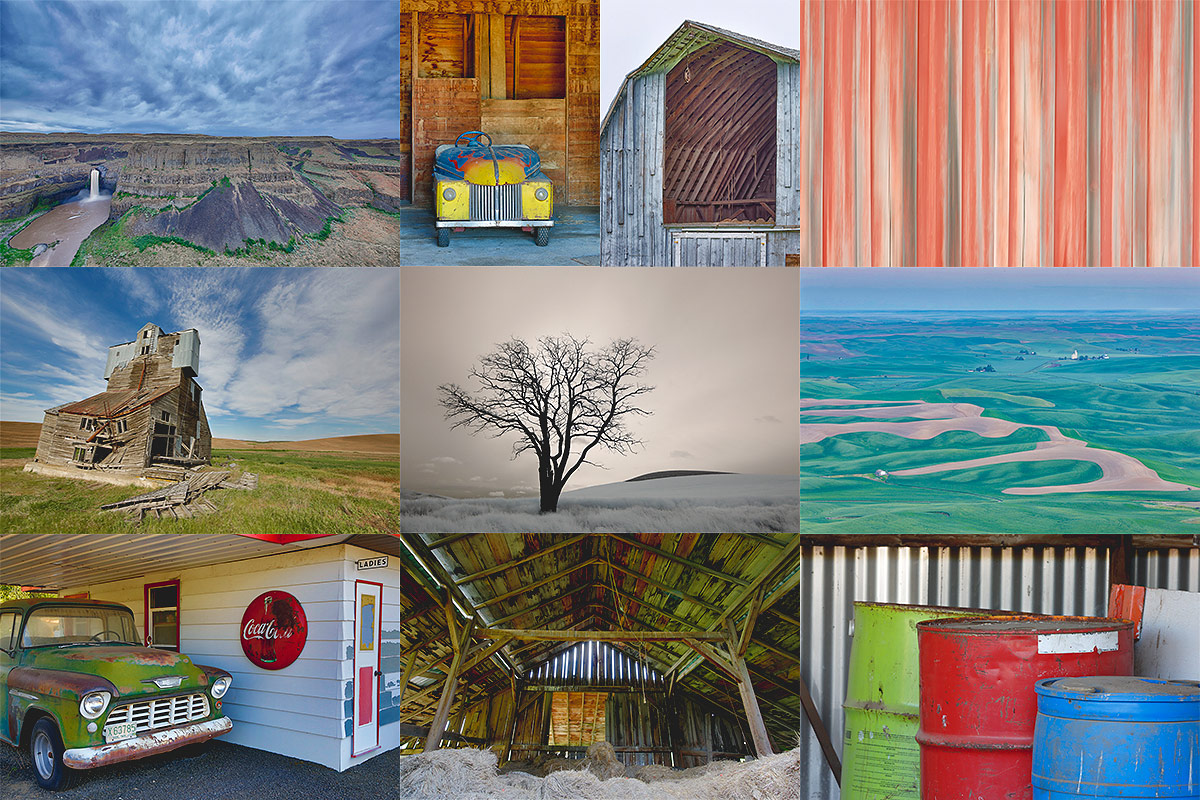
|
|
Subject and focal lengths from upper left to right and then around to center.
Palouse Falls: 11mm; homemade kiddie race car: 105mm; barn siding pan blur: 798mm; Rolling fields diorama: 110mm; Crayola drums: 343 mm; Hay barn interior: 19mm; vintage gas station: 40mm; Dilapidated farm building: 13mm; Denise’s tree Infrared: 20mm.
Images and card design by Arthur Morris/BIRDS AS ART.
|
The Palouse ~ A Creative Adventure/BIRDS AS ART Instructional Photo-Tour (IPT)/Eastern Washington State. June 3-7, 2016/5 Full Days: $1699/Limit 12
The Palouse ~ A Creative Adventure/BIRDS AS ART Instructional Photo-Tour (IPT)/Eastern Washington State. June 10-14, 2016/5 Full Days: $1699/Limit 12
Double Header!
Maximize both your travel dollars and your learning experience by signing up for both IPTs.
|
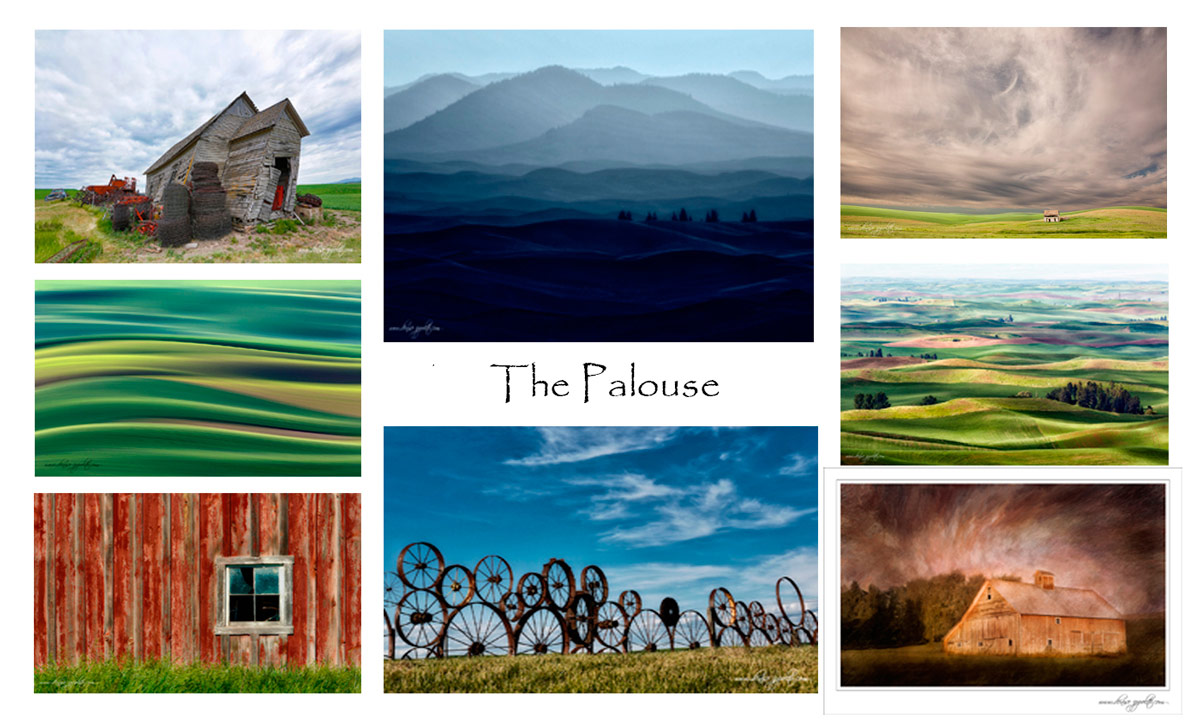
|
|
Images and card design by Denise Ippolito/A Creative Adventure.
|
The Palouse IPTs
Rolling farmlands provide a magical patchwork of textures and colors, especially when viewed from the top of Steptoe Butte where we will likely enjoy spectacular sunrises and possibly a nice sunset. We will photograph grand landscapes and mini-scenics of the rolling hills and farm fields. We will take you to some really neat old abandoned barns and farmhouses in idyllic settings. There is no better way to improve your compositional and image design skills and to develop your creativity than to join us for this trip. Two great leaders: Denise Ippolito and Arthur Morris. Photoshop and image sharing sessions when we have the time and energy…. We get up early and stay out late and the days are long.
After 6 days of back-breaking scouting work in early June 2014 we found all of the iconic locations and, in addition, lots of spectacular new old barns and breath-taking landforms and views. On three additional scouting days in 2015 we discovered several more truly amazing locations. We will teach you what makes one situation prime and another seemingly similar one a waste of your time.
What’s included: In-the-field instruction, guidance, lessons, and inspiration, our newfound but very extensive knowledge of the area, all lunches, motel lobby grab and go breakfasts, and Photoshop and image sharing sessions when possible. There will be a meet and greet at 7:30pm on the evening before each workshop begins.
You will learn and hone both basic and advanced compositional and image design skills. You will learn to get the right exposure every time. You will learn to develop your creative eye. You will learn the basics of HDR (high dynamic range) photography. You will learn a variety of in-camera creative techniques. Most importantly you will learn to see the situation and to create a variety of top-notch images. Do see both of our blogs for lots more on that in the coming weeks. You will learn how the quality and direction of light combine to determine the success of your images. And–please don’t gasp–we will be working quite a bit with sidelight when creating landscapes. Lastly, we will be doing some infrared photography.
To Sign Up
A non-refundable $699 deposit is due now. The balance will be due on February 15, 2016. If we do not receive your check for the balance on or before the due date we will try to fill your spot from the waiting list. Whether or not your spot is filled, you will lose your deposit. If not, you can secure your spot by paying your balance.
With the spectacular success that we enjoyed in 2015 it seems quite likely that this one will fill up very quickly. Please let me know via e-mail that you will be joining us. Then you can either call Jim or Jennifer at 863-692-0906 during business hours or send us a check to leave a deposit; the latter is preferred. If by check, please make out to “Arthur Morris” and mail it to: Arthur Morris/BIRDS AS ART, PO Box 7245, Indian Lake Estates, FL, 33855. If you have any questions, please feel free to contact us via e-mail: artie or denise.
Travel Insurance Services offers a variety of plans and options. Included with the Elite Option or available as an upgrade to the Basic & Plus Options. You can also purchase Cancel for Any Reason Coverage that expands the list of reasons for your canceling to include things such as sudden work or family obligation and even a simple change of mind. You can learn more here: Travel Insurance Services. Do note that many plans require that you purchase your travel insurance within 14 days of our cashing your deposit check. Whenever purchasing travel insurance be sure to read the fine print carefully even when dealing with reputable firms like TSI.
Facebook
Be sure to like and follow BAA on Facebook by clicking on the logo link upper right. Tanks a stack!
Support the BAA Blog. Support the BAA Bulletins: Shop B&H here!
We want and need to keep providing you with the latest free information, photography and Photoshop lessons, and all manner of related information. Show your appreciation by making your purchases immediately after clicking on any of our B&H or Amazon Affiliate links in this blog post. Remember, B&H ain’t just photography!
…..
Amazon.com
Those who prefer to support BAA by shopping with Amazon may use this link:
Amazon Canada
Many kind folks from north of the border, eh, have e-mailed stating that they would love to help us out by using one of our affiliate links but that living in Canada and doing so presents numerous problems. Now, they can help us out by using our Amazon Canada affiliate link by starting their searches by clicking here. Many thanks to those who have written.
Typos
In all blog posts and Bulletins, feel free to e-mail or to leave a comment regarding any typos or errors. Just be right :).
August 24th, 2015 Stuff
I am sitting on the boat just after breakfast again looking at a second day of high winds and rain. That’s why they call it nature photography….
This blog post should be published automatically from the Cloud at 6:00am on Monday, August 24, 2015. Enjoy.
Please Help Support My Work on the BAA Blog
Thanks a Stack! It’s been a great summer!
The last ten weeks as a B&H affiliate have been quite rewarding. Thanks a stack to the many who used our B&H links for purchases large and small. Right now I am working closely with my B&H rep to have four 400 DO and two 100-400 II BAA Affiliate orders expedited. It has been nearly impossible to come by a 400 DO II. I am hoping that my efforts pay dividends fairly soon…. 100-400IIs are now in stock at B&H. The 400 DO II lenses continue to be in very short supply. The sooner you order, the sooner you will get yours; I am working closely with my contact at B&H to have the current orders expedited when a shipment does actually arrive.
To show your appreciation for my efforts here, we ask, as always, that you use our the B&H and Amazon affiliate links on the right side of the blog for all of your purchases. B&H Is recommended for you major photography gear purchases, Amazon for your household, entertainment, and general purpose stuff. Please check the availability of all photographic accessories in the BIRDS AS ART Online Store, especially Gitzo tripods, Wimberley tripod heads, and the like. We sell only what I have used, have tested, and can depend on. We will not sell you junk. We know what you need to make creating great images easy and fun. And we are always glad to answer your gear questions via e-mail.
I would of course appreciate your using our B&H affiliate links for all of your major gear, video, and electronic purchases. For the photographic stuff mentioned in the paragraph above we, meaning BAA, would of course greatly appreciate your business. Here is a huge thank you to the many who have been using our links on a regular basis and visiting the BAA Online store as well.
Selling Your Used Photo Gear Through BIRDS AS ART
Selling your used (or like-new) photo gear through the BAA Blog or via a BAA Online Bulletin is a great idea. We charge only a 5% commission. One of the more popular used gear for sale sites charges a minimum of 20%. Plus assorted fees! Yikes. The minimum item price here is $500 (or less for a $25 fee). If you are interested please e-mail with the words Items for Sale Info Request cut and pasted into the Subject line :). Stuff that is priced fairly–I offer free pricing advice, usually sells in no time flat. In the past few weeks we have sold nearly everything in sight. Do know that prices on some items like the EOS-1D Mark IV, the old Canon 500mm, the EOS-7D, and the original 400mm IS DO lens have been dropping steadily.
You can see all of the current listings here.
|
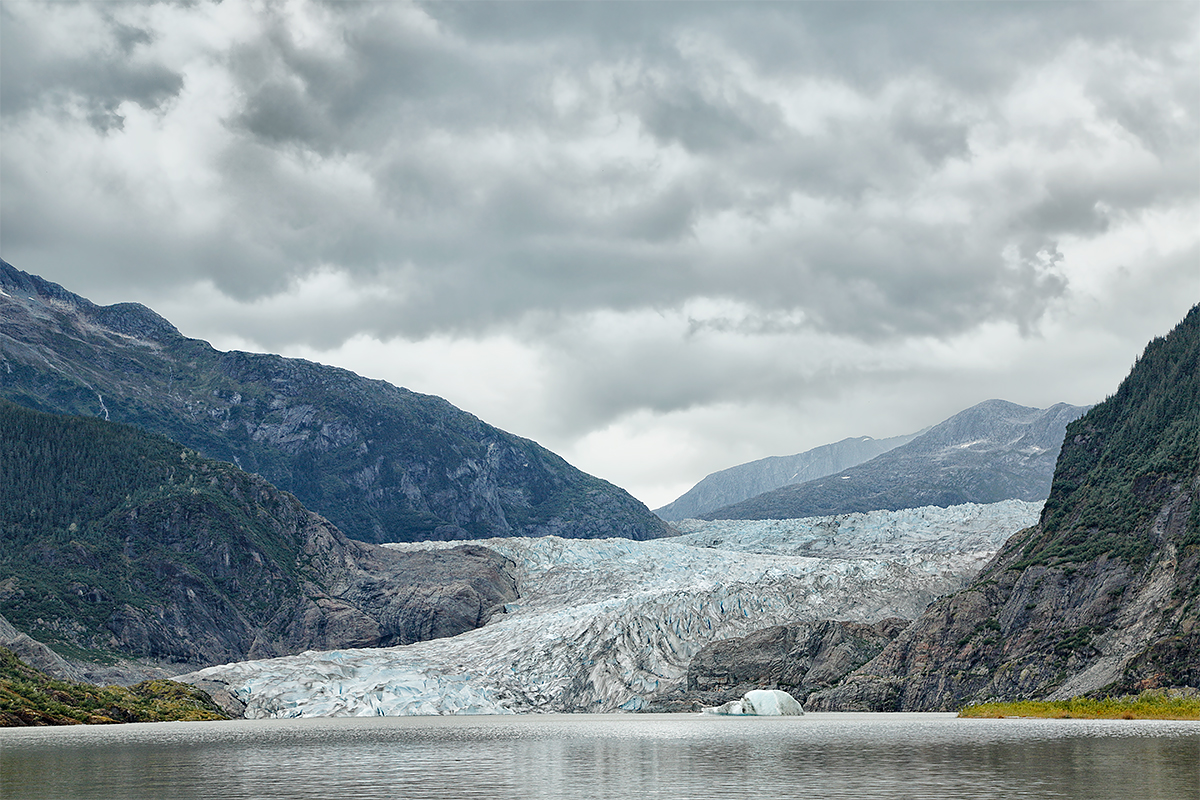
|
|
This image was created with the hand held Canon EF 24-105mm f/4L IS USM lens (at 65mm) and the Canon EOS 5D Mark III. ISO 400. Evaluative metering +1 1/3 stops: 1/400 sec. at f/8.
Center AF point/AI Servo Expand/Rear Focus AF on the center of the image about 1/5 of the way into the frame and re-compose. Click here to see the latest version of the Rear Focus Tutorial.
Image #1: Glacier near Juneau, AK wide shot
|
The Benefit of Gale Force Winds…
Our inside passage cruise departure was delayed for at least a day on Saturday by a big storm with gale force winds. We lucked out that afternoon as the rain let up for a few hours and we visited a beautiful glacier. The storm clouds turned out to be a big plus. I went back and forth on bringing the tripod and both tripod heads, the Mongoose and a small ballhead, and once we arrived at the location I was sorry that I had opted to leave them on the boat. How many times do we have to learn lessons like that before we quit being lazy? (Note: the folks who supplied us with the Giotto’s tiny ballhead that I have used for years have gone belly-up; I am hoping to get my hands on a viable alternative soon.)
The Wide View
I sat on the ground using my elbows-on-knees tripod technique to ensure adequate sharpness. And since I was creating originals for potential HDRs I turned off Auto Align. As things worked out, I went with a single image. I did the sky with NIK Viveza using three large control points and the foreground after selecting it with the Quick Selection Tool with my NIK Color Efex Pro 50-50 recipe reduced to 25%. Fast and easy.
|
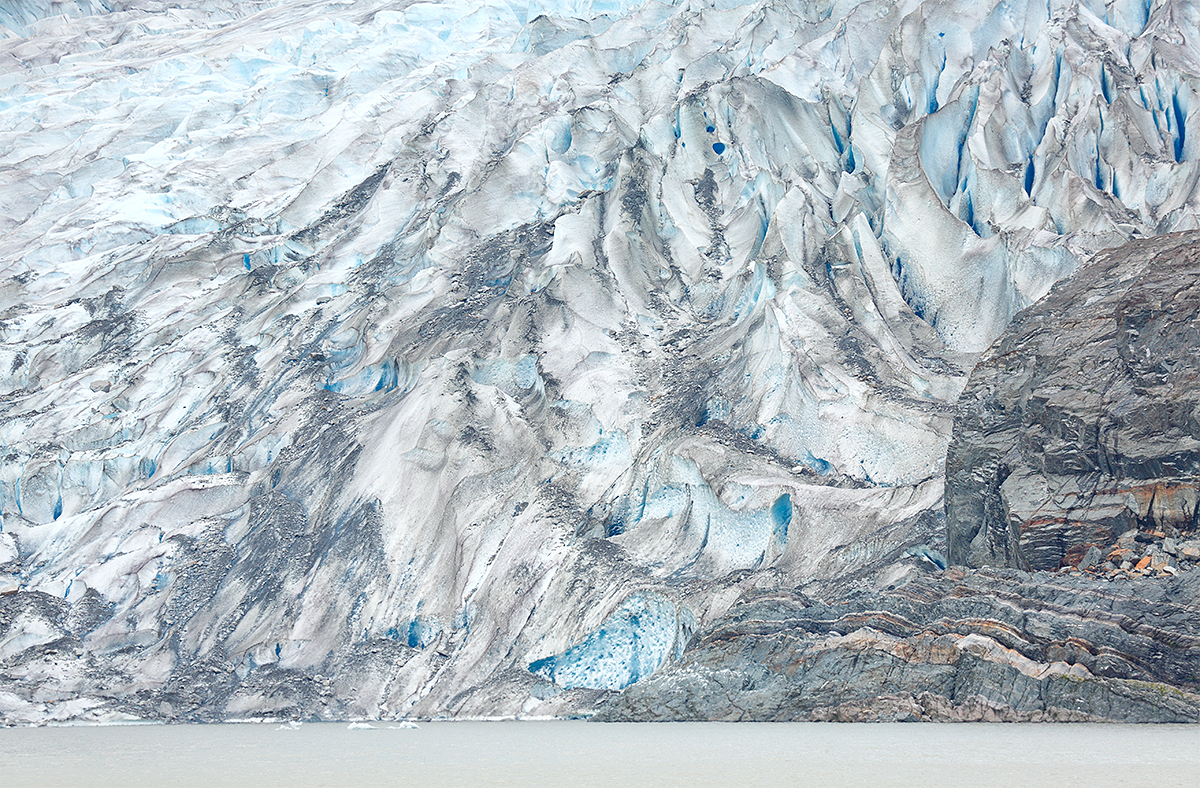
|
|
This image was created with the hand held Canon EF 100-400mm f/4.5-5.6L IS II USM lens (at 400mm) and the Canon EOS 5D Mark III. ISO 400. Evaluative metering +1 1/3 stops: 1/80 sec. at f/8.
Center AF point/AI Servo Expand/Rear Focus AF about 1/3 of the way into the frame on the large rock on our right and re-compose. Click here to see the latest version of the Rear Focus Tutorial.
Image #2: Glacier near Juneau, AK tight shot
|
The Tight View
I switched the 24-105 for the 100-400 to get fairly tight on the glacier. Again I went with a single image. I like the colors and patterns.
Your Fave?
Which of today’s two images do you like best? Be sure to let us know why.
The 5D III
The 5D III is always my first choice for scenics, flowers, and urbex photography. I love the relatively large images files and the 5D III’s excellent control of noise (provided that you expose to the right).
Canon’s Two 50+ Megapixel Camera Bodies
At some point soon I will surely get my hands on a Canon EOS 5DS R DSLR as a potential replacement for the 5D III that has provided yeoman service for so many years. Learn more https://www.birdsasart-blog.com/baa/2015/02/21/canons-two-new-50-megapixel-camera-bodies-you-must-read-this-before-you-buy/ and here to see if this camera or the Canon EOS 5DS DSLR might be best for you.
|
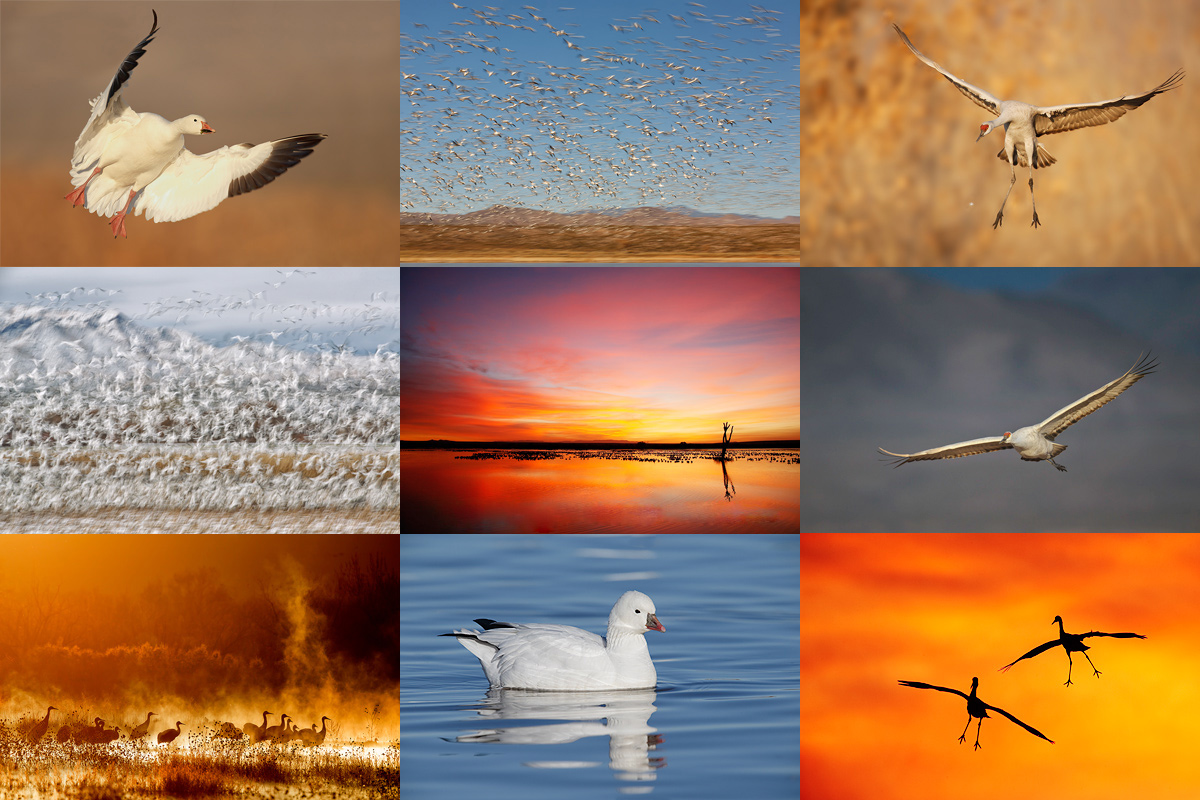
|
|
In 2015, we are offering a 3-DAY IPT before Thanksgiving and a 4-DAY IPT after the holiday. You can attend either and spend Thanksgiving Day with your family. Sign up for both and we will be glad to apply a $100 discount to your balance. We know that there are lots of less costly workshops being offered these days. Many of them are downright cheap. Please remember that you get exactly what you pay for. With us you will have two full time pros there for you every minute we are in the field. Together they have more than 28 seasons of experience at the refuge. If you want the finest in photographic instruction and want to be assured of being in the right spot at exactly the right time every day, do join us.
|
Bosque del Apache 2015 BIRDS AS ART/A Creative Adventure Instructional Photo-Tour (IPT). 3-FULL DAY IPT: NOV 22-24, 2015. $1149. Two great leaders: Denise Ippolito and Arthur Morris. Meet and greet and introductory slide program after dinner on your own at 7:00pm on SAT NOV 21. This trip is a near sell out.
Tens of thousands of Snow Geese, 10,000 Sandhill Cranes, ducks, amazing sunrises, sunsets, and blast-offs. Live, eat, and breathe photography with two of the world’s premier photographic educators at one of their very favorite photography locations on the planet. Top-notch in-the-field and Photoshop instruction. This will make 21 consecutive Novembers at Bosque for artie. This will be denise’s 7th workshop at the refuge. Nobody knows the place better than artie does. Join us to learn to think like a pro, to recognize situations and to anticipate them based on the weather, especially the sky conditions, the light, and the wind direction. Every time we make a move we will let you know why. When you head home being able to apply what you’ve learned on your home turf will prove to be invaluable.
This workshop includes 3 morning and 3 afternoon photography sessions, an inspirational introductory slide program after dinner on your own on Saturday, 11/21, all lunches, and after-lunch digital workflow, Photoshop, and image critiquing sessions.
There is never a strict itinerary on a Bosque IPT as each day is tailored to the local conditions at the time and to the weather. We are totally flexible in order to maximize both the photographic and learning opportunities. We are up early each day leaving the hotel by 5:30 am to be in position for sunrise. We usually photograph until about 10:30am. Then it is back to Socorro for lunch and then a classroom session with the group most days. We head back to the refuge at about 3:30pm each day and photograph until sunset. We will be photographing lots of Snow Geese and lots of Sandhill Cranes with the emphasis on expanding both your technical skills and your creativity.
A $449 non-refundable deposit is required to hold your slot for this IPT. Your balance, payable only by check, will be due on 7/25/2015. If you cancel and the trip fills, we will be glad to apply a credit applicable to a future IPT for the full amount less a $100 processing fee. If we do not receive your check for the balance on or before the due date we will try to fill your spot from the waiting list. Whether or not your spot is filled, you will lose your deposit. If not, you can secure your spot by paying your balance.
Please print, complete, and sign the form that is linked to here and shoot it to us along with your deposit check (made out to “Arthur Morris.”) You can also leave your deposit with a credit card by calling the office at 863-692-0906. If you register by phone, please print, complete and sign the form as noted above and either mail it to us or e-mail the scan. If you have any questions, please feel free to contact me via e-mail.
|
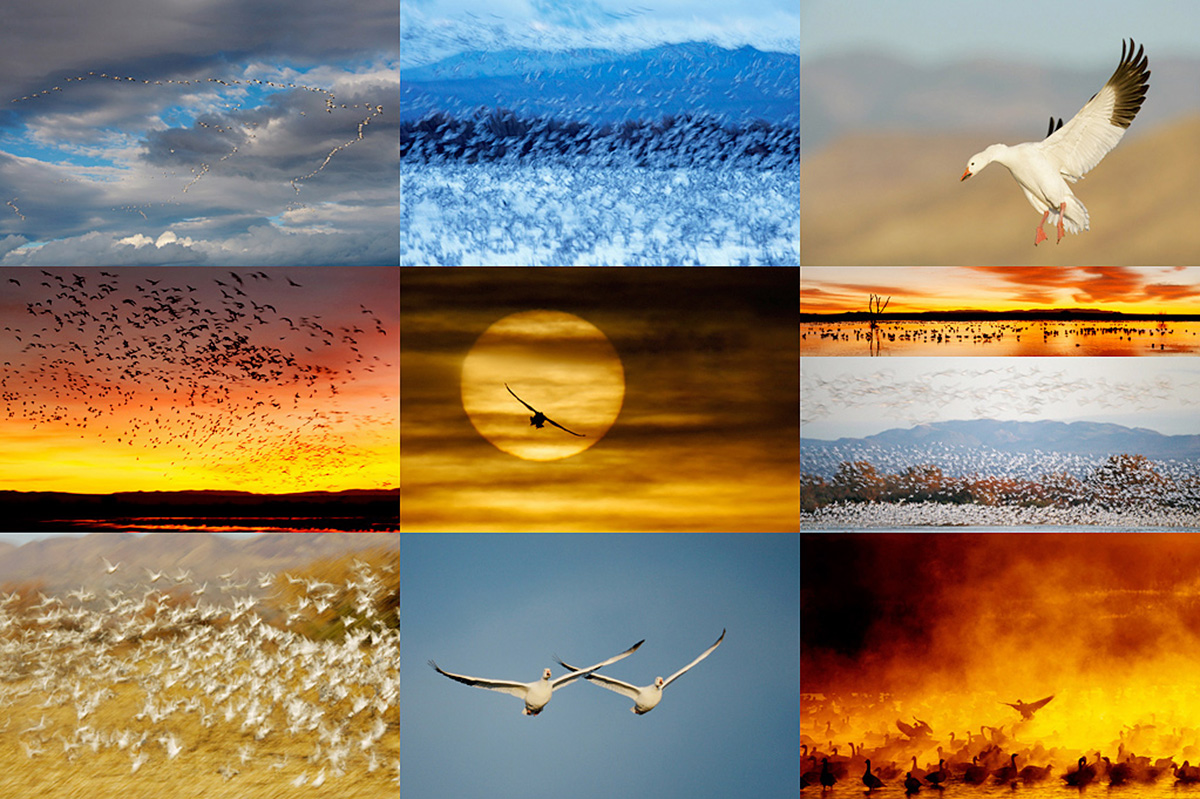
|
|
In 2015, we are offering a 3-DAY IPT before Thanksgiving and a 4-DAY IPT after the holiday. You can attend either and spend Thanksgiving Day with your family. Sign up for both and we will be glad to apply a $100 discount to your balance.
We know that there are lots of less costly workshops being offered these days. Please remember that you get exactly what you pay for. If you want the finest in photographic instruction and want to be assured of being in the right spot at exactly the right time, do join us.
|
Bosque del Apache 2015 BIRDS AS ART/A Creative Adventure Instructional Photo-Tour (IPT). 4-DAY IPT: (three full and two 1/2 DAYS) NOV 28-DEC 2, 2015. $1499. Two great leaders: Denise Ippolito and Arthur Morris. Meet and greet at 3pm on SAT NOV 28 followed by an afternoon photo session at the crane pools and the introductory slide program after dinner on your own.
Tens of thousands of Snow Geese, 10,000 Sandhill Cranes, ducks, amazing sunrises, sunsets, and blast-offs. Live, eat, and breathe photography with two of the world’s premier photographic educators at one of their very favorite photography locations on the planet. Top-notch in-the-field and Photoshop instruction. This will make 21 consecutive Novembers at Bosque for artie. This will be denise’s 7th workshop at the refuge. Nobody knows the place better than artie does. Join us to learn to think like a pro, to recognize situations and to anticipate them based on the weather, especially the sky conditions, the light, and the wind direction. Every time we make a move we will let you know why. When you head home being able to apply what you’ve learned on your home turf will prove to be invaluable.
This workshop includes 4 afternoon (11/28through 12/1), 4 morning (11/29 to 12/2) photography sessions, an inspirational introductory slide program after dinner on your own on Saturday, 11/28, all lunches, and after-lunch digital workflow, Photoshop, and image critiquing sessions.
There is never a strict itinerary on a Bosque IPT as each day is tailored to the local conditions at the time and to the weather. We are totally flexible in order to maximize both the photographic and learning opportunities. We are up early each day leaving the hotel by 5:30 am to be in position for sunrise. We usually photograph until about 10:30am. Then it is back to Socorro for lunch and then a classroom session with the group most days. We head back to the refuge at about 3:30pm each day and photograph until sunset. We will be photographing lots of Snow Geese and lots of Sandhill Cranes with the emphasis on expanding both your technical skills and your creativity.
A $599 non-refundable deposit is required to hold your slot for this IPT. Your balance, payable only by check, will be due on 7/25/2015. If you cancel and the trip fills, we will be glad to apply a credit applicable to a future IPT for the full amount less a $100 processing fee. If we do not receive your check for the balance on or before the due date we will try to fill your spot from the waiting list. Whether or not your spot is filled, you will lose your deposit. If not, you can secure your spot by paying your balance.
Please print, complete, and sign the form that is linked to here and shoot it to us along with your deposit check (made out to “Arthur Morris.”) You can also leave your deposit with a credit card by calling the office at 863-692-0906. If you register by phone, please print, complete and sign the form as noted above and either mail it to us or e-mail the scan. If you have any questions, please feel free to contact me via e-mail.
Facebook
Be sure to like and follow BAA on Facebook by clicking on the logo link upper right. Tanks a stack!
Support the BAA Blog. Support the BAA Bulletins: Shop B&H here!
We want and need to keep providing you with the latest free information, photography and Photoshop lessons, and all manner of related information. Show your appreciation by making your purchases immediately after clicking on any of our B&H or Amazon Affiliate links in this blog post. Remember, B&H ain’t just photography!
…..
Amazon.com
Those who prefer to support BAA by shopping with Amazon may use this link:
Amazon Canada
Many kind folks from north of the border, eh, have e-mailed stating that they would love to help us out by using one of our affiliate links but that living in Canada and doing so presents numerous problems. Now, they can help us out by using our Amazon Canada affiliate link by starting their searches by clicking here. Many thanks to those who have written.
Typos
In all blog posts and Bulletins, feel free to e-mail or to leave a comment regarding any typos or errors. Just be right :).
August 23rd, 2015 What’s Up?
We finished the 2015 Galapagos Photo Cruise with a spectacular morning at North Seymour Island. Our session lasted from 6:00 till 9:30am and was blessed with spectacular early morning light and then again by thickening cloud cover. Just what the doctor ordered. We spent a magical morning photographing fluffy white frigatebird chicks, adults with inflated red pouches both perched and in flight, and displaying Blue-footed Boobies. Best of all was a bright yellow Land Iguana basking in golden early morning light.
When I typed this a few weeks ago, I needed to take a quick shower and finish packing when we got back on board the Samba I had not yet had time to take a look at my Day 15 images. We bid a fond farewell to our ship, our great guide, and our great crew. Most folks wound up tipping several crew members above and beyond the already generous tip schedule. I began working on this blog post late in the trip, continued on the flight to Guayaquil, and am putting the finishing touches on it on my Super Shuttle ride from my Mom’s in Holbrook to JFK for the flights to Juneau with Denise Ippolto. You can check out denise’s brand new Iceland gallery here. Amazingly I nailed her favorite image just from looking at the JPEGS. Then, after a bit of study, I picked her second favorite. She was amazed. I fanned on # 3, but as Meat Loaf said, “Two Out of Three Ain’t Bad.”
The 2017 BIRDS AS ART/A Creative Adventure Galapagos Photo Cruise
I would assume that after viewing the variety and quality of the images in this blog post that most passionate nature photographers would wish to join us on the next Galapagos photo adventure during the second and third weeks of August, 2017. If that includes you, please shoot me an e-mail with the words “Galapagos August 2017 Photo-Cruise” cut and pasted into the Subject Line. Those who previously requested advance notice should be receiving it in short order. The best news is that there will be two great leaders, yours truly and Denise Ippolito.
|
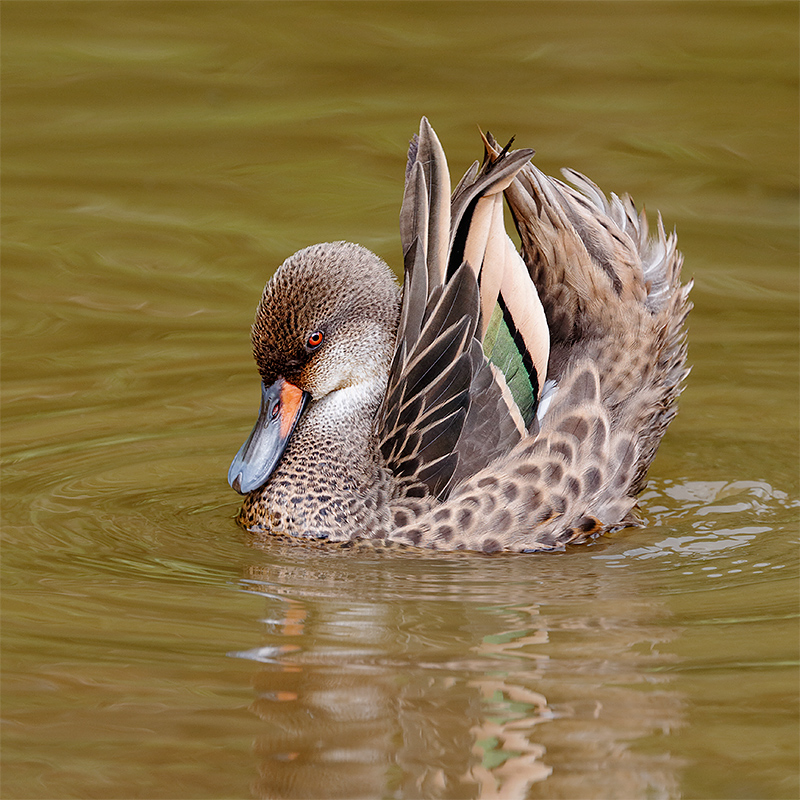
|
|
This image was created at the highlands of Puerto Ayora at 8:55am on July 21, Day 8 of the 2015 Galapagos Photo Cruise. I used the tripod-mounted Canon EF 400mm f/4 DO IS II USM lens with the Canon Extender EF 1.4X III and the Canon EOS-1D X. ISO 800: Evaluative metering at zero: 1/500 sec. at f/10 in Av mode.
Center AF point/Spot AF/Shutter Button AI Servo AF was active at the moment of exposure as is pretty much mandatory with moving subjects. The selected bird’s folded wing as originally framed. Click on the image to see a larger version.
Image #1: Galapagos White-cheeked Pintail displaying male
|
White-cheeked Pintail Displays
While photographing a large Galapagos Tortoise in a tiny pond several in the group had the rare chance to photograph the pintails displaying. Heck, just have them at close range was a pretty rare opportunity. To enjoy the best chances I did not hesitate walking into the muddy water with my pretty much brand knew Merrell hiking boots.
The photographic problem was that drakes displayed without any warning and lasted only a second or two as they tipped forward. I was glad to get the sensor on the bird at all in these circumstances. In the image above the AF point as originally framed was on the bird’s folded wing which was in front of the plane of the bird’s eye. This left the eye a bit less than sharp but after doing some Eye Doctor work and applying a Contrast Mask to the face in post processing the optimized image looked just fine. That’s why God invented Photoshop…
|
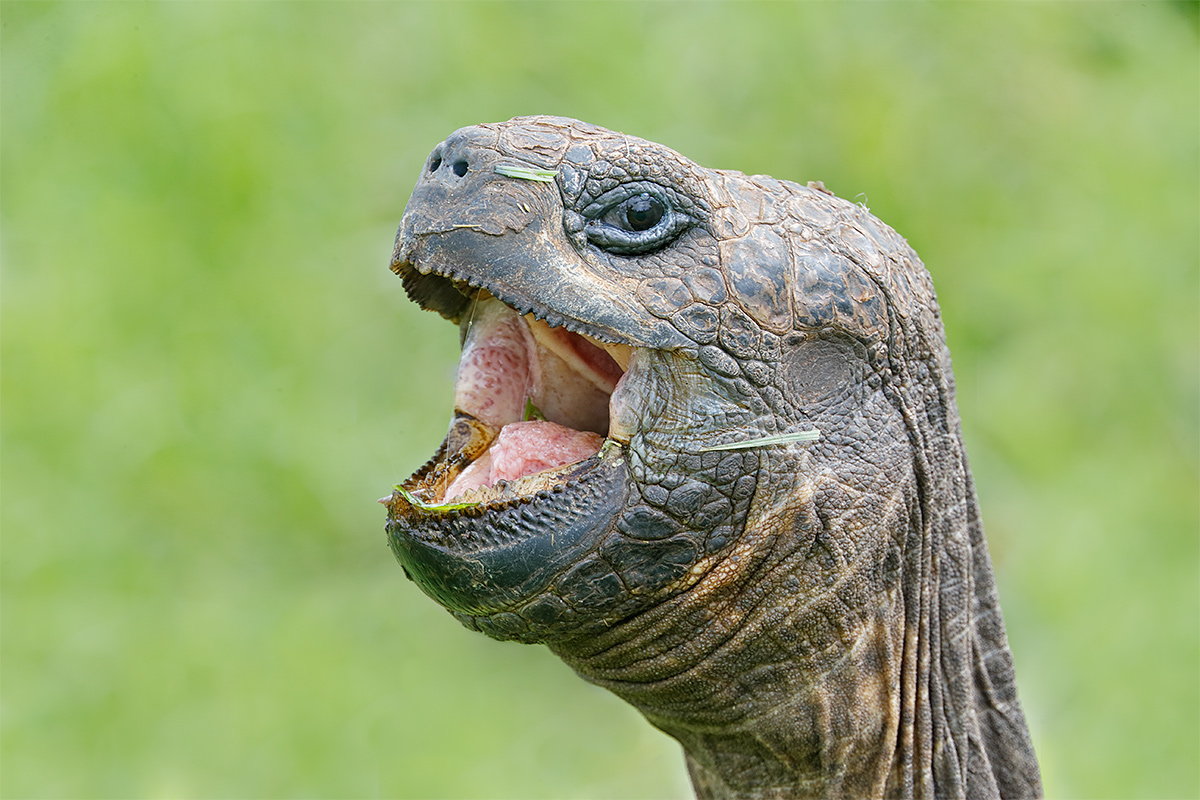
|
|
This image was also created at the highlands of Puerto Ayora at 8:55am on July 21, Day 8 of the 2015 Galapagos Photo Cruise. For this one I used the tripod-mounted Canon EF 400mm f/4 DO IS II USM lens with the Canon Extender EF 2X III and the Canon EOS-1D X. ISO 800: Evaluative metering +1/3 stop: 1/160 sec. at f/11 in Av mode. AWB.
Center AF point/AI Servo Expand/Rear Focus AF (and release) as originally framed. The selected AF point had fallen on the corner of the tortoise’s mouth. Click here to see the latest version of the Rear Focus Tutorial. Click on the image to see a larger version.
Image #2: Galapagos Tortoise (Santa Cruz race), 25-year old youngster yawning.
|
Tortoise Tips
My very best tips for photographing tortoises are to get close, get low, and use some extra depth of field. By getting down to the creature’s eye level you will create more intimate images and effectively move the background farther from the subject thus producing soft, out-of-focus backdrops.
|
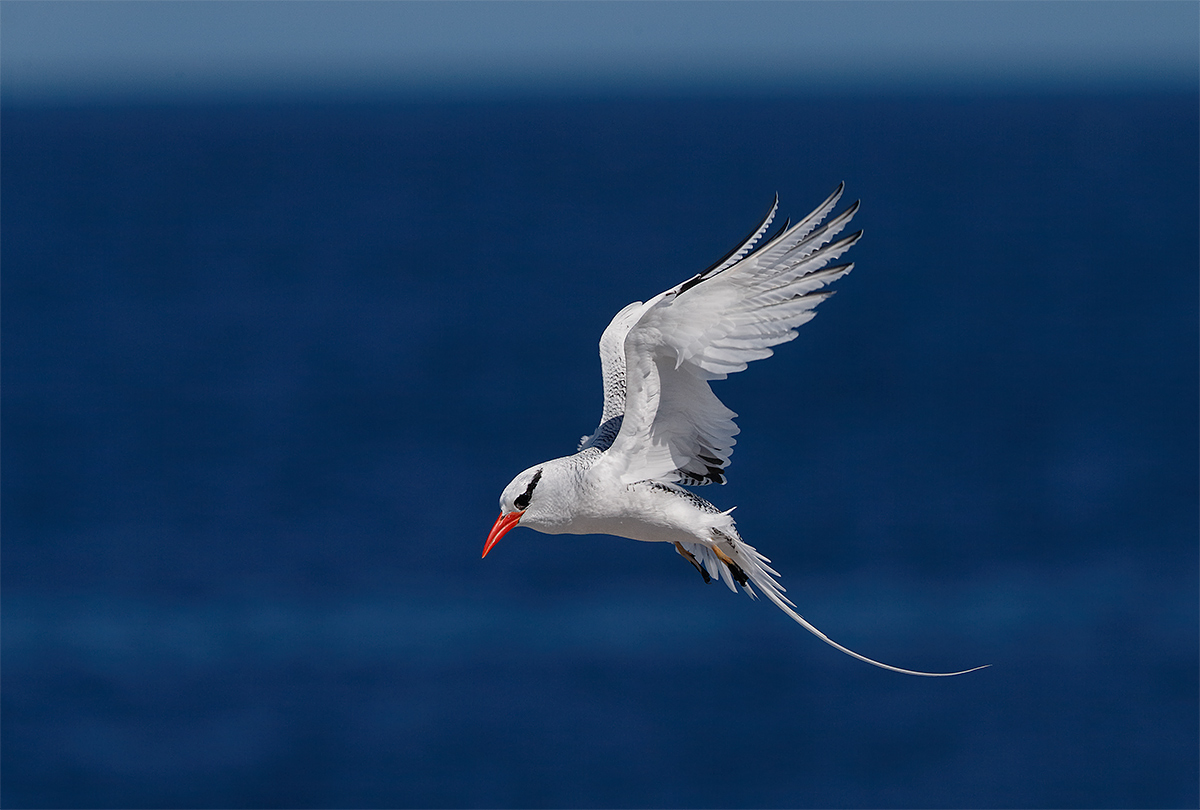
|
|
This image was also created on our second of consecutive Hood Island (Espanola) landings at at 9:35am on Day 11 of the 2015 Galapagos Photo Cruise with the hand held Canon EF 400mm f/4 DO IS II USM lens with the Canon Extender EF 1.4X III and the Canon EOS-1D X. ISO 400: 1/4000 sec. at f/7.1 in Manual mode (via histogram check) is the equivalent of the super-bright white in full sun/ISO 400 exposure: 1/3200 sec. at f/8. AWB.
Center AF point/Shutter Button AF Expand AI Servo AF was of course active at the moment of exposure as is pretty much mandatory with moving subjects. The selected AF point fell on the tips of the bird’s secondaries and tertials; universal advice for better flight photography: “pan faster!” Click on the image to see a larger version.
Image #3: Red-billed Tropicbird approaching cliff nest to land
|
Manual Mode (Again!)
On our first visit to Hood we had some great chances with the tropicbirds. As noted above, the bright whites were as bright as any I have ever encountered anywhere on the planet. As some of the birds were flying against the sky while others, attempting to land at their cliffside nest sites, flew against the dark blue ocean. It was 100% mandatory to work in manual mode to prevent the severe over exposure of the bird if you had been working in Av mode with a bit of plus compensation for the sky…. As noted here recently, Manual mode is the way to go when it comes to flight photography.
|
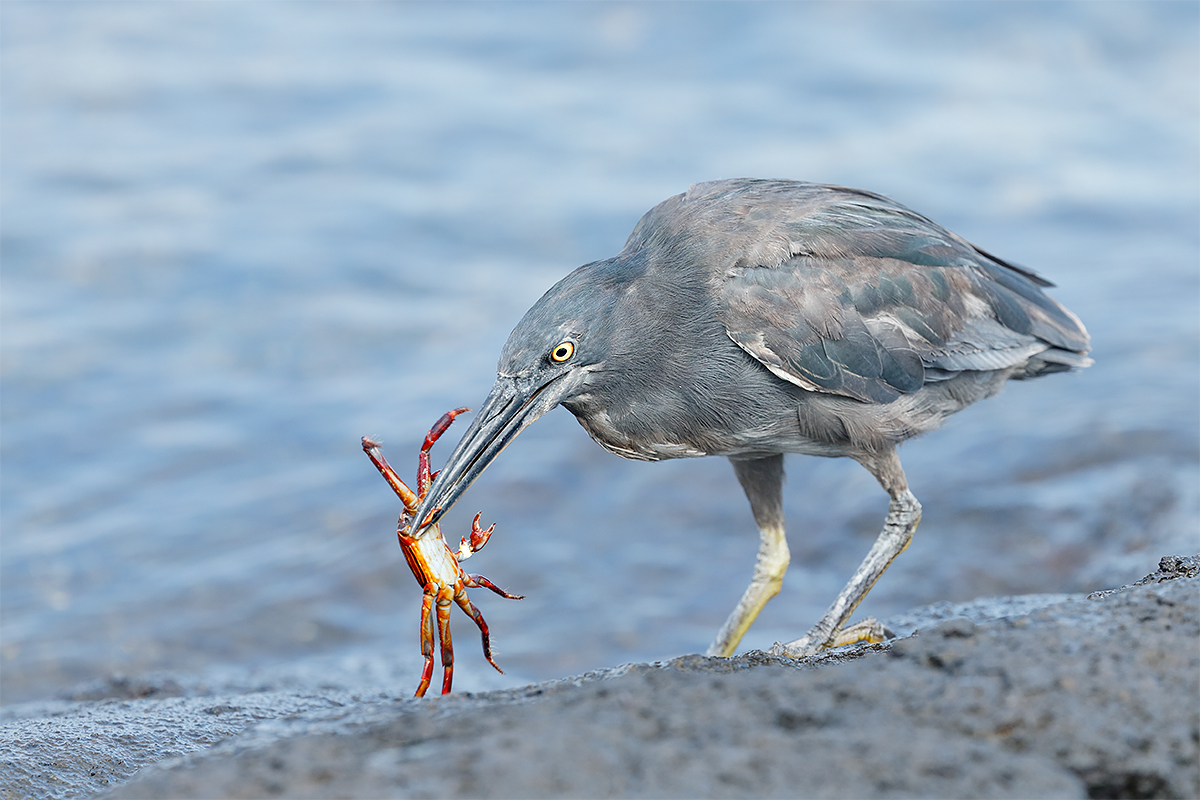
|
|
This image was created at James Bay, Puerto Egas at 9:16am on Day 14 of the 2015 Galapagos Photo Cruise with the hand held Canon EF 400mm f/4 DO IS II USM lens and the Canon EOS-1D X. ISO 800. Evaluative metering +2/3 stop as framed: 1/640 sec. at f/6.3 in Manual mode in barely sunny conditions. AWB.
Center AF point/AI Servo Expand/Rear Button AF was active at the moment of exposure (as is always best when hand holding). The center AF point was on the base of the bird’s bill. Click here to see the latest version of the Rear Focus Tutorial. Click on the image to see a larger version.
Image #4: Adult Striated Heron with struggling Sally Lightfoot Crab
|
Bingo!
Earlier in the morning someone in the group asked if Striated Herons ever caught Sally Lightfoot Crabs. “Only if you are lucky,” I replied. “They never go after a full sized adult but they will try for younger crabs as large as 3-4 inches across the shell. We had been working on the small heron, a close relative of our Green Heron, and had been creating some crab blurs for about an hour when our patience paid off.
I was set up for the blurs and was well out of position when the heron struck its prey. I scrambled to my feet as quickly as possible, changed the mode to Manual, set the ISO to 800, the aperture to f/6.3, and adjusted the shutter speed to 1/640 sec. which showed the +2/3 stop EC that I wanted. All that while praying and moving as quickly as possible to my left to square up to the bird and get pretty much on the weak sun angle. Many folks fail to realize that on all but the darkest of cloudy days that the light still has direction to it. So when it is cloudy bright or even cloudy I strive to get on sun angle to provide even lighting on the subject. My quick prayers were answered and I was rewarded with a few good frames before the heron shook the crab so violently that the legs began to fly off in every direction. The open, somewhat menacing crab claw was the icing on my cake.
Facebook
Be sure to like and follow BAA on Facebook by clicking on the logo link upper right. Tanks a stack!
Support the BAA Blog. Support the BAA Bulletins: Shop B&H here!
We want and need to keep providing you with the latest free information, photography and Photoshop lessons, and all manner of related information. Show your appreciation by making your purchases immediately after clicking on any of our B&H or Amazon Affiliate links in this blog post. Remember, B&H ain’t just photography!
…..
Amazon.com
Those who prefer to support BAA by shopping with Amazon may use this link:
Amazon Canada
Many kind folks from north of the border, eh, have e-mailed stating that they would love to help us out by using one of our affiliate links but that living in Canada and doing so presents numerous problems. Now, they can help us out by using our Amazon Canada affiliate link by starting their searches by clicking here. Many thanks to those who have written.
Typos
In all blog posts and Bulletins, feel free to e-mail or to leave a comment regarding any typos or errors. Just be right :).
August 22nd, 2015 Stuff
It is 4:38am Alaska time as I start this short blog post, 8:38 Eastern time.
We safely made it from JFK to Juneau yesterday.
This blog post was published at about 9:45am Eastern time from my motel room in southeastern Alaska.
Eyes Burning, Butt in Severe Pain….
I left my Mom’s at 5:55am and denise headed to the airport from her home on the Jersey shore. We both arrived way early for our JFK flight to Salt Lake City. At 5+ hours, it was long flight. The seats were more uncomfortable than comfortable. We shared and worked on images, denise’s from Iceland, mine from the Galapagos and the Nickerson Beach IPT. We had a two hour layover in SLC for our next flight to Seattle. By this time, we were both very tired.
It was a beautiful new plane but again the seats were uncomfortable. And they did not recline. Neither of us slept a wink. Last, after another two-hour layover, was our two hour flight to Juneau. An old plane but the seats were a bit roomier. We both slept for the first 1 1/2 hours until the “we are now descending” announcement. For me, that last half hour was brutal and painful, the longest 30 minutes of my life. Oh, did I mention that we were an hour late out of Seattle due to a late-arriving aircraft?
They kept warning of our impending landing but the plane seemed to keep on flying forever. After more than 20 hours of travel my eyes were burning fiercely and my butt ached. Finally we landed at our destination. Though there is a gale warning for today and Sunday, we are hoping to enjoy some good photography over the next seven days. Without anyone getting seasick.
|
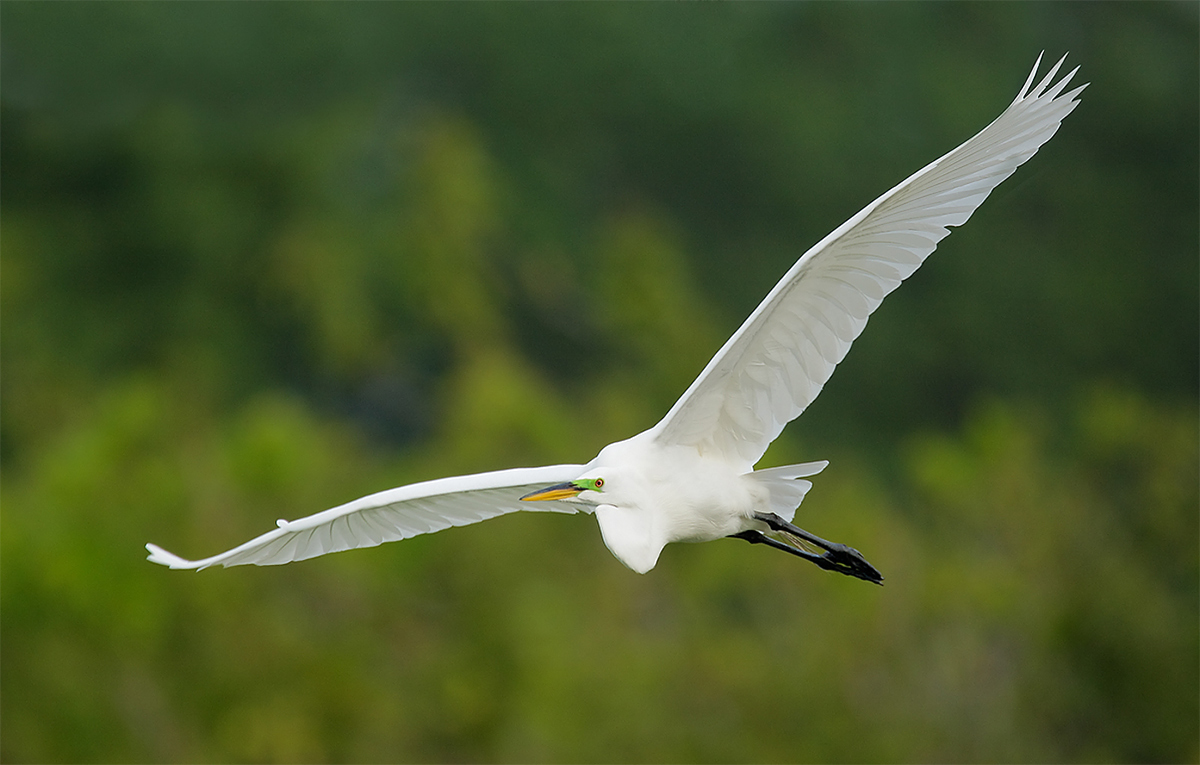
|
This is one of my very favorite 1D s Mark III images. At the Venice Rookery with the old 600mm f/4L IS lens.
Image copyright Arthur Morris/BIRDS AS ART
|
Two Brand New Listings
Used Canon EOS-1Ds Mark III
Brian Miller is offering a used Canon 1Ds Mark III in excellent condition for $1,399. The sale includes the manual, an extra battery, the battery
charger, and insured shipping via FED-EX Ground. Your item will not ship until your check clears unless other arrangements are made.
Please contact Brian by e-mail or by phone at 225-936-6730 (Central time zone).
The 1Ds Mark III produces superb 21.1 mp files and AF is superb as well. The 1Ds III suffered none of the AF system problems that some encountered with the EOS-1D Mark III. I owned and use one for about three years. artie
|
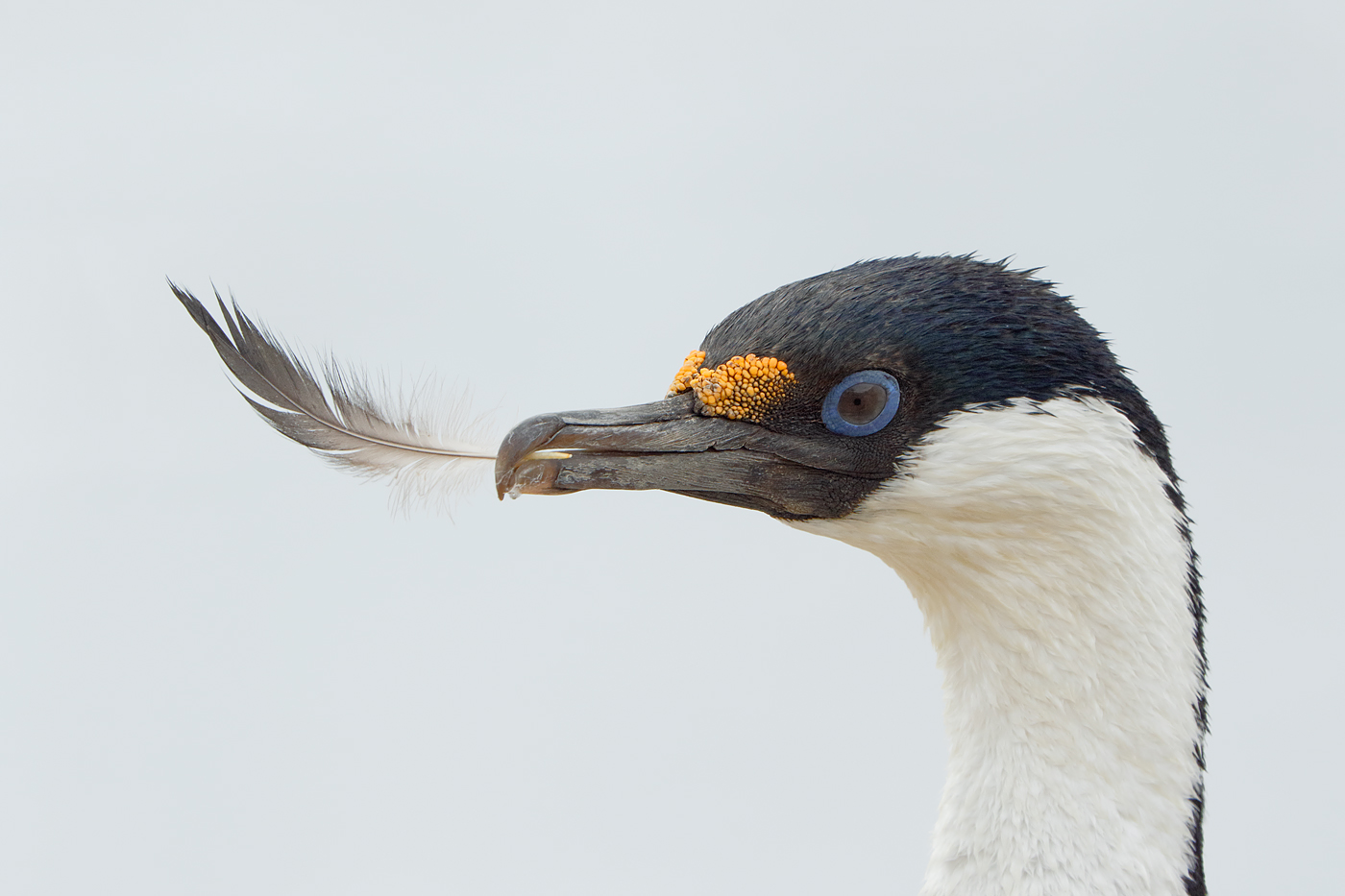
|
I created this image on the last Southern Oceans trip with the 300 II, the 2X III TC, and the 7D II.
Image copyright Arthur Morris/BIRDS AS ART
|
Used Canon EF 300mm f/2.8L IS II USM Lens
Joseph Higbee is offering a used Canon EF 300mm f/2.8L IS ll USM lens in excellent condition for $4750. The sale includes all the items in original box: lens trunk, lens hood, fabric front cover, rear lens cap, wide lens strap, strap for lens case, CD and instruction papers. Also included is a very worn Black LensCoat and a Kirk Enterprises LP 59 lens foot. And insured shipping via UPS Ground. Your item will not ship until your check clears unless other arrangements are made.
Please contact Joe by e-mail e-mail or by phone at (253) 846-1254 or (253) 318-8280 (Pacific time zone).
The 300 II is a superbly sharp and versatile lens that kills with both TCs. In addition, it is a great flight lens. Joe’s price matches the lowest-ever BAA price…. Act now. artie
|
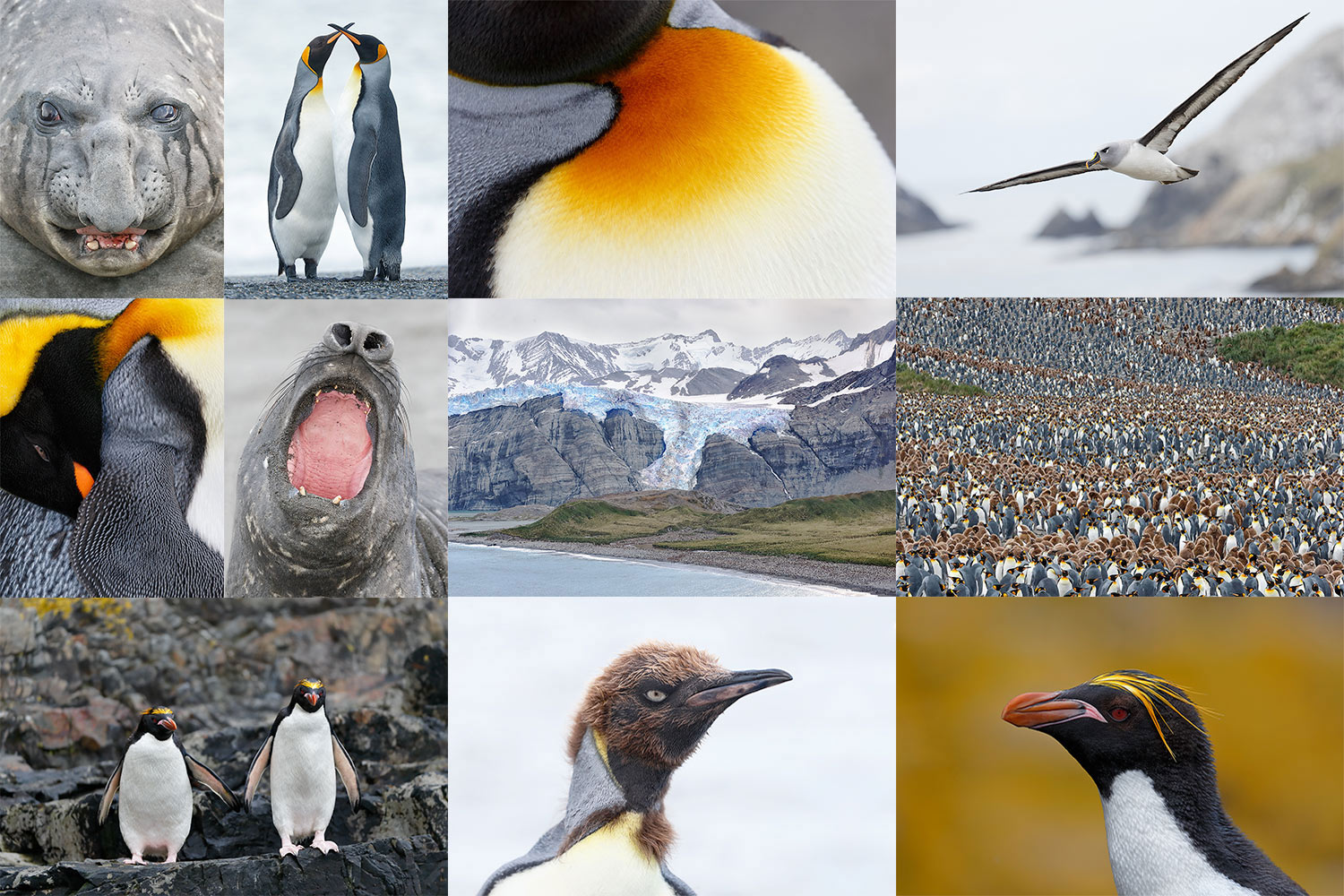
|
|
All of the images on the card were made on South Georgia. This remote wilderness island offers both spectacular scenery and hordes of tame wildlife and birds. From top left clockwise to the center: Southern Elephant Seal, courting King Penguin pair, King Penguin abstract, Grey-headed Albatross, King Penguin rookery on Salisbury Plain, Macaroni Penguin head portrait, King Penguin molting Okum Boy, Macaroni Penguin pair, King Penguin preening, Southern Elephant Seal yawning, the view of Gold Harbour from a Light-mantled Sooty Albatross nest.
Click on the image to see an extra large version.
|
The Southern Ocean
South Georgia Expedition Voyage
I’ve been blessed. I’ve now made four trips to the Southern Ocean, three expeditions that visited the Falklands, South Georgia, and the Antarctic Peninsula, and one to the Falklands and South Georgia. Each was a truly amazing experience. South Georgia has been the star of the show each time: rugged snow covered peaks, tame and abundant wildlife including Southern Elephant Seal and Southern Fur Seal, and penguins: more King Penguins than you could ever have dreamed of. Gentoos. And my favorite, the golden-yellow spaghetti-topped Macaronis. With four trips to South Georgi under my belt, I have a pretty good idea about how to make great images at each of the iconic landings. In addition, we should have some pretty good flight photography sessions from the stern of the ship. I would love the chance to share my knowledge with you.
Going Light
On my recent trip, I found myself going with shorter lenses and lighter gear than on any previous Southern Ocean Expedition. In part that was due to the crop factor of the 7D Mark II, in part because going light makes life (and landings!) much easier. I made many landings with just the 7D II and the 70-200mm f/2.8L IS. I refined the way that I got my gear safely from ship to shore. Lots more on that here soon.
Cheesemans’ Well Deserved Kudos
I know from personal experience that if you are a photographer who is going to invest in Southern Ocean voyage, you will want to put your money on Cheesemans’. No other tour company goes as far out of their way to ensure making every possible safe landing. And no other tour company will have you spending more time on land. Michael Viljeon from South Africa was aboard the Ortelius on a Southern Oceans voyage that preceded the Cheesemans’ trip that we were both on. As we headed back to Ushuaia, he said, “The folks that ran that first trip were pathetic. Too rough. No landing today. Surf too high today. No landing. Wind wrong direction. No landing. Cheesemans’ routinely and safely gets folks on land in conditions where the leaders of other tour companies do not even bother getting out of their bunks.”
Here, from the” Way to Go CES! (Cheeseman’s Ecology Safaris)” blog post here, is one of my favorite Cheesemans’ stories:
The landing at Bailey Head, Antarctica, was especially rewarding to me as I had been sitting in a zodiac 100 yards off shore on my 2007 trip when the zodiac in front of mine swamped and the captain of the ship called off the landing…. Early that day it looked as if my weather Karma might not be working. Ted’s “Good morning shipmates” was followed by the news that we would not be able to land at Bailey Head that morning as the swell was too big. The beach there is sloped tremendously and the sea strives to pull the zodiacs back into the ocean before folks have gotten off with their gear. Tom Murphy had said to me several days before, “We will get you on the beach at Bailey Head.” Ted concluded his morning greetings by saying, “We are sending out a scout team to see if landing is possible.”
After breakfast I was thrilled to hear Ted’s voice again on the PA, “We will be landing at 8am.” Afterwards folks noted that it was the calmest landing ever at this amazingly beautiful spot. My good weather Karma (courtesy of late-wife Elaine) had come through one last time. Along with St. Andrews Bay, it was one of my two favorite super-great once-in-a-lifetime days of the trip. And we even got to enjoy three additional hours at Hannah Point, Antarctica before calling it a wrap and heading for the feared Drake Passage. All thanks to Cheesemans’ Ecology Safaris.
Why Sign Up Through BIRDS AS ART?
If you have been thinking and dreaming of finally visiting South Georgia, this is the trip for you. Quit dreaming and act now. Though I will not be an official leader on this trip, those who have traveled with me know that I cannot help but teach. I will make pre-trip gear recommendations. I will hold informal pre-landing briefings. In the same vein, everyone will receive a free copy of our Antarctica Site Guide once they are paid in full (July 2, 2015). I will be available on the ship to review your images,, answer questions, and conduct informal over-the shoulder Photoshop sessions. And best of all, everyone who signs up under the auspices of BAA are invited to tag along with me on the landings where I will be glad to offer invaluable in-the-field advice. And the same goes for the ship-board birds in flight and marine mammal photography opportunities.
Do join us. To learn how to be part of the BAA group please e-mail me with the words Antarctica/Extended Expedition BAA Info Please cut and pasted into the Subject line. Learn a bit more by scrolling down here.
Important Notes
#1: If you fail to e-mail me as noted directly above, and register directly with CES you MUST let them know that you would like to be part of the BIRDS AS ART group.
#2: Joining the BIRDS AS ART group as above will not cost you one penny.
The Cheesemans’ Ecology Safaris South Georgia Expedition Voyage
An in-depth Adventure aboard the Ortelius: October 29 to November 17, 2015
From the CES website:
We are very excited to be able to bring this special in-depth expedition to you. This is a product of years of experience leading voyages to South Georgia and a passion for everything found here. Our itinerary is specifically designed to take advantage of the vibrant early season on South Georgia when snow blankets the mountains and early summer brings special wildlife treats seldom experienced. We will explore vast colonies of King Penguins, elephant seals in their peak of breeding activity, and colonies of Wandering, Gray-headed, Light-mantled, and Black-browed albatross. This cruise allows us many days to explore this truly unique island, the crown jewel of the Antarctic. The landscape filled with expanses of glaciers pouring into the sea provides rare beauty and photogenic impressiveness that words cannot convey. We will enjoy about nine days in the midst of the most beautiful and wildlife-rich island on the planet! Exceptional leadership expertise will enrich your experience throughout the voyage. Our priority on this special expedition is to give you the maximum time possible in the field so you can explore at your own pace during a special time on South Georgia. Come explore South Georgia with us!
I can personally attest to the accuracy of everything above. 🙂
Facebook
Be sure to like and follow BAA on Facebook by clicking on the logo link upper right. Tanks a stack!
Support the BAA Blog. Support the BAA Bulletins: Shop B&H here!
We want and need to keep providing you with the latest free information, photography and Photoshop lessons, and all manner of related information. Show your appreciation by making your purchases immediately after clicking on any of our B&H or Amazon Affiliate links in this blog post. Remember, B&H ain’t just photography!
…..
Amazon.com
Those who prefer to support BAA by shopping with Amazon may use this link:
Amazon Canada
Many kind folks from north of the border, eh, have e-mailed stating that they would love to help us out by using one of our affiliate links but that living in Canada and doing so presents numerous problems. Now, they can help us out by using our Amazon Canada affiliate link by starting their searches by clicking here. Many thanks to those who have written.
Typos
In all blog posts and Bulletins, feel free to e-mail or to leave a comment regarding any typos or errors. Just be right :).
August 21st, 2015 Stuff
It is dinner time on Thursday as I type this intro. I am pretty much finished packing for the big Alaska trips. Whew. I am leaving at 6am for our 11:30am flight to SLC. The ride to JFK can be as short as 50 minutes but traffic can be beyond horrific and I cannot afford to miss the boat on Saturday morning 🙂
This blog post took about 2 hours to prepare and should be published automatically at 6:00am on Friday, August 20, 2015.
Alan and Sara Levine
I have been friends with Alan and Sara for well more than three decades. We first met some time in the late 1970s (or maybe the early 80s) at a NYC Audubon Society meeting. That was just when I was getting interested in birds. At the time photography was nowhere on my mind. Alan and Sara were about as nice and generous as anyone you would care to meet. Alan was a noted ophthalmic surgeon and had many interests including graphology (the study of handwriting) and later on, bird photography. He once mentioned that my signature was very avian.
Over the years I stayed at the Levine’s then home in the Rockaways in Belle Harbor, Queens, NY. I stayed in their Manhattan apartment. And most often I stayed in their condo on Sanibel, back when Ding Darling was worth visiting. We dined together often. I knew their kids and grandkids and they knew mine. In addition to generous both Alan and Sara were gentle, always smiling, always happy. If you buy any of their used gear you will certainly be getting some good Karma. The Levines recently moved to New Jersey to be close to their kids.
I created each of the images below a while back with the lenses that they are putting up for sale–not their lenses but the same models. You will have to admit that the images look pretty good despite my then relatively crude RAW conversions and image optimization skills. As usual, it ain’t the lens and it ain’t the camera, it’s what’s in the heart, soul, and mind of the person holding the gear….
E-mail Exchange
I wrote the Levines last night and asked them to give today’s post a quick read. They were kind enough to get back to me despite being in the middle of a big family celebration. Here is my response to their e-mail.
AM: Hi Guys, re:
A&S: We were deeply touched by your warm and affectionate description of our long friendship. I think your readers will enjoy learning of our history.
AM: Me too. 🙂
A&S: Here are some minor corrections:
In the 2nd line of Alan and Sara Levine…….”Alan and Sara WAS….” should be “Alan and Sara WERE.” ( We don’t want to grammatically offend any of your English teacher clients.)
AM: Duh. I teach folks that…
A&S: Right after that: “OPTHALMIC” needs another “h” to correctly become OPHTHALMIC
AM: Thanks.
A&S: Technically, Belle Harbor is in Rockaway Park. Far Rockaway is further east on the peninsula and is mostly a place with a lot of low income housing developments. I would suggest you just simplify things by stating it as “….home in Belle Harbor, Queens, NY”
AM: I did that but wanted to mention “the Rocakways” so I did.
A&S: We remember, so clearly, your cross country mii motor home trip with Elaine and a white cat named (??) Snowball starting from our house.
AM: That was Sugar. She survived Elaine by a good many years…
A&S: I can just see your trailer squeezed into our tight driveway. We always felt that your new career as a professional photographer was launched from our place in Belle Harbor. It may, or may not, be so, but we will always think of it that way.
AM: That is correct. We headed from your home to a joint meeting of the Eastern Field Ornithologists and the ABA, the American Birding Association Canon 600mm IS USM Lens (the old six) in very good+ condition was sold for $4999.00 by Dean Newman in late August, 2015.. It was there that I met the late Roger Tory Peterson. I had given him a copy of one of my early booklets on bird photography. He stood before the gathering and stated, “Arthur Morris teaches you more about bird photography in 40 pages than I learned in 40 years….”
A&S: We are very excited about this posting, and look forward to the sales. I’ll let you know how it goes.. Have a great trip to Alaska; it s one of our favorite places. Many moons ago we went there for a month with another couple, camped out in trailer in Denali and even made it out to Pribiloffs. Great time and great photos. Love to you and the family, Alan and Sara
AM: Thanks and ditto and later and love, a
Selling Your Used Photo Gear Through BIRDS AS ART
Selling your used (or like-new) photo gear through the BAA Blog or via a BAA Online Bulletin is a great idea. We charge only a 5% commission. One of the more popular used gear for sale sites charges a minimum of 20%. Plus assorted fees! Yikes. The minimum item price here is $500 (or less for a $25 fee). If you are interested please e-mail with the words Items for Sale Info Request cut and pasted into the Subject line :). Stuff that is priced fairly–I offer free pricing advice, usually sells in no time flat. In the past two months we have sold almost everything in sight. Do know that prices on some items like the EOS-1D Mark IV, the old Canon 500mm, the EOS-7D, and the original 400mm IS DO lens have been dropping steadily. I just learned on Friday morning that Dean Newman’s Canon 600mm f/4L IS USM Lens (the old six) in very good+ condition sold for the asking price, $4999.00.You can see the complete listings here.
|
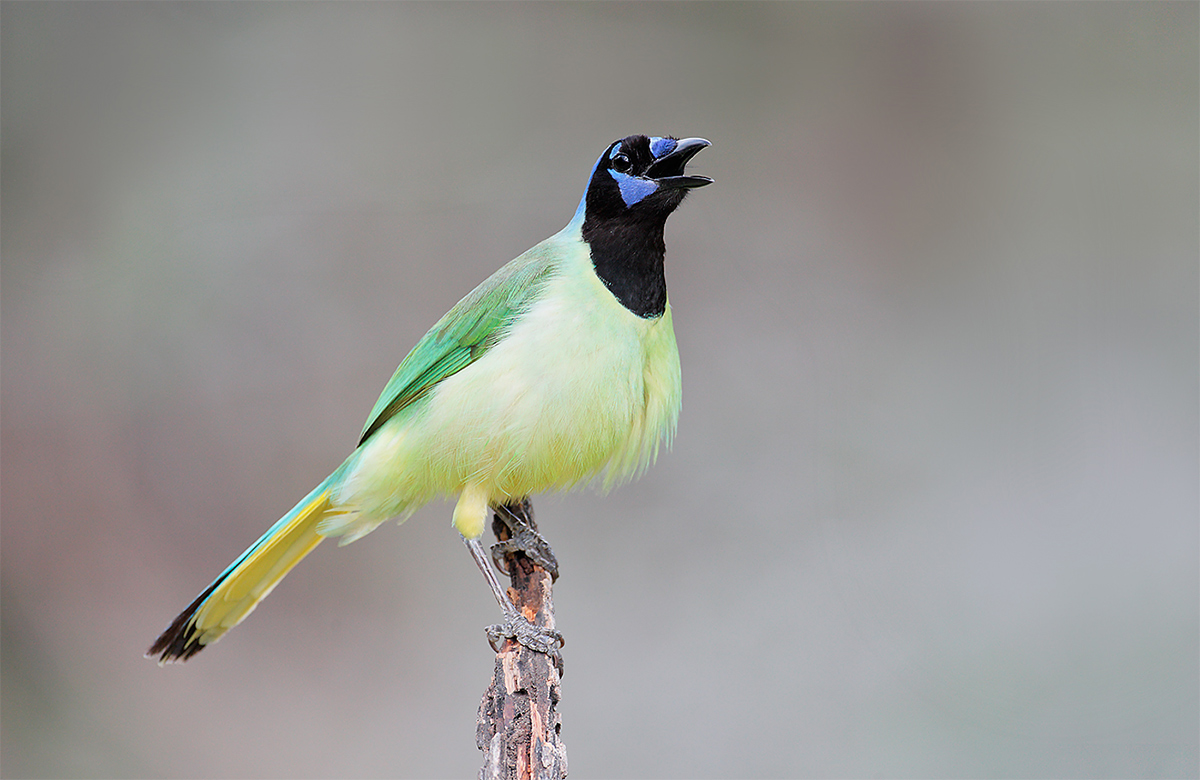
|
Image #1: Green Jay, Roma, TX. Image copyright Arthur Morris/BIRDS AS ART.
This image was created with my old 500. Several folks now lead workshops to Roel Ramirez’s ranch in Roma, TX. I am not sure how many mention that I was the first bird photographer to visit…. Roel was another sweet and gentle soul. Using the image above prompted me to call him last night but I have been unable to reach him….
|
More Brand New Listings
Used Canon EF 500mm f/4L IS Lens, the “old five”
Alan and Sara Levine, friends for probably more than thirty-five years–they are among a very small group who knew my late-wife Elaine–are offering a used Canon EF 500mm f/4L IS lens in excellent condition for $4200. The sale includes the lens trunk, the front lens cover, and insured shipping via FedEx Ground. Your item will not ship until your check clears unless other arrangements are made. Please contact Alan via e-mail or by phone at 908-325-2080 or 908-391-1522 (Eastern time zone).
I owned the old five for more than a decade as it was lighter, easier to travel with, and easier to use in the car or on the ground than the old six. It was and is a superb piece of gear and I made great images with it with both the 1.4X and 2X TCs. Alan’s lens is priced right on the button to sell quickly. artie
|
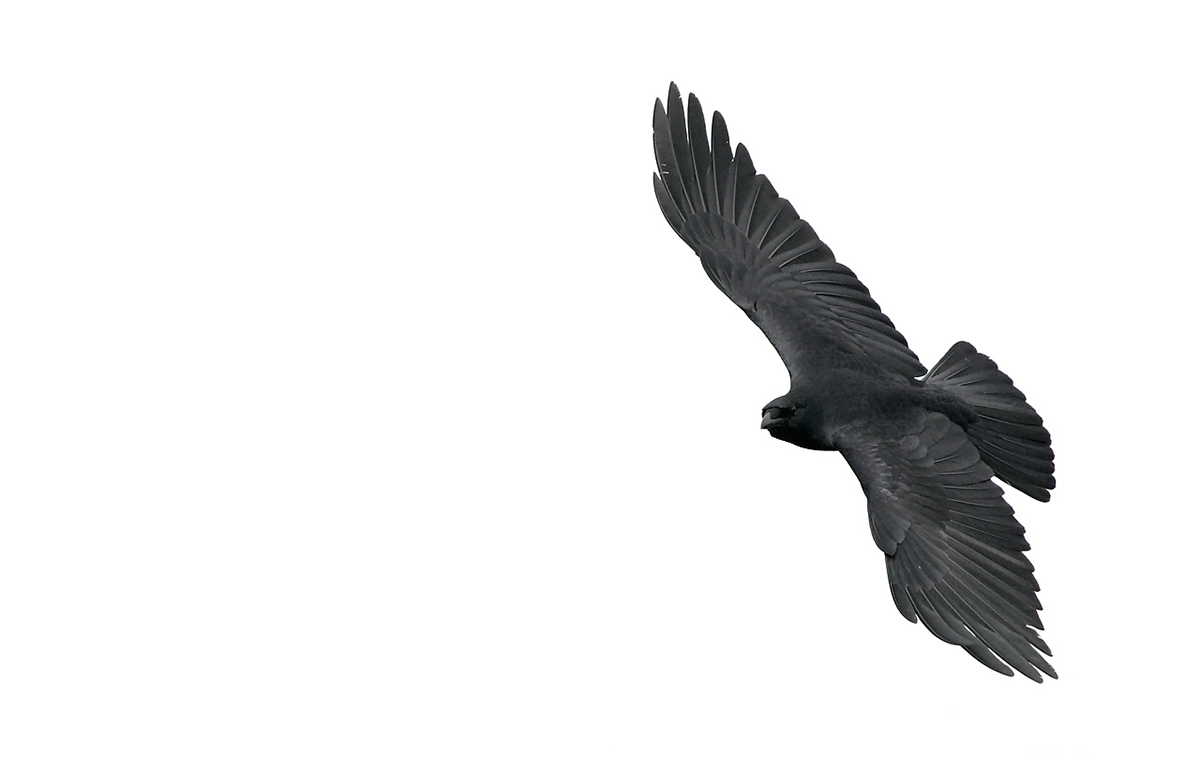
|
Image #2:Fish Crow wheeling in flight, Merritt Island NWR. FL. Image copyright Arthur Morris/BIRDS AS ART.
This image was created with my beloved “toy lens.” Hand held it was killer for flight. Now I am really liking Image Stabilization for hand held flight….
|
Used Canon EF 400mm f/5.6L Lens
Alan and Sara Levine are also offering a used Canon EF 400mm f/5.6L lens in excellent plus condition for $899. The sale includes the front and rear lens caps, the lens case, the lens strap, the original box, and insured shipping via FedEx Ground. Your item will not ship until your check clears unless other arrangements are made. Please contact Alan via e-mail or by phone at 908-325-2080 or 908-391-1522 (Eastern time zone).
I put my then beloved “toy lens” on the map more than 20 years ago by pioneering its use for photographing birds in flight. Wow, did I love that lens along with the Canon A2 camera body and Fuji Velvia pushed one stop to ISO 100! Though I sold mine a few years back it is still a great lens for flight for those who do not depend on IS and it makes a great starter lens as well. Put it on a tripod with the 1.4X III TC, a 7D II, and the Mongoose M3.6 and you will enjoy 896mm of effective reach. Again, this lens is priced to sell. artie
|
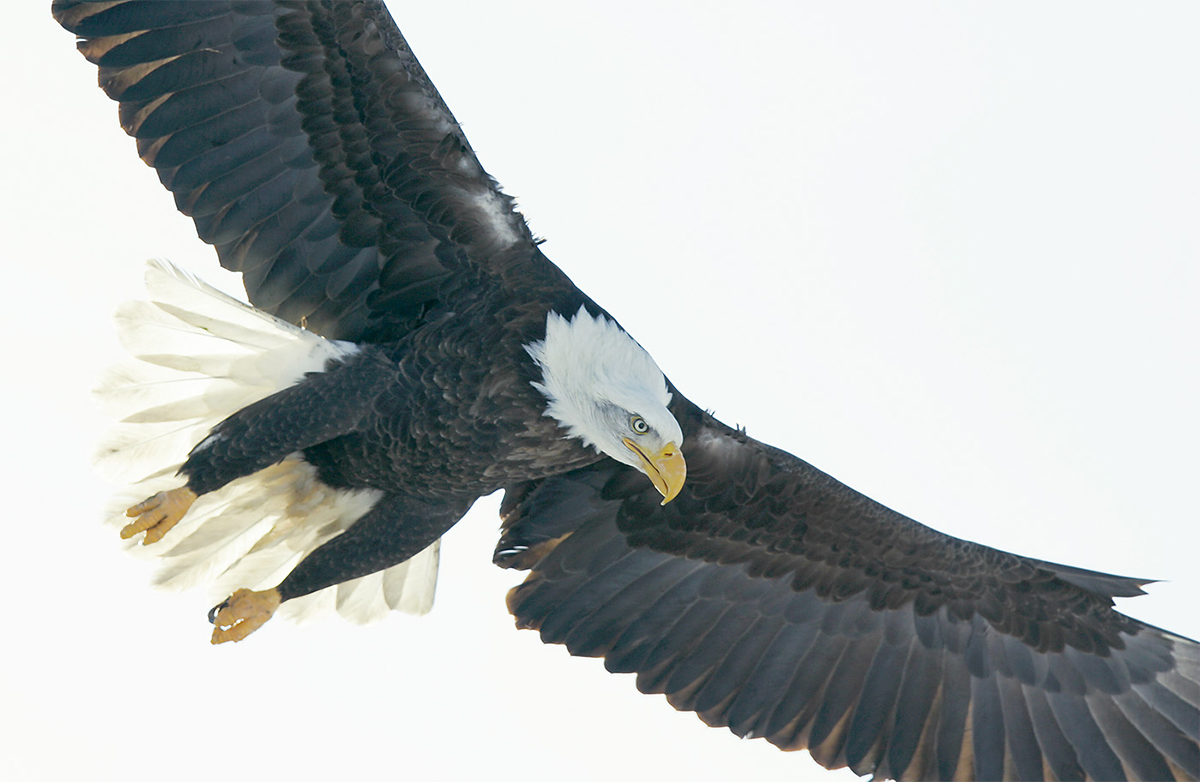
|
Image #3:Bald Eagle tight flight, Homer, AK. Image copyright Arthur Morris/BIRDS AS ART.
I borrowed the old 300 IS for my first trip to Alaska for eagles. This image was my fave with that lens.
|
Used Canon EF 300mm f/2.8L IS Lens
The Levine’s are also offering a used Canon EF 300mm f/2.8L IS lens in excellent plus condition for $3175. The sale includes the front and rear lens caps, the lens trunk, the lens strap, and insured shipping via FedEx Ground. Your item will not ship until your check clears unless other arrangements are made. Please contact Alan via e-mail or by phone at 908-325-2080 or 908-391-1522 (Eastern time zone).
The 300 f/2.8 lenses are the #1 choice of the world’s best hawks in flight photographers. And they make a great hand holdable rig when coupled with either TC. Yup, you guessed it: this one too is priced to sell. artie
|
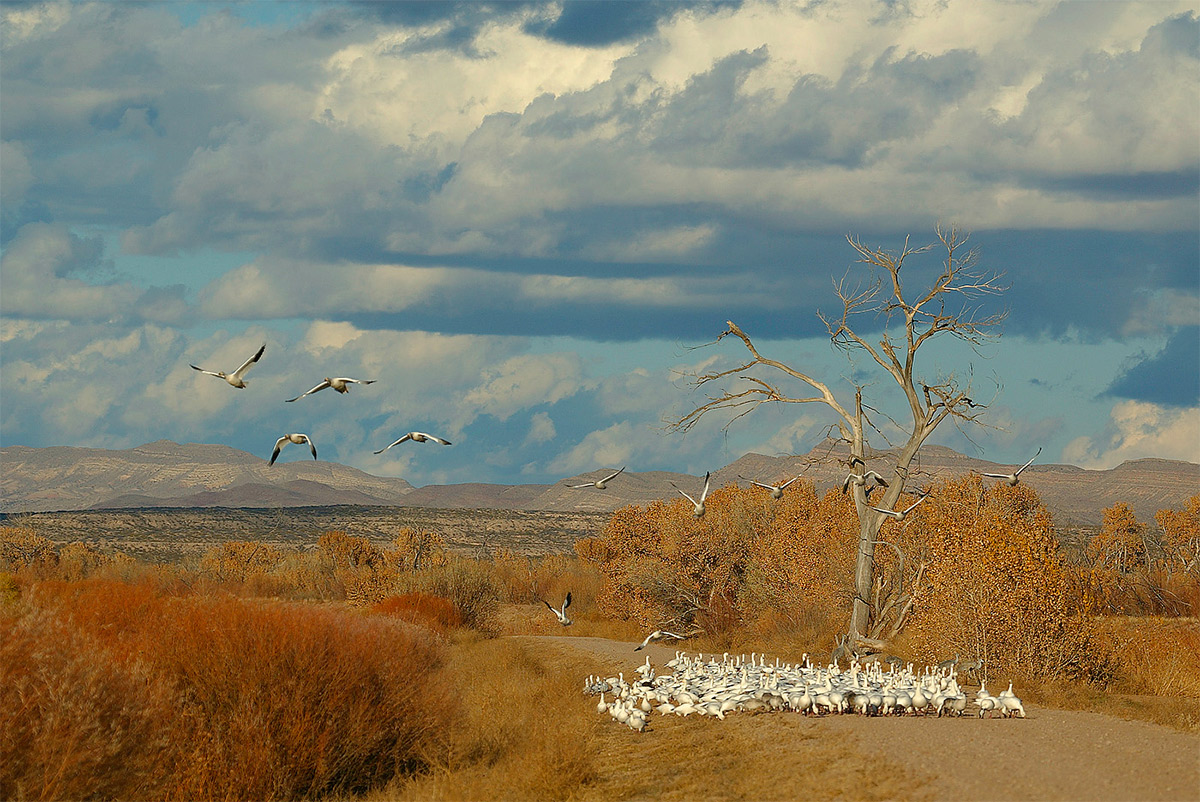
|
Image #4: Snow Geese, Bosque del Apache NWR, NM. Image copyright Arthur Morris/BIRDS AS ART.
This image was used as cover art on Scott Weidensaul’s “Return to Wild America” where he revisited the journey made 50 years before by Roger Tory Peterson and a Brit by the name of James Fisher.
|
Used Canon EF 100-400mm IS L Lens
The Levine’s are also offering a used Canon EF 100-400mm IS L lens in excellent plus condition for the silly low price of $629. The sale includes the front and rear lens caps, the lens case, the lens strap, the original box, and insured shipping via FedEx Ground. Your item will not ship until your check clears unless other arrangements are made. Please contact Alan via e-mail or by phone at 908-325-2080 or 908-391-1522 (Eastern time zone).
I loved my old 1-4 for a decade and made hundereds of saleable and memorable images with it. Denise still owns here and loves it It is a sharp and versatile lens for the beginning or intermediate nature photographer. I think that this might b the lowest price ever for this item…. artie
Used Canon TS-E 24mm Lens
The last lens that Alan and Sara are parting with is a used Canon TS-E 24mm lens in near-mint condition for only $499. The sale includes the front and rear lens caps, the hard case, the original box, and insured shipping via FedEx Ground. Your item will not ship until your check clears unless other arrangements are made. Please contact Alan via e-mail or by phone at 908-325-2080 or 908-391-1522 (Eastern time zone).
If you are considering buying this lens you will know that it is a specialized item for architectural and landscape photographers. artie
Your Favorite?
Please take a moment to let us know which of today’s four images you like best, and why you chose it. Many thanks for helping to keep the BAA Blog interactive. artie
Living on the Wind
I mentioned Scott Weidensaul above. He is an amazingly skilled and prolific author as well as an avid birder and a superb naturalist. I read “Return to Wild America” and enjoyed it. “Living on the Wind,” however, is a must read for anyone interested in birds. Scott was a Pulitzer Prize finalist in the general nonfiction category for “Living on the Wind.” It is the only natural history book that I have ever read where nearly every turn of the page resulted in goose pimples.
Facebook
Be sure to like and follow BAA on Facebook by clicking on the logo link upper right. Tanks a stack!
Support the BAA Blog. Support the BAA Bulletins: Shop B&H here!
We want and need to keep providing you with the latest free information, photography and Photoshop lessons, and all manner of related information. Show your appreciation by making your purchases immediately after clicking on any of our B&H or Amazon Affiliate links in this blog post. Remember, B&H ain’t just photography!
…..
Amazon.com
Those who prefer to support BAA by shopping with Amazon may use this link:
Amazon Canada
Many kind folks from north of the border, eh, have e-mailed stating that they would love to help us out by using one of our affiliate links but that living in Canada and doing so presents numerous problems. Now, they can help us out by using our Amazon Canada affiliate link by starting their searches by clicking here. Many thanks to those who have written.
Typos
In all blog posts and Bulletins, feel free to e-mail or to leave a comment regarding any typos or errors. Just be right :).
August 20th, 2015 Stuff
I felt like a shipping clerk yesterday, sending large boxes with lenses here and there and signing for various large boxes. I still need to get to more boxes today, one with the 10-stop and 15-stop 77mm Singh-Ray Mor-Slo Filters and one from home for the 500 II. was in bed early and slept till 5am. Tomorrow is getaway day. That makes today packing day. Almost all the laundry is done.
It was good talking to Denise Ippolito yesterday after she returned home from an exploratory trip to Iceland. You can check out her images here. Be sure to click and enlarge the opening image….
This seemingly easy-to-assemble, mostly cut-and-pasted blog post took me about 3 hours to prepare. It was published from my Mom’s house in Holbrook, NY at 6:10am on Thursday, August 20, 2015.
Please Remember to shop the BAA Online Store, and to use our Affiliate Links 🙂
To show your appreciation for my continuing efforts here, we ask, as always, that you use our the B&H and Amazon affiliate links on the right side of the blog for all of your purchases. B&H is recommended for you major photography gear purchases, Amazon for your household, entertainment, and general purpose stuff. Please check the availability of all photographic accessories in the BIRDS AS ART Online Store, especially the Mongoose M3.6 tripod heads, Gitzo tripods, Wimberley heads and plates, LensCoats and accessories, and the like. We sell only what I have used, have tested, and can depend on. We will not sell you junk. We know what you need to make creating great images easy and fun. And we are always glad to answer your gear questions via e-mail. I just learned that my account was suspended during my absence; it should be up and running by Monday at the latest.
I would of course appreciate your using our B&H affiliate links for all of your major gear, video, and electronic purchases. For the photographic stuff mentioned in the paragraph above we, meaning BAA, would of course greatly appreciate your business. Here is a huge thank you to the many who have been using our links on a regular basis and visiting the BAA Online store as well.
Alaska Trips Gear Bag
I am taking a busman’s holiday cruise along the inside passage with Denise Ippolito, from Juneau to Ketchikan. After that it I am off to Kodiak for the Bears Catching Salmon IPT. And then home.
My big decision for these two trips again dealt with which super-telephoto lens to bring. (Yeah, I know: life is tough….) I decided early-on that with the bears often at relatively close range that I would ship the 600 II back to Florida before heading to JFK for our flights to Juneau on Friday. That narrowed my choices down to three lenses: the 200-400 II with Internal Extender that I used so successfully on the last bear boat trip (with a 1.4X TC in my pocket to get to 784mm full frame if need be), the new 400 DO II alone or with either TC, or the 500 II, again alone or with either TC.
In another very close call–all three combinations would have been excellent for the two trips, I decided to go with the 500II for reach with the 2X II TC over the other two and because it is lighter than the 200-400 by almost a pound (though not quite as versatile).
I previously made one Bear Boat trip with the Canon EF 500mm f/4L IS II USM lens and was pleased with its relatively light weight and the reach with either the 1.4X or 2X TC. As each day passes weight becomes a more important factor when choosing what gear I will travel with. That said my shoulder did fine at Nickerson with the 600 II and my Wheeleeze. I will be carrying the 500 II in the Think Tank Glass Limo on hikes and landings. And I can hand hold it from the skiff if need be for short periods.
Canon EF 100-400mm f/4.5-5.6L IS II USM lens. I will again be using this lens as my on-the-shoulder intermediate telephoto zoom lens with either the 5D III or the 7D II via a Black Rapid RS-7 strap. The 100-400 focal length fits nicely with the 500II. I will be using it a lot on both trips for bears and for just about everything else. Again it was a fairly easy decision to leave the Canon EF 70-200mm f/2.8L IS II USM lens at home for the two Alaska trips. I might miss it here and there in low light and for scenics when I need to be on a tripod….
Canon EF 24-105mm f/4L IS USM Lens. This all-purpose B-roll lens will be at hand for two weeks. On landings it will be in my Vested Interest Xtrahand vest where it can be grabbed when needed.
I am bringing the Canon EF 16-35mm f/4L IS USM lens primarily for the inside passage cruise. We are hoping that we run into some nice scenic opportunities.
I will have the Canon EF 100mm f/2.8L Macro IS USM Lens with the optional Canon Tripod Mount Ring D for IS 100mm f/2.8L Macro Lens in hopes of running into some late season wildflowers. There should be room in my ThinkTank Airport SecurityTM V2.0 for the three short lenses.
Camera Bodies
EOS-1D X. I will use my rugged pro body both with the 500 II and with the 100-400 II, the latter in low light situations. The more powerful 1D X battery makes it better choice when I am working at 1000mm.
5D Mark III. Depending on the situation, I can use either the 5D III (in low light) or the 7D II (on brighter days) on the 100-400 II. On gloomy days I when I need the 1D X on the 100-400 II I will go with the 5D III on the 500 II.
EOS-7D Mark II. In addition to part time pairing with the 100-400 II on bright days I will go to the 7D II/500II combo (with or without either TC) whenever I need extra reach.
The 5D II that was converted to IR by Kolari Vision will travel in one of my checked bags. Learn more about Kolari Vision and IR here or here.
TCs
I will, as usual, be making this trip with three Canon 1.4X III TCs and two 2X III TCs, Why so many TCs? With my style of bird photography–tight, clean, and graphic–I cannot afford to be without both TCs in the event of an accident or malfunction. Most common in the latter category would be that the locking pin sticks occasionally. When that happens, there is a risk of having your camera body hit the ground….
Questions Welcome
If you have a question about any of my gear choices here please feel free to leave a comment. Do you disagree with any of my choices? What would you be brining to Alaska? And why?
Do Not Forget List!
Whenever I choose to leave one of my Singh-Ray filters at home on a big trip I always come to regret it. Quickly. So I recently added the following items to my “Do Not Forget Items to Bring on all Trips” packing list:
Singh-Ray 77mm Warming Circular Polarizer
Singh-Ray 77mm Mor-Slo 5-stop Glass ND filter
Singh-Ray 77mm Mor-Slo 3-stop Resin ND filter
Singh-Ray 5-stop glass 52mm filter to fit the Canon drop-in Filter Holder
I absolutely love the Singh-Ray 3-stop Resin and 5-stop Glass Neutral Density Filters. I use the 77mm versions of these filters on my 24-105, my 70-200mm f/2.8 L IS, and my new and beloved 100-400mm IS II lens so that I can create blurs on sunny days without having to stop down to f/too-many dust spots…. With a 5-stop glass ND in place I can easily get down to shutter speeds of 1/2 second and slower on clear, bright sunny days.
Important Corrected Ordering Info for Singh-Ray 52mm Drop-In ND Filters
BIRDS AS ART and Denise Ippolito/A Creative Adventure worked with Singh-Ray to produce both a 3-stop Resin Neutral Density filter ($124) and a 5-stop Glass ND filter ($275) to fit the filter drawers of Canon Super-telephoto lenses. If you will be heading to Bosque this season, you will want at least one of the 52mm ND filters in your Xtrahand vest. To order one of the 52mm Mor-Slo filters for Canon, you will need to call Singh-Ray at 1-800-486-5501 (toll free) or 1-863-993-4100 (eastern time zone). Tell them that you want either the 52mm 3-stop Resin Mor-Slo ND or the 52mm 5-stop Glass ND (or both), give them the code artie10, and then arrange to send them your filter holder. Why? Singh-Ray needs to confirm a perfect fit for each order and in addition, they will install and clean the filter. That’s why you need an extra filter holder or two:) See below for info on those.
Folks who use other brand lenses will need to follow the procedure above, specify their lens brand and filter size, and mention the artie10 code. Those folks are invited to contact me via e-mail if they would like me to create a logo link for their brand-specific filter holder….
Please remember that you will not get your 10% discount without mentioning the artie10 code. And I would not receive my affiliate commission. Thanks as always for remembering to use our discount/affiliate code with your Singh-Ray phone and web orders.

Singh-Ray Filters
Singh-Ray filters have been used by the world’s top photographers for many decades. As always, I will have my 77mm Singh-Ray Warming Polarizer in my vest in case of rainbows. And I now travel (as above) with various Singh-Ray ND filters so that I can create pleasing blurs even with clear skies and bright sun. See here for a great example.
No other filter manufacturer comes close to matching the quality of Singh-Ray’s optical glass that is comparable to that used by NASA. And they continue to pioneer the most innovative products on the market like their ColorCombo polarizer, Vari-ND variable and Mor-Slo 15-stop neutral density filters. When you use their filters, you’ll create better, more dramatic images and, unlike other filters, with absolutely no sacrifice in image quality. All Singh-Ray filters are handcrafted in the USA.
Best News: 10% Discount/Code at checkout: artie10
To shop for Singh-Ray’s most popular solid ND filter, the 10-Stop Mor-Slo Glass Filter liter (for example), click on the logo link above, click on “Neutral and color Solid Neutral Density Filters (glass), then click on “Mor-Slo™ 5, 10, 15 and 20-Stop Solid Neutral Density Filters (glass),” choose the size and model, add to cart, and then checkout. At checkout, type artie10 into the “Have a coupon? Click here to enter your code” box, and a healthy 10% discount will be applied to your total. In addition to enjoying the world’s best filter at 10% off you will be supporting my efforts here on the blog.
The 10- and 15-stop Mor Slo filters are great for landscapes with water and moving clouds. With the 10-stop, 1/125th becomes 8 seconds and with the 15-stop, 4 minutes. I need to get at least one of those soon….
52mm Filter Holder Insanity
It would be complete insanity to have to screw out the glass filter and then screw in a 52mm ND filter each time that you need it. The only option is to purchase a spare filter holder or two, screw the filter in, and keep that setup intact and ready to use. Singh-Ray includes a really neat soft leather filter holder with each purchase. I store all of the filters that I travel with in one of the small upper zippered pockets of my Xtrahand vest. I have two extra filter holders and will be bringing both the 3-Stop 52mm Resin ND and the 5-Stop 52mm Glass ND to Bosque.
Think Tank Rolling Bags
I will be using the larger of my two Think Tank rolling bags, the Airport Security™ V 2.0 Rolling Camera Bag. I will use the slightly smaller of the two, the Airport International™ LE Classic for my Southern Ocean trip. Except for the Singh-Ray polarizer, I everything above fit easily into my Airport Security™ V 2.0 Rolling Camera Bag on Thursday afternoon. It tipped the scales at 44 1/4 pounds; the legal limit for US flights is 40 pounds. Nearly all countries in the world give you slack as far as the 40 pounds goes on the way back to the US. As far as the extra 4 1/4 pounds, I have only been hassled for weight once in more than three decades of flying around the world…. I hope that I do not give myself a kine-ahora.
Think Tank Urban Disguise Laptop Shoulder Bag
Both denise and I use and love this amazing bag as it has tons of room and enables us to bring tons of extra stuff.
Please click on my Think Tank affiliate link here to earn a free gift when you purchase a Think Tank Rolling Bag.
Delkin Flash Cards
As always, I will have a 64gb Delkin e-Film Pro Flash Card in each camera body so that I never have to change cards in the field thus reducing the risk of losing a card…. Please note the new lower prices here. I do have a few extra 32 and 64gb cards in a Delkin CF Memory Card Tote, mostly to protect against operator errors….
Facebook
Be sure to like and follow BAA on Facebook by clicking on the logo link upper right. Tanks a stack!
Support the BAA Blog. Support the BAA Bulletins: Shop B&H here!
We want and need to keep providing you with the latest free information, photography and Photoshop lessons, and all manner of related information. Show your appreciation by making your purchases immediately after clicking on any of our B&H or Amazon Affiliate links in this blog post. Remember, B&H ain’t just photography!
…..
Amazon.com
Those who prefer to support BAA by shopping with Amazon may use this link:
Amazon Canada
Many kind folks from north of the border, eh, have e-mailed stating that they would love to help us out by using one of our affiliate links but that living in Canada and doing so presents numerous problems. Now, they can help us out by using our Amazon Canada affiliate link by starting their searches by clicking here. Many thanks to those who have written.
Typos
In all blog posts and Bulletins, feel free to e-mail or to leave a comment regarding any typos or errors. Just be right :).
August 19th, 2015 Stuff
I spent pretty much all of Tuesday getting the gear situation for my two upcoming Alaska trips straightened out. Look forward to the “Alaska Trips Gear Bag” post on Thursday. I took one very long nap. I had a great Active Release Therapy session at True Sports Care with Dr. Dan Holland in Nesconset, Long Island. Right next to Smithtown.
John Armitage’s used Canon 400 mm f/4 IS DO lens sold in one day. There are lots more great buys below.
This blog post took more than 2 hours in all to prepare. It was published at 4:45am from my Mom’ home in Holbrook, NY on Wednesday, August 19, 2015.
Namibia IPT
If you missed the info on this great trip, please click here. So far we have assembled a cast of international participants: one from the US, two from South Africa, one from Hong Kong, and one from Australia. More than a few are world class photographic talent….
Selling Your Used Photo Gear Through BIRDS AS ART
Selling your used (or like-new) photo gear through the BAA Blog or via a BAA Online Bulletin is a great idea. We charge only a 5% commission. One of the more popular used gear for sale sites charges a minimum of 20%. Plus assorted fees! Yikes. The minimum item price here is $500 (or less for a $25 fee). If you are interested please e-mail with the words Items for Sale Info Request cut and pasted into the Subject line :). Stuff that is priced fairly–I offer free pricing advice, usually sells in no time flat. In the past two months we have sold almost everything in sight. Do know that prices on some items like the EOS-1D Mark IV, the old Canon 500mm, the EOS-7D, and the original 400mm IS DO lens have been dropping steadily. You can see the complete listings here.
Brand New Listings
Used Canon EF 600mm f/4L IS Lens, the “old six”
Charles McRae is offering a used Canon EF 600mm f/4L IS lens in good to very good condition (with the expected wear and tear of use: paint chipped around the knobs and on the rear lens barrel near the mount) for the record low price of $4,799. The sale includes the lens trunk, a replacement low foot, the original low foot, and insured shipping via FedEx Ground. Your item will not ship until your check clears unless other arrangements are made. Please contact Chas by by e-mail or by phone at home: 843-423-4767 or on his cellL 843 409 0837 (eastern time zone).
The old six was my go-to super-telephoto lens for well more than a decade, heck, probably for two decades if you include the monstrously heavy original version. Today I use and depend on the newer, lighter version, the Canon EF 600mm f/4L IS II USM lens. Note, the new six sells for a hefty $11,499. The old six is super sharp, works great with both TCs, and offers near-maximum reach along with three focal lengths: 600, 840, and 1200…. At $200 less than the previous record-low BAA price, Dean’s 600 is priced to sell quickly. artie
Amazing Canon Starter Set
Walt Thomas is giving away an incredible starter package for only $1075. It includes a used Canon 100-400mm f/4.5-5.6 L IS USM lens (cleaned and checked by Canon in July 2015), a used Canon EOS-7D, a used 28-135mm IS lens, and a used Speedlite 420 EX, all in excellent condition. And lots of extras including most of the original stuff (please e-mail for complete details), a 7D/100-400 lens holster, a neoprene 7D cover, four 8gb compact flash cards, and the camera strap. Your package will not ship until your check clears unless other arrangements are made. Please contact Walt by e-mail or call him at (520)-495-5612 (Mountain time).
The old 100-400 is a great lens for new nature photographers, as is the old 28-135 IS, the forerunner of the 24-105. I made lots of great B-roll images with it. Also, check out “Mastering the 7D” by Dan Cadieux here. If you are looking to getting started in nature photography for not a lot of money, this is your lucky day. artie
Mint Canon 100mm f/2.8L IS USM Macro Lens
Walt Thomas is also offering a used Canon 100mm f/2.8L IS USM Macro lens in mint condition for $749. The sale includes all original packaging, the lens case, the lens hood, and insured UPS ground shipping. Your lens will not ship until your check clears unless other arrangements are made. Please contact Walt by e-mail or call him at (520)-495-5612 (Mountain time).
The 100 macro IS is denise’s very favorite flower lens and I have grown to love mine too. It is incredibly light and sharp and easy to hand hold. I would, however, strongly advise adding the Canon Tripod Mount Ring D for IS 100mm f/2.8L Macro lens. artie
Canon EOS-7D
Leonard Malkin is offering a used Canon EOS-7D in excellent condition for $499. The sale includes a 4gb compact flash card, the camera strap, the front body cap, both cables, the manual, a pocket guide, a camera specific guide book, and insured ground shipping via Fed Ex. Your camera will not ship until your check clears unless other arrangements are made. Please contact Leonard by e-mail.
Be sure to check out check “Mastering the 7D” by Dan Cadieux here. artie
|
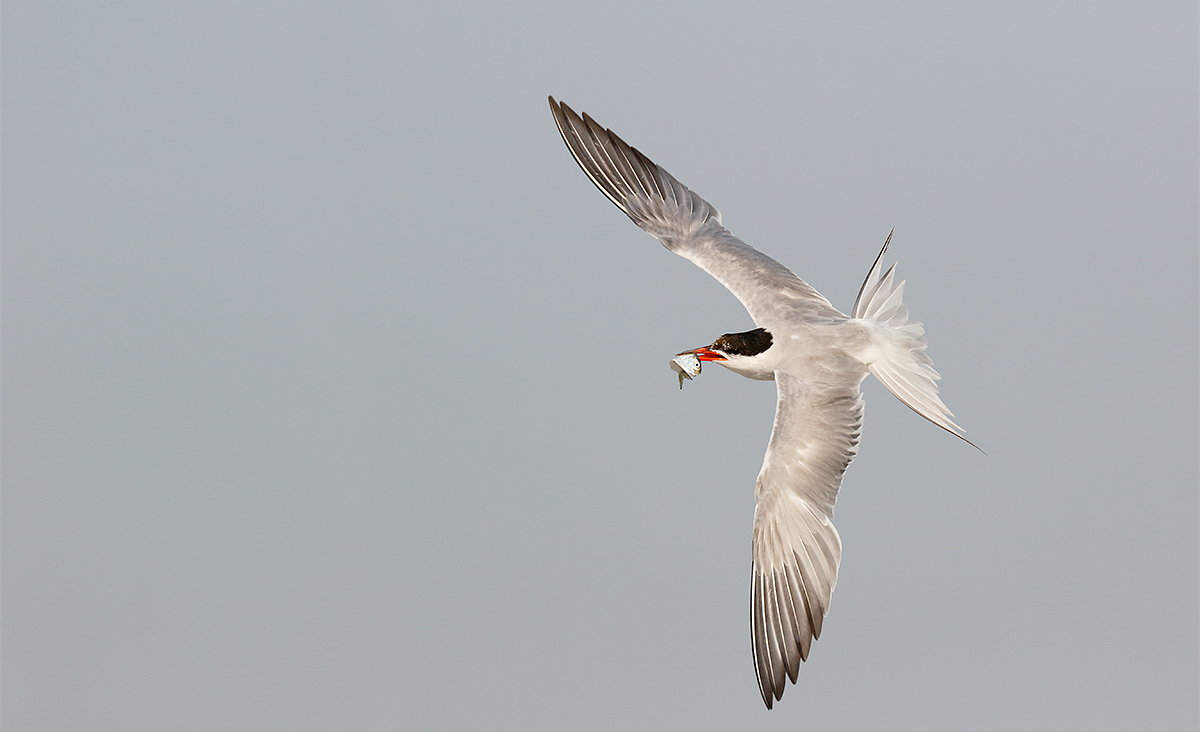
|
|
This image was created at 8:14am on the last morning of the Nickerson IPT with the hand held Canon EF 100-400mm f/4.5-5.6L IS II USM lens and the amazing Canon EOS 7D Mark II. ISO 400. Evaluative metering +1/3 stop off the low blue sky: 1/3200 sec. at f/5.6.
Center AF point/AI Servo Expand/Shutter Button AF as originally framed was active at the moment of exposure (as is always best when hand holding). The selected AF point was on the middle of the bird’s back. Click here to see the latest version of the Rear Focus Tutorial. Click on the image to see a larger version.
Common Tern with baby bluefish for chick
|
100-400 LI II/7D II for Flight
As compared to the 400 DO/7DII combo for flight the plusses with the 100-400 II are its lighter weight and that it gives you the ability to zoom out when needed, the latter only if you are skilled enough to pull that off. Initial AF acquisition is a bit slower with the zoom because of the speed advantage of the 400 DO: f/4 vs. f/5.6. In addition, the 400 DO’s wider aperture is an all around advantage in low light situations.
A Wind Against Sun Flight Tip
With clear skies by 7am every day, the winds with westerly components made things consistently difficult: can you say wind against sun? Why? The birds are taking off, flying, and landing away from the light. That’s great if you like photographing bird butts. We did manage to find a very few situations where the birds flying into the west wind turned back to the south (to their left) either before diving for a baitfish or a sand crab or before dropping down to feed a chick.
On Sunday morning the wind must have been slightly different either in speed or direction: birds were flying over our right shoulders, approaching a small dune, and then turning left. “Here’s one coming on our right. It has a fish! Now, acquire focus and wait till it turns. Now! Make one or two images before the bird lands. Several in the group had stuck with the leader: Beth, Scott, and Chris. They were rewarded for their faith in me. We had consistent action for nearly an hour and we all had many excellent chances. Then the wind must have shifted slightly or the school of fish must have moved on because the action flat-out died. Thanks to Chris Billman who discovered the somewhat out-of-the-way location that held a few small, late-in-the-season Common Tern chicks.
During that session, I hit upon something totally new to improve my flight photography but I need to test my theory a bit more before deciding what to do with it. All I can say right now is that it worked like a charm on Sunday past. And only three folks besides me know about it 🙂
Facebook
Be sure to like and follow BAA on Facebook by clicking on the logo link upper right. Tanks a stack!
Support the BAA Blog. Support the BAA Bulletins: Shop B&H here!
We want and need to keep providing you with the latest free information, photography and Photoshop lessons, and all manner of related information. Show your appreciation by making your purchases immediately after clicking on any of our B&H or Amazon Affiliate links in this blog post. Remember, B&H ain’t just photography!
…..
Amazon.com
Those who prefer to support BAA by shopping with Amazon may use this link:
Amazon Canada
Many kind folks from north of the border, eh, have e-mailed stating that they would love to help us out by using one of our affiliate links but that living in Canada and doing so presents numerous problems. Now, they can help us out by using our Amazon Canada affiliate link by starting their searches by clicking here. Many thanks to those who have written.
Typos
In all blog posts and Bulletins, feel free to e-mail or to leave a comment regarding any typos or errors. Just be right :).
August 18th, 2015 What’s Up?
After taking a nap on the way from Nickerson to my Mom’s house in Holbrook on Sunday, I took another nap. And relaxed. On Monday I relaxed some more. And prepared a broiled flounder dinner for my Mom, my sister Arna, my younger daughter Alissa, and the older of two sons, Ilyas. Her husband and younger son are in Uzbekistan for two weeks of visiting family and friends. After dinner it was early to bed for me. All in the Nickerson IPT group were up by 4am every day…. I am looking forward to resting the next few days while getting ready for my two-week Alaska trip.
I took me more than 2 1/2 hours to prepare this blog post at my Mom’s. If I did everything right, it should be published automatically at about 5:30am on Tuesday, August 18, 2015. Please remember to use our affiliate links especially for your major gear purchases. As always, that thoughtfulness is greatly appreciated.
|
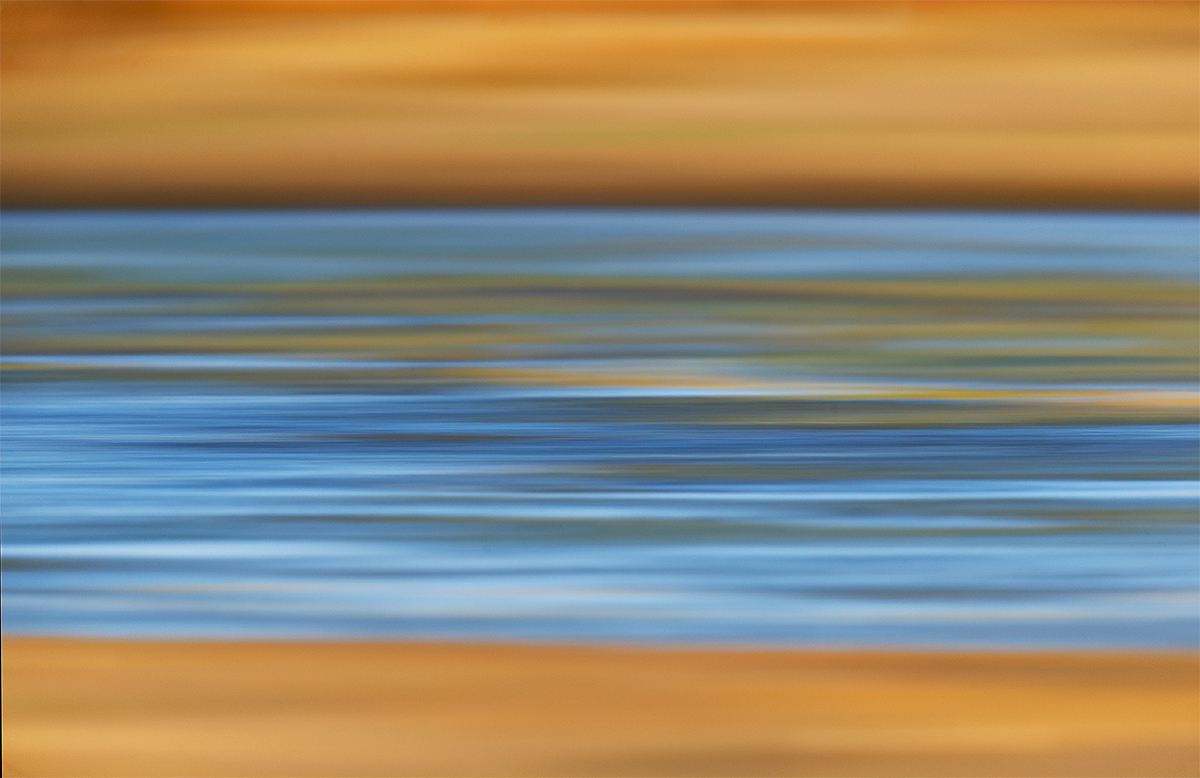
|
|
This image was created on the East Pond at Jamaica Bay Wildlife Refuge at 6:44m on Day 2 of the Nickerson Beach/JBWR IPT. I used the tripod-mounted Canon EF 600mm f/4L IS II USM lens, the Canon Extender EF 1.4X III, and the Canon EOS-1D X. ISO 400. Evaluative metering +1/3 stop: 1/8 sec. at at f/6.3 in Tv (shutter priority) mode with the Singh-Ray 52mm Mor-Slo 5-stop Glass Neutral Density filter.
Center AF point (Manual selection)/AI Servo/Rear Focus AF just below the middle of the frame (and release) and panned left to right during the exposure. Click here to see the latest version of the Rear Focus Tutorial. Be sure to click on the image to see a larger version.
MUD AS ART: Horizontal pan blur of small stream on South Flats
|
Why Neutral Density Filters (with Super-Telephoto Lenses)?
Here is a question asked by Dan in a comment on the Nickerson Gear Bag blog post here:
In what situations would you require a 3 or 5-stop ND in your super telephoto lenses? Would it be purely when doing panning work and wanting to keep the aperture open wide to avoid distractions?
My (expanded) reply:
Hi Dan, Not at all. I use the Singh-Ray 3-stop resin or 5-stop glass Neutral Density filters (both the 52mm drop-in NDs to fit the filter holders of the Canon super-telephotos) and the 77mm circular NDs) for three main reasons:
1-Like many top professionals I choose and use Singh-Ray filters because they are the highest quality filters available.
2-I use the 3-stop and 5-stop NDs as noted above to achieve really slow shutter speeds in situations where doing so would be impossible even at the lowest available ISO. You simply cannot get down to 1/2 second on a clear sunny day without using an ND filter.
3-I use the 3-stop and 5-stop NDs as above to achieve really slow shutter speeds in situations where doing so would result in tiny apertures such as f/22, f/32, f/45, and f/64 (the latter two show up often when you are using TCs with telephoto lenses). When using really small apertures like those mentioned above (and even somewhat wider apertures like f/16 and even f/11) you will wind up having to spend lots of time cleaning dust spots from your images because even microscopic dust shows up when you are using small apertures. With wider apertures like f/4, f/5.6, and sometimes f/8, dust spots are minimized; only substantially sized dust bunnies will show up.
In today’s featured image I only had to deal with three dust spots. Had I been working without the 5-stop ND drop-in filter in place I would have been at f/36 and would have had to deal with many dozens of dust bunnies. Even if I had reduced the ISO to 50 working at f/13 would have yielded more than a dozen dust bunnies. And remember that with the 7D II you can only get down to ISO 100.
Many or even most potentially distracting background features will not be a problem when you are doing pan blurs at slow shutter speeds such as 1/8 sec., 1/4 sec., and 1/2 sec.
Aside from being used to create pan blurs, ND filters are commonly used to achieve the slow shutters speeds needed when photographing moving water such as with waterfalls or breaking surf. At times many creative photographers use telephoto lenses to photograph moving water….
artie
Horizontal Pan Blur Tip
First level the tripod base by centering the bubble in the leveling circle by adjusting the legs and/or by pushing them into the mud as I did before creating today’s featured image. Then determine the pitch, how high or low you will be aiming your lens. Next lock the vertical panning knob on your tripod head. Leave the horizontal panning knob loose. Now make some images while panning. Using this technique will ensure a perfectly level pan. As always when trying to create a really pleasing blur, make lots of images. One will surely stand out as best.
For vertical pan blurs do the opposite with the locking knobs. Note: hand holding when creating pan blurs can add some interesting twists to the images….
Do Not Forget List!
Whenever I choose to leave one of my Singh-Ray filters at home on a big trip I always come to regret it. Quickly. So I recently added the following items to my “Do Not Forget Items to Bring on all Trips” packing list:
Singh-Ray 77mm Warming Circular Polarizer
Singh-Ray 77mm Mor-Slo 5-stop Glass ND filter
Singh-Ray 77mm Mor-Slo 3-stop Resin ND filter
Singh-Ray 5-stop glass 52mm filter to fit the Canon drop-in Filter Holder
I absolutely love the Singh-Ray 3-stop Resin and 5-stop Glass Neutral Density Filters. I use the 77mm versions of these filters on my 24-105, my 70-200mm f/2.8 L IS, and my new and beloved 100-400mm IS II lens so that I can create blurs on sunny days without having to stop down to f/too-many dust spots…. With a 5-stop glass ND in place I can easily get down to shutter speeds of 1/2 second and slower on clear, bright sunny days.
Important Corrected Ordering Info for Singh-Ray 52mm Drop-In ND Filters
BIRDS AS ART ad A Creative Adventure worked with Singh-Ray to produce both a 3-stop Resin Neutral Density filter ($124) and a 5-stop Glass ND filter ($275) to fit the filter drawers of Canon Super-telephoto lenses. If you will be heading to Bosque this season, you will want at least one of the 52mm ND filters in your Xtrahand vest. To order one of the 52mm Mor-Slo filters for Canon, you will need to call Singh-Ray at 1-800-486-5501 (toll free) or 1-863-993-4100 (eastern time zone). Tell them that you want either the 52mm 3-stop Resin Mor-Slo ND or the 52mm 5-stop Glass ND (or both), give them the code artie10, and then arrange to send them your filter holder. Why? Singh-Ray needs to confirm a perfect fit for each order and in addition, they will install and clean the filter. That’s why you need an extra filter holder or two:) See below for info on those.
Folks who use other brand lenses will need to follow the procedure above, specify their lens brand and filter size, and mention the artie10 code. Those folks are invited to contact me via e-mail if they would like me to create a logo link for their brand-specific filter holder….
Please remember that you will not get your 10% discount without mentioning the artie10 code. And I would not receive my affiliate commission. Thanks as always for remembering to use our discount/affiliate code with your Singh-Ray phone and web orders.

Singh-Ray Filters
Singh-Ray filters have been used by the world’s top photographers for many decades. As always, I will have my 77mm Singh-Ray Warming Polarizer in my vest in case of rainbows. And I now travel (as above) with various Singh-Ray ND filters so that I can create pleasing blurs even with clear skies and bright sun. See here for a great example.
No other filter manufacturer comes close to matching the quality of Singh-Ray’s optical glass that is comparable to that used by NASA. And they continue to pioneer the most innovative products on the market like their ColorCombo polarizer, Vari-ND variable and Mor-Slo 15-stop neutral density filters. When you use their filters, you’ll create better, more dramatic images and, unlike other filters, with absolutely no sacrifice in image quality. All Singh-Ray filters are handcrafted in the USA.
Best News: 10% Discount/Code at checkout: artie10
To shop for a Singh-Ray’s most popular solid ND filter, the 10-Stop Mor-Slo Glass Filter liter (for example), click on the logo link above, click on “Neutral and color Solid Neutral Density Filters (glass), then click on “Mor-Slo™ 5, 10, 15 and 20-Stop Solid Neutral Density Filters (glass),” choose the size and model, add to cart, and then checkout. At checkout, type artie10 into the “Have a coupon? Click here to enter your code” box, and a healthy 10% discount will be applied to your total. In addition to enjoying the world’s best filter at 10% off you will be supporting my efforts here on the blog.
The 10- and 15stop Mor Slo filters are great for landscapes with water and moving clouds. With the 10-stop, 1/125th becomes 8 seconds and with the 15-stop, 4 minutes. I need to get at least one of those soon….
52mm Filter Holder Insanity
It would be complete insanity to have to screw out the glass filter and then screw in a 52mm ND filter each time that you need it. The only option is to purchase a spare filter holder or two, screw the filter in, and keep that setup intact and ready to use. Singh-Ray includes a really neat soft leather filter holder with each purchase. I store all of the filters that I travel with in one of the small upper zippered pockets of my Xtrahand vest. I have two extra filter holders and will be bringing both the 3-Stop 52mm Resin ND and the 5-Stop 52mm Glass ND to Bosque.
A Guide to Pleasing Blurs
If you would like to learn the fine points of creating pleasing pan-blurs and in addition, would like to learn the many other techniques that Denise and I use to create our popular pleasingly blurred images, but can’t make an IPT, get yourself a copy of A Guide to Pleasing Blurs by Denise Ippolito and yours truly.
Facebook
Be sure to like and follow BAA on Facebook by clicking on the logo link upper right. Tanks a stack!
Support the BAA Blog. Support the BAA Bulletins: Shop B&H here!
We want and need to keep providing you with the latest free information, photography and Photoshop lessons, and all manner of related information. Show your appreciation by making your purchases immediately after clicking on any of our B&H or Amazon Affiliate links in this blog post. Remember, B&H ain’t just photography!
…..
Amazon.com
Those who prefer to support BAA by shopping with Amazon may use this link:
Amazon Canada
Many kind folks from north of the border, eh, have e-mailed stating that they would love to help us out by using one of our affiliate links but that living in Canada and doing so presents numerous problems. Now, they can help us out by using our Amazon Canada affiliate link by starting their searches by clicking here. Many thanks to those who have written.
Typos
In all blog posts and Bulletins, feel free to e-mail or to leave a comment regarding any typos or errors. Just be right :).
August 17th, 2015 Stuff
On the last morning of the Nickerson Beach IPT we had some nice clouds in the east to go with our steady diet of west winds…. Hooray. The group was great. I took everyone out on Saturday afternoon for an early thank you dinner. As always, the food at Centre Thai Bistro at 268 Atlantic Ave., East Rockaway, NY 11518 was beyond superb. The appetizers were so amazing that we wished that we had not ordered our dinners so that we could have sampled more appetizers!
After dinner we headed out to the beach for our last afternoon. I woke an hour before the alarm at 3:06am and decided to pack up the car. I headed back to my Mom’s after our morning shooting session.
I took me close to an hour to optimize today’s featured image–see below for details–and another 45 minutes to prepare the blog post. If I did everything right, it should be published automatically at 6am on Monday, August 17, 2015.
Namibia IPT
If you missed the info on this great trip, please click here. So far we have assembled a cast of international participants: one from the US, two from South Africa, one from Hong Kong, and one from Australia. More than a few are world class photographic talent….
Selling Your Used Photo Gear Through BIRDS AS ART
Selling your used (or like-new) photo gear through the BAA Blog or via a BAA Online Bulletin is a great idea. We charge only a 5% commission. One of the more popular used gear for sale sites charges a minimum of 20%. Plus assorted fees! Yikes. The minimum item price here is $500 (or less for a $25 fee). If you are interested please e-mail with the words Items for Sale Info Request cut and pasted into the Subject line :). Stuff that is priced fairly–I offer free pricing advice, usually sells in no time flat. In the past two months we have sold almost everything in sight. Do know that prices on some items like the EOS-1D Mark IV, the old Canon 500mm, the EOS-7D, and the original 400mm IS DO lens have been dropping steadily. You can see the complete listings here.
Brand New Listing
Used Canon EF 400mm f/4 IS DO Lens
Sold! 8/19/2015
John Armitage is offering a used Canon 400 mm f/4 IS DO lens in like-new condition for $3,000.00. As Steve Leimberg did, John is giving this one away…. The lens was recently cleaned, checked, and calibrated by Canon Factory Service. The sale includes the lens trunk and key, the leather front lens cover, the rear lens cap and strap, and a Wimberley lens plate. The sale also includes insured shipping via either UPS or FED-EX Ground. Your item will not ship until your check clears unless other arrangements are made.
Please contact John by e-mail or by phone at 970-250-6080 (Pacific time).
I used this lens for several years with great success, especially for birds in flight and while working from various type of water craft. In addition, it would make a great prime super-telephoto lens for folks with a 7D II. Gannets in Love was created with the 400 DO. You can see that one and 13 other killer images that I made with my old 400 DO here. The title of that blog post is “The Canon 400mm f/4 IS DO Lens: Fourteen Images that Prove that the Internet Experts are Idiots.” John’s lens is priced to sell immediately. artie
|
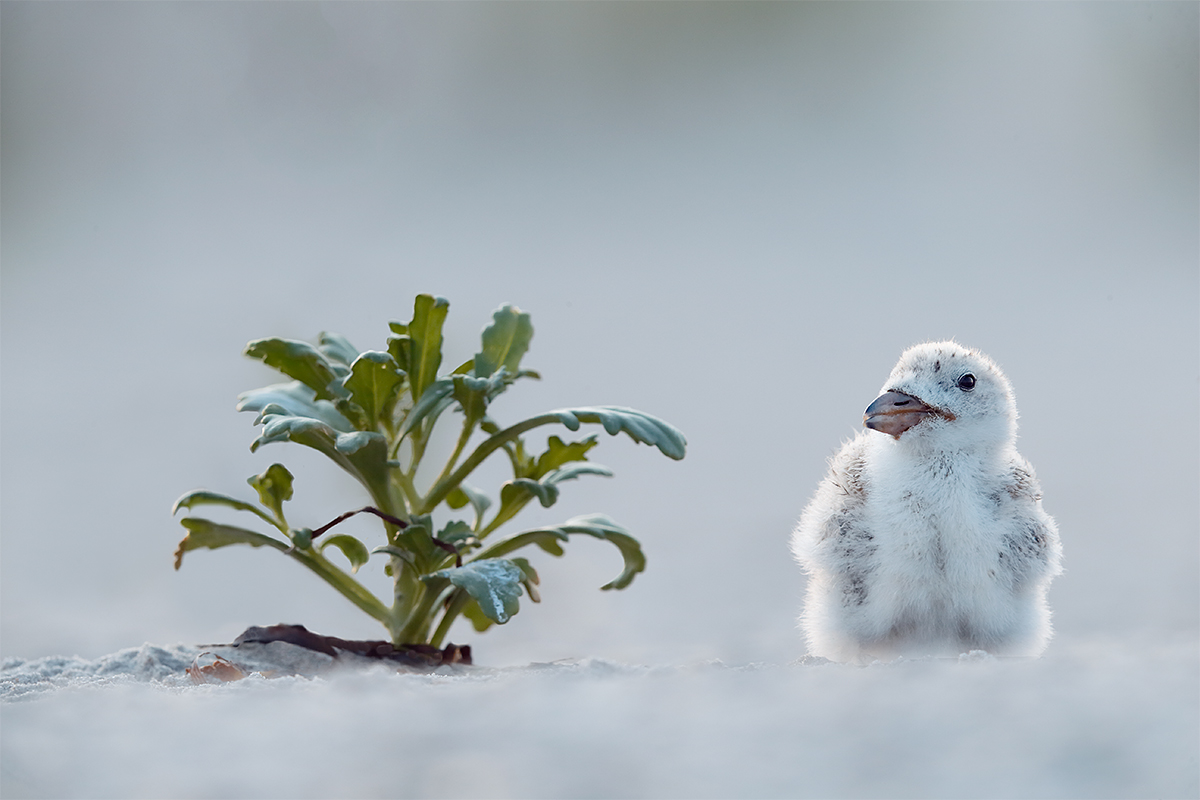
|
|
This image was created on the last morning of the Nickerson Beach IPT. I used the tripod-mounted Canon EF 600mm f/4L IS II USM lens, the Canon Extender EF 2X III, and the Canon EOS-1D X. ISO 640. Evaluative metering +2/3 stop: 1/640 sec. at f/9.
Center AF point (by necessity)/AI Servo Expand/Rear Focus on the chicks eye and re-compose. Click here to see the latest version of the Rear Focus Tutorial. Be sure to click on the image to see a larger version.
Black Skimmer chick on cloudy morning
|
Simplicity Defined
I was photographing another chick when I noticed this one to my left. I took a frame or two but the image was way too cluttered. I scrambled on my belly dragging my splayed tripod with the 600 on it through the sand. I stopped and made another image but was still not thrilled so I scrambled another two yards to my left. Voila!
Sun Angle Lesson
With the wind from the west the chick was facing west. Had it been a clear morning we would have enjoyed some nice backlit situations for a very short while after the sun came up. Had it not been for the blessed cloud, this image, created an hour after sunrise, would not have been possible as the backlight would have been far too harsh.
The Image Optimization
After converting the RAW file in DPP I brought the TIFF into Photoshop. The first thing that I did was eliminate the color cast. Next, I went after the dark areas behind the bush using the Protective Cloning on a Layer technique as taught to me by Denise Ippolito. This depends on a thorough mastery of Layer Masking; it alone took me more than 30 minutes. Denise could have polished it off in about 1/3 of that time…. Then a bit of beach clean up using my usual tools: the Spot Healing Brush Tool, the Clone Stamp Tool, my beloved Patch Tool, a few Quick Masks that were refined by Layer Masks, and even a few Content Aware Fills.
Then I selected the bird, applied a layer of my NIK Color Efex Pro 50/50 recipe at about 40% opacity. I pulled the curve up on the bird only to lighten it and finished things off with a Contrast Mask to sharpen the face. It was a great way to end the IPT.
Digital Basics
Nearly everything that I did to optimize today’s image is covered in detail in my Digital Basics File–written in my easy-to-follow, easy-to-understand style. Are you tired of making your images look worse in Photoshop? Digital Basics File is an instructional PDF that is sent via e-mail. It includes my complete digital workflow, dozens of great Photoshop tips, details on using all of my image clean-up tools, the use of Contrast Masks, several different ways of expanding and filling in canvas, all of my time-saving Keyboard Shortcuts, Quick Masking, Layer Masking, and NIK Color Efex Pro basics, Contrast Masks, Digital Eye Doctor techniques, using Gaussian Blurs, Tim Grey Dodge and Burn, a variety of ways to make selections, how to create time-saving actions, the Surface Blur (background noise reduction) settings and Brush Opacity Magic both taught to me by Denise Ippolito, and tons more.
|
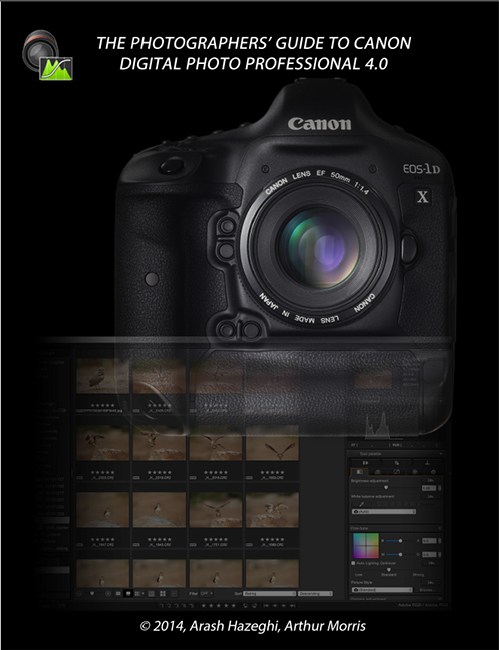
|
|
You can order your copy of “The Photographers’ Guide to Canon Digital Photo Professional 4.0” (aka the DPP 4 Raw Conversion eGuide) by Arash Hazeghi and Arthur Morris by clicking here.
|
The DPP 4 eGuide (PDF)
Learn how and why I and many other discerning photographers choose and use only DPP 4 to convert their Canon RAW files in the DPP 4 RAW Conversion Guide by Arash Hazeghi and yours truly. The latest version supports all of the newer Canon camera bodies and several older models including the EOS-7D and the EOS-1D Mark IV. The DPP IV Guide is the ideal companion to the 7D Mark II User’s Guide, a runaway best seller.
Facebook
Be sure to like and follow BAA on Facebook by clicking on the logo link upper right. Tanks a stack!
Support the BAA Blog. Support the BAA Bulletins: Shop B&H here!
We want and need to keep providing you with the latest free information, photography and Photoshop lessons, and all manner of related information. Show your appreciation by making your purchases immediately after clicking on any of our B&H or Amazon Affiliate links in this blog post. Remember, B&H ain’t just photography!
…..
Amazon.com
Those who prefer to support BAA by shopping with Amazon may use this link:
Amazon Canada
Many kind folks from north of the border, eh, have e-mailed stating that they would love to help us out by using one of our affiliate links but that living in Canada and doing so presents numerous problems. Now, they can help us out by using our Amazon Canada affiliate link by starting their searches by clicking here. Many thanks to those who have written.
Typos
In all blog posts and Bulletins, feel free to e-mail or to leave a comment regarding any typos or errors. Just be right :).
August 16th, 2015 Stuff
As predicted Friday afternoon was superb. On Saturday we enjoyed some great pre-dawn blur action followed by a glorious sunrise. Then it was more SW winds and more clear skies….
This blog post took less than an hour to prepare and, if I did everything right, it should be published automatically at 6am on Sunday, August 16, 2015.
Namibia IPT
If you missed the info on this great trip, please click here. So far we have assembled a cast of international participants: one from the US, two from South Africa, one from Hong Kong, and one from Australia. More than a few are world class photographic talent….
Should I Smash My 2X III TC With a Baseball Bat?
A few years back, my friend Andy Rouse had this to say about 2X teleconverters:
…. take the 2x converter, place it gently on the ground so that it is bathed in lovely soft, evening light. Then paint your teeth red and smash it violently to pieces with a large baseball bat, cackling maniacally all the time at passers by. Go on do it, it will feel so good. Now before you think I have an issue against Canon 2x converters, I don’t! I hate ALL 2x teleconverters equally!!! I consider them a complete waste of space and money; it is always better to use a 1.4x teleconverter and crop. Of course that is just my view!
|
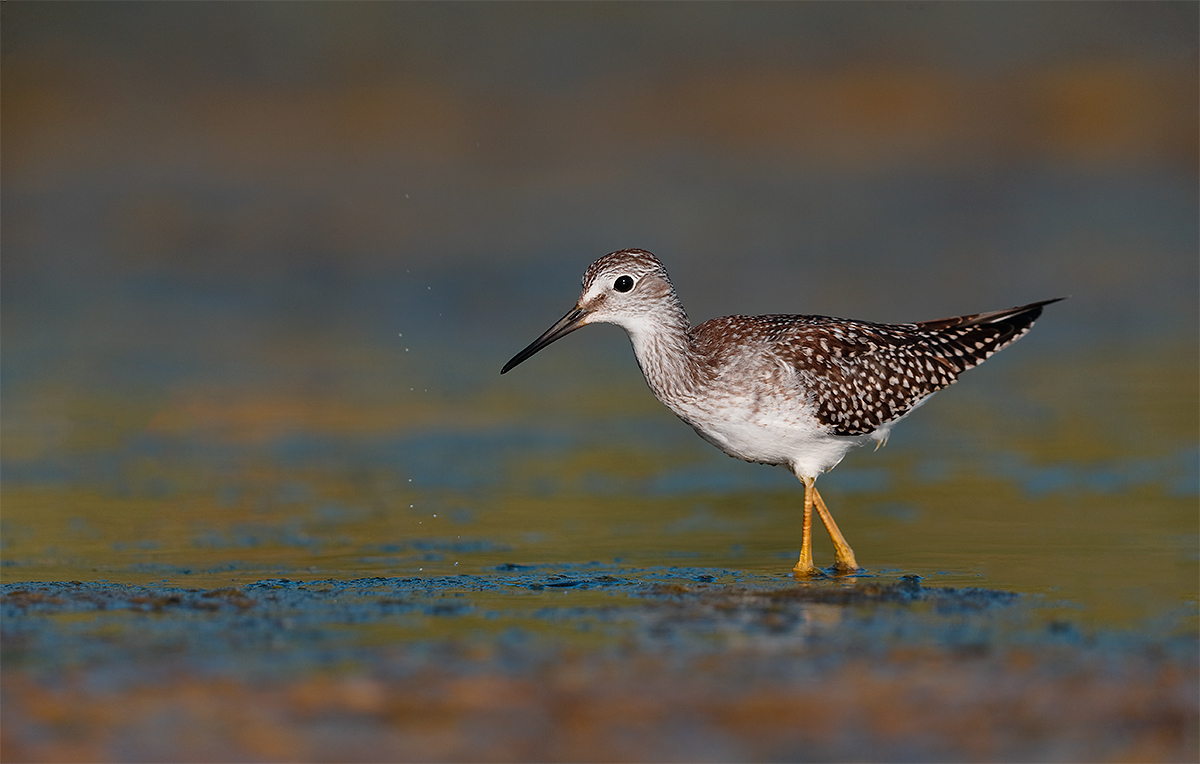
|
|
This image was created at Jamaica Bay Wildlife Refuge on the 2nd morning of the Nickerson Beach IPT. I used the tripod-mounted Canon EF 600mm f/4L IS II USM lens, the Canon Extender EF 2X III, and the Canon EOS-1D X. ISO 400. Evaluative metering -1/3 stop: 1/1000 sec. at f/8.
Center AF point (by necessity)/AI Servo Expand/Shutter Button AF as originally framed was active at the moment of exposure. The righ hand assist point barely caught the spot where the bird’s neck and breast meet. Click on the image to see a larger version.
Juvenile Lesser Yellowlegs with spray flying after invertebrate capture
|
Me and My 2X III TC
Andy is a widely traveled highly respected wildlife photographer with more than a few BBC honored images under his belt. Like me he is highly opinionated and like me, he enjoys making waves on occasion. In this case as regular readers might surmise, I disagree with him. To my eye, the images of this bird that I made with the 2X III TC looked sharper than the images that I made with the 600 II alone…. Do see the 100% crop below.
Image Question
Are there any subtle or obvious signs of background image clean-up or any signs of major Photoshop hanky panky? If yes, state your case and offer your proof.
What Do You Think?
What do you think of the image sharpness, the image quality, and the fine feather detail?
|
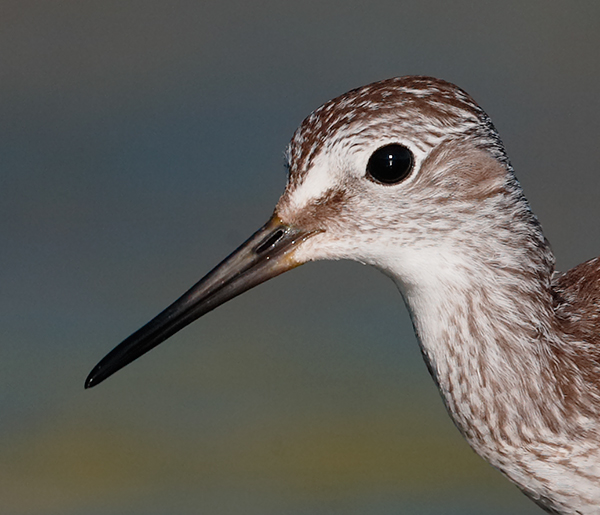
|
|
This is an unsharpened 100% crop of today’s featured image.
|
The 100% Crop
To my eye, this image is professionally sharp and exhibits satisfactory fine feather detail. Of course that is just my view!
Facebook
Be sure to like and follow BAA on Facebook by clicking on the logo link upper right. Tanks a stack!
Support the BAA Blog. Support the BAA Bulletins: Shop B&H here!
We want and need to keep providing you with the latest free information, photography and Photoshop lessons, and all manner of related information. Show your appreciation by making your purchases immediately after clicking on any of our B&H or Amazon Affiliate links in this blog post. Remember, B&H ain’t just photography!
…..
Amazon.com
Those who prefer to support BAA by shopping with Amazon may use this link:
Amazon Canada
Many kind folks from north of the border, eh, have e-mailed stating that they would love to help us out by using one of our affiliate links but that living in Canada and doing so presents numerous problems. Now, they can help us out by using our Amazon Canada affiliate link by starting their searches by clicking here. Many thanks to those who have written.
Typos
In all blog posts and Bulletins, feel free to e-mail or to leave a comment regarding any typos or errors. Just be right :).
August 15th, 2015 Stuff
We photographed at Jamaica Bay Wildlife Refuge on Friday morning and after a relatively slow start we did quite well. Everyone enjoyed seeing and photographing the shorebirds in the mud.
I prepared this blog post in my motel room after our Friday afternoon image review and Photoshop session. This blog post took less than an hour to prepare and, if I did everything right, it should be published automatically at 6am on Saturday, August 15, 2015.
Namibia IPT
If you missed the info on this great trip, please click here. So far we have assembled a cast of international participants: one from the US, two from South Africa, one from Hong Kong, and one from Australia. More than a few are world class photographic talent….
|
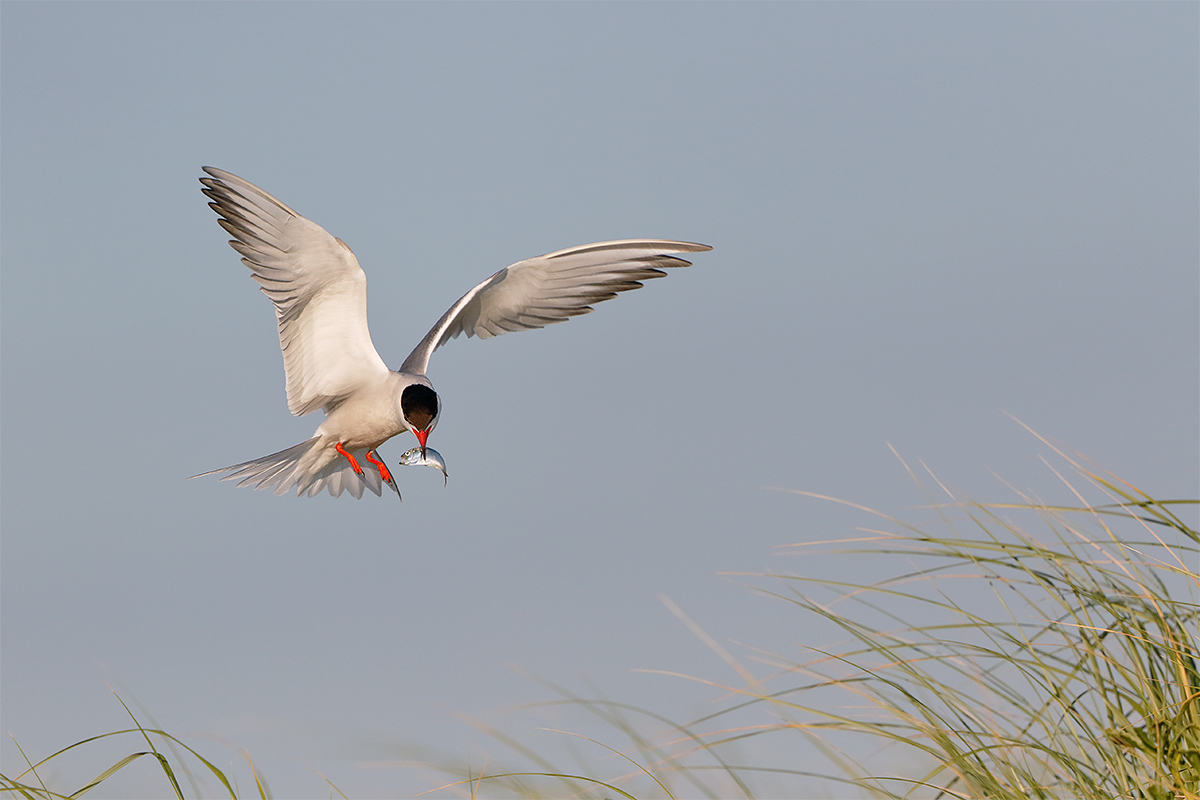
|
|
This image was created at 6:42pm on the first afternoon of the Nickerson IPT with the hand held Canon EF 400mm f/4 DO IS II USM lens and the amazing Canon EOS 7D Mark II. ISO 400. Evaluative metering +2/3 stop off the blue sky: 1/5000 sec. at f/4. AWB.
Center AF point/Manual selection/AI Servo/Shutter Button AF as framed was active at the moment of exposure (as is always best when hand holding). The active point missed the subject’s head by a bit but kept tracking accurately most likely due to my Custom Case settings (as detailed in the 7D Mark II Guide. Click on the image to see a larger version.
Common Tern above nest with baitfish for chick
|
400 DO II/7D II for Flight
While the winds with westerly components have made things difficult on clear mornings (can you say wind against sun?) they are just what the doctor ordered for the afternoons. We enjoyed lots of great flight photography opportunities on Thursday afternoon and expect more of the same on Friday. I was quite pleased with the performance of the 400 DO II/7D II combo. Though you obviously lose the ability to zoom out that you have with the Canon EF 100-400mm f/4.5-5.6L IS II USM lens, the extra stop of speed (f/4 as compared to f/5.6) provides faster initial AF acquisition. In addition, you can enjoy super-fast shutter speeds at ISO 400. Aside from being able to zoom out when needed the 100-400mm IIis lighter than the 400 DO II, 3.5 lbs as compared to 4.63 lbs. For some folks that is a huge difference. Which is best for you? There are many, many factors involved and in the end, that needs to be a personal decision.
There will be lots more here over the next few weeks on the 400 DO II as it will serve as my super-telephoto lens on the Bear Boat IPT. I’ll be shipping the 600 II home just before I fly to Alaska in a week.
Unfortunate Nickerson News
All visiting photographers were dismayed on Friday afternoon when they realized that the ropes that protect the colony had been moved back 25-40 feet during the day…. Someone in the group asked a birder if they new anything. “They thought that the photographers had been too close to the birds.”
I am not sure who they is. All that I can say is that all of the photographers respected the colony boundaries and that the breeding skimmers were pretty much at peace with our presence. Adults Black Skimmers routinely fed their chicks, some fairly close to the ropes, despite the presence of photographers.
Many times in my career I have seen large groups of well-behaved photographers enjoying great conditions only to have them (the authorities whomever they are) dramatically alter the situation either overnight or in a matter of hours for a variety of reasons….
|
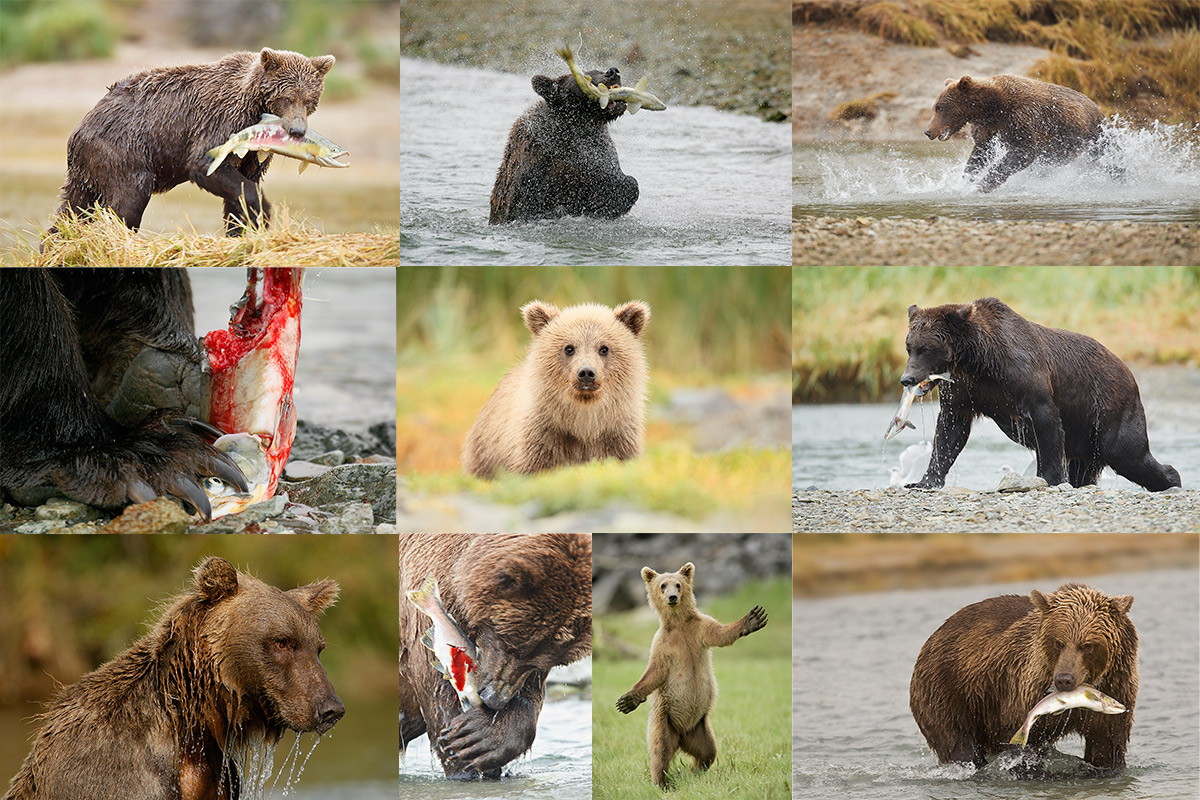
|
|
All of the images on the bear boat card above were created in Katmai National Park during the month of September.
|
Bear Boat/Bears Catching Salmon IPT: September 1-8, 2015 from Kodiak, AK/6 FULL & 2 HALF DAYS: $6699. Happy campers only! Maximum 8/Openings: 2. Plus the leader: Arthur Morris.
Please e-mail or call me on my cell at 863-221-2372 for late registration discount info; leave a message if I do not pick up.
Join me in Katmai National Park, AK for seven days of photographing Coastal Brown Bears (grizzlies) catching salmon, fattening up for the long winter. Other subjects will include Mew and Glaucous-winged Gulls in flight and dip-feeding on salmon roe. Did I mention that we live on a boat and that the food is great? Most of our photography will be done in a variety of famed locations: Geographic Harbor, Kinak Bay, and Kukak Bay. We once had 39 bears fishing the creek at Kukak….
It is mandatory that you be in Kodiak no later than the late afternoon of August 31, 2015 September to avoid missing the float planes to the boat on the morning of September 1. With air travel in AK being what it is, with the chance of fog or other bad weather–being on Kodiak on August 30 is an even better plan). I will be on Kodiak on August 30 to avoid any potential disaster. That said in my nearly a dozen bear boat trips I was delayed only once but since I was day early as noted above there was no harm, no foul.
We will take one or more float planes to the boat mid-morning on September 1. We will photograph bears fishing that afternoon and every day for the next six days (weather permitting of course). We should have bears catching salmon every day. In addition, we will get some nice stuff on Mew Gull and Glaucous-winged Gulls dining on roe and the remains of predated salmon. We may–depending on where the concentrations of bears are–get to photograph Harbor seals and some hauled out Steller’s Sea Lions (an endangered species). Halibut fishing (license required) is optional. On September 8, our last morning on the boat, those who would like to enjoy one last photo session will do so. The group returns to Kodiak via float plane midday. Most folks will fly to Anchorage and then continue on red-eye flights to their home cities.
The eight days will consist of six full days (Sept 2, 3, 4, 5, 6, & 7) of photography featuring lots of Coastal Brown Bears catching salmon as above plus a variety of other natural history subjects plus some nice scenic photography that I forgot to mention above. Plus the first afternoon and the last morning.
What’s included? 8 DAYS/7 NIGHTS on the boat as above. All meals on the boat. (The food is quite excellent.) National Park fees. One night’s double occupancy lodging on Kodiak; arrive: Sept 1/depart: Sept 2. The thank-you-in-advance dinner on Sept 1. In-the-field photo tips, instruction, and guidance. An insight into the mind of a top professional; I will constantly let you know what I am thinking, what I am doing, and why I am doing it. Small group image review, image sharing, and Photoshop instruction on the boat.
What’s not included: Your round trip airfare to and from Kodiak, AK (almost surely through Anchorage). All necessary lodging other than the cost of your double occupancy room on the night of August 31 should you opt to arrive early–we can arrange that in advance for you. We will let you know the cost of a single supplement for the one night if so desired. The cost of the round-trip float plane to the boat on September 2 and back to Kodiak on September 9. The cost of a round trip this year was $500. The suggested crew tip of $210.
Is this an expensive trip? Yes, of course. But with 6 full and two half days, a wealth of great subjects, and the fact that you will be walking with the bears just yards away (or less….) it will be one of the great natural history experiences of your life. Most folks who take part in a Bear Boat IPT wind up coming back for more.
A $2,000 per person non-refundable deposit by check only made out to “Arthur Morris” is required to hold your spot. Please click here to read our cancellation policy. Then please print, read, and sign the necessary paperwork here and send it to us.
Your deposit is due immediately. That will leave a balance of $4699. The next payment of $2699 will be due on February 15, 2015. The final payment of $2000 is due on May 1, 2015.
I hope that you can join us for this wondrously exciting trip.
Facebook
Be sure to like and follow BAA on Facebook by clicking on the logo link upper right. Tanks a stack!
Support the BAA Blog. Support the BAA Bulletins: Shop B&H here!
We want and need to keep providing you with the latest free information, photography and Photoshop lessons, and all manner of related information. Show your appreciation by making your purchases immediately after clicking on any of our B&H or Amazon Affiliate links in this blog post. Remember, B&H ain’t just photography!
…..
Amazon.com
Those who prefer to support BAA by shopping with Amazon may use this link:
Amazon Canada
Many kind folks from north of the border, eh, have e-mailed stating that they would love to help us out by using one of our affiliate links but that living in Canada and doing so presents numerous problems. Now, they can help us out by using our Amazon Canada affiliate link by starting their searches by clicking here. Many thanks to those who have written.
Typos
In all blog posts and Bulletins, feel free to e-mail or to leave a comment regarding any typos or errors. Just be right :).
August 14th, 2015 Stuff
It is Thursday afternoon. I just woke up from a long nap. The Nickerson Beach IPT group is great. They were still smiling this morning despite the continuing NW wind and clear skies. Things are looking great for the afternoon.
I prepared this blog post in my motel room after optimizing today’s image for the private clients in the bagel place where we had brunch on Wednesday. All in all this blog post took less than an hour to prepare and, if I did everything right, it should be published automatically at 6am on Friday, August 14, 2015.
|
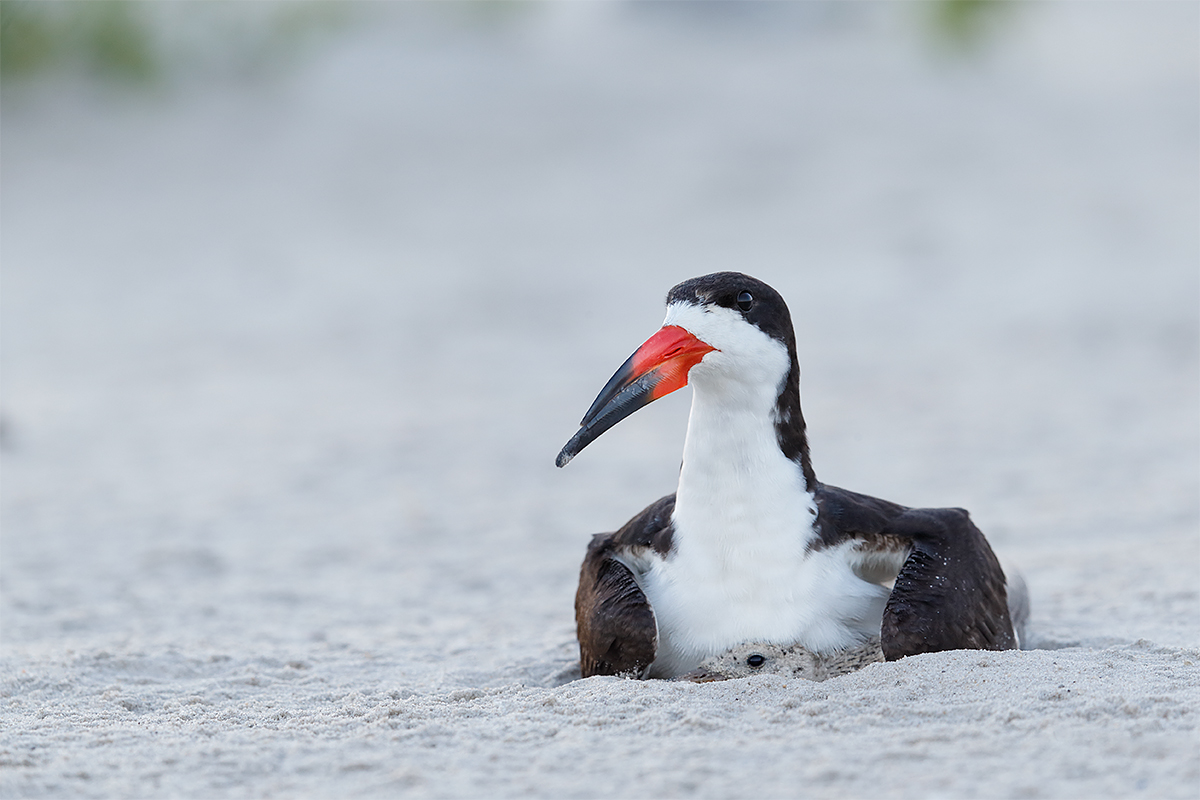
|
|
This image was created yesterday on the Nickerson Beach with the tripod-mounted Canon EF 600mm f/4L IS II USM lens, the Canon Extender EF 1.4X III, and the Canon EOS-1D X. ISO 800. Evaluative metering +1 1/3 stops: 1/125 sec. at f/7.1.
Center AF point/AI Servo Expand/Rear Focus AF on the bird’s eye and re-compose to get the bird out of the center of the frame. Click here to see the latest version of the Rear Focus Tutorial. Click on the image to see a larger version.
Black Skimmer with chick in nest scrape
|
600 II plus 1.4X III plus TV (Shutter Priority) Mode = Nickerson Beach Predawn Success
As I pointed out (again) in the recycled blog post here, folks who insist that real photographers work in Manual mode 100% of the time are ignorant of the fact that at times other shooting modes work just great. Here, assuming that folks know what they are doing exposure-wise. But heck, guess what? Simply working in Manual mode does not guarantee getting the right exposure unless the folks using Manual mode know what they are doing exposure-wise.
Here in the low, changing light of predawn I felt confident making sharp images at 840mm with a shutter speed of 1/125 sec. so I worked in TC mode, dialed in the correct EC (Exposure Compensation), and went to work. With success.
|

|
|
In 2015, we are offering a 3-DAY IPT before Thanksgiving and a 4-DAY IPT after the holiday. You can attend either and spend Thanksgiving Day with your family. Sign up for both and we will be glad to apply a $100 discount to your balance. We know that there are lots of less costly workshops being offered these days. Many of them are downright cheap. Please remember that you get exactly what you pay for. With us you will have two full time pros there for you every minute we are in the field. Together they have more than 28 seasons of experience at the refuge. If you want the finest in photographic instruction and want to be assured of being in the right spot at exactly the right time every day, do join us.
|
Bosque del Apache 2015 BIRDS AS ART/A Creative Adventure Instructional Photo-Tour (IPT). 3-FULL DAY IPT: NOV 22-24, 2015. $1149. Two great leaders: Denise Ippolito and Arthur Morris. Meet and greet and introductory slide program after dinner on your own at 7:00pm on SAT NOV 21.
Tens of thousands of Snow Geese, 10,000 Sandhill Cranes, ducks, amazing sunrises, sunsets, and blast-offs. Live, eat, and breathe photography with two of the world’s premier photographic educators at one of their very favorite photography locations on the planet. Top-notch in-the-field and Photoshop instruction. This will make 21 consecutive Novembers at Bosque for artie. This will be denise’s 7th workshop at the refuge. Nobody knows the place better than artie does. Join us to learn to think like a pro, to recognize situations and to anticipate them based on the weather, especially the sky conditions, the light, and the wind direction. Every time we make a move we will let you know why. When you head home being able to apply what you’ve learned on your home turf will prove to be invaluable.
This workshop includes 3 morning and 3 afternoon photography sessions, an inspirational introductory slide program after dinner on your own on Saturday, 11/21, all lunches, and after-lunch digital workflow, Photoshop, and image critiquing sessions.
There is never a strict itinerary on a Bosque IPT as each day is tailored to the local conditions at the time and to the weather. We are totally flexible in order to maximize both the photographic and learning opportunities. We are up early each day leaving the hotel by 5:30 am to be in position for sunrise. We usually photograph until about 10:30am. Then it is back to Socorro for lunch and then a classroom session with the group most days. We head back to the refuge at about 3:30pm each day and photograph until sunset. We will be photographing lots of Snow Geese and lots of Sandhill Cranes with the emphasis on expanding both your technical skills and your creativity.
A $449 non-refundable deposit is required to hold your slot for this IPT. Your balance, payable only by check, will be due on 7/25/2015. If you cancel and the trip fills, we will be glad to apply a credit applicable to a future IPT for the full amount less a $100 processing fee. If we do not receive your check for the balance on or before the due date we will try to fill your spot from the waiting list. Whether or not your spot is filled, you will lose your deposit. If not, you can secure your spot by paying your balance.
Please print, complete, and sign the form that is linked to here and shoot it to us along with your deposit check (made out to “Arthur Morris.”) You can also leave your deposit with a credit card by calling the office at 863-692-0906. If you register by phone, please print, complete and sign the form as noted above and either mail it to us or e-mail the scan. If you have any questions, please feel free to contact me via e-mail.
|

|
|
In 2015, we are offering a 3-DAY IPT before Thanksgiving and a 4-DAY IPT after the holiday. You can attend either and spend Thanksgiving Day with your family. Sign up for both and we will be glad to apply a $100 discount to your balance.
We know that there are lots of less costly workshops being offered these days. Please remember that you get exactly what you pay for. If you want the finest in photographic instruction and want to be assured of being in the right spot at exactly the right time, do join us.
|
Bosque del Apache 2015 BIRDS AS ART/A Creative Adventure Instructional Photo-Tour (IPT). 4-DAY IPT: (three full and two 1/2 DAYS) NOV 28-DEC 2, 2015. $1499. Two great leaders: Denise Ippolito and Arthur Morris. Meet and greet at 3pm on SAT NOV 28 followed by an afternoon photo session at the crane pools and the introductory slide program after dinner on your own.
Tens of thousands of Snow Geese, 10,000 Sandhill Cranes, ducks, amazing sunrises, sunsets, and blast-offs. Live, eat, and breathe photography with two of the world’s premier photographic educators at one of their very favorite photography locations on the planet. Top-notch in-the-field and Photoshop instruction. This will make 21 consecutive Novembers at Bosque for artie. This will be denise’s 7th workshop at the refuge. Nobody knows the place better than artie does. Join us to learn to think like a pro, to recognize situations and to anticipate them based on the weather, especially the sky conditions, the light, and the wind direction. Every time we make a move we will let you know why. When you head home being able to apply what you’ve learned on your home turf will prove to be invaluable.
This workshop includes 4 afternoon (11/28through 12/1), 4 morning (11/29 to 12/2) photography sessions, an inspirational introductory slide program after dinner on your own on Saturday, 11/28, all lunches, and after-lunch digital workflow, Photoshop, and image critiquing sessions.
There is never a strict itinerary on a Bosque IPT as each day is tailored to the local conditions at the time and to the weather. We are totally flexible in order to maximize both the photographic and learning opportunities. We are up early each day leaving the hotel by 5:30 am to be in position for sunrise. We usually photograph until about 10:30am. Then it is back to Socorro for lunch and then a classroom session with the group most days. We head back to the refuge at about 3:30pm each day and photograph until sunset. We will be photographing lots of Snow Geese and lots of Sandhill Cranes with the emphasis on expanding both your technical skills and your creativity.
A $599 non-refundable deposit is required to hold your slot for this IPT. Your balance, payable only by check, will be due on 7/25/2015. If you cancel and the trip fills, we will be glad to apply a credit applicable to a future IPT for the full amount less a $100 processing fee. If we do not receive your check for the balance on or before the due date we will try to fill your spot from the waiting list. Whether or not your spot is filled, you will lose your deposit. If not, you can secure your spot by paying your balance.
Please print, complete, and sign the form that is linked to here and shoot it to us along with your deposit check (made out to “Arthur Morris.”) You can also leave your deposit with a credit card by calling the office at 863-692-0906. If you register by phone, please print, complete and sign the form as noted above and either mail it to us or e-mail the scan. If you have any questions, please feel free to contact me via e-mail.
Facebook
Be sure to like and follow BAA on Facebook by clicking on the logo link upper right. Tanks a stack!
Support the BAA Blog. Support the BAA Bulletins: Shop B&H here!
We want and need to keep providing you with the latest free information, photography and Photoshop lessons, and all manner of related information. Show your appreciation by making your purchases immediately after clicking on any of our B&H or Amazon Affiliate links in this blog post. Remember, B&H ain’t just photography!
…..
Amazon.com
Those who prefer to support BAA by shopping with Amazon may use this link:
Amazon Canada
Many kind folks from north of the border, eh, have e-mailed stating that they would love to help us out by using one of our affiliate links but that living in Canada and doing so presents numerous problems. Now, they can help us out by using our Amazon Canada affiliate link by starting their searches by clicking here. Many thanks to those who have written.
Typos
In all blog posts and Bulletins, feel free to e-mail or to leave a comment regarding any typos or errors. Just be right :).
August 13th, 2015 Stuff
I set the alarm for 3:15am so that I could meet my three private clients at Nickerson at 5am. We had a great time and the boys and girls learned a ton despite the difficult wind (15+ mph from the NW) against sun conditions. Tonight is the meet and greet for the Nickerson Beach IPT. The one thing that always amazes me is that 90% of the folks at Nickerson (and most other locations that I visit regularly) have no clue as to how to try and make a good image. And that goes for double in difficult situations.
I prepared this blog post at my Mom’s in about one hour after optimizing the image on my flight to ISP on Monday past. If I did everything right, it should be published automatically at 6am on Thursday, August 13, 2015.
Thanks to All!
Thanks to the many who have been participating here on the blog more frequently after my recent plea for increased interactivity.
Razorbill Iris Exposure Answer
Many gave answers that would likely receive full credit on an exam but nobody gave the text book answer that I was looking for, the one that showed a complete and thorough understanding of exposure theory. Here is my answer:
The (middle-dark toned) iris of a Razorbill in a properly exposed RAW file will be about 1 1/2 stops underexposed because the correct exposure for a middle-dark tone needs to be about 1 1/2 stops more than the correct exposure for a bright WHITE in the same light. In other words, to be properly exposed, bright WHITEs need less light than a middle tone and middle-dark tones need more light than middle tones….
Learn more in the chapter on exposure in the original classic, The Art of Bird Photography (in softcover only) and in the “Exposure Simplified” section of The Art of Bird Photography II (ABP II: 916 pages, 900+ images, on CD only). Best bet: Save $10 by ordering the two-book bundle here. I can only wish that the info in these two comprehensive books had been available when I started in 1983….
|
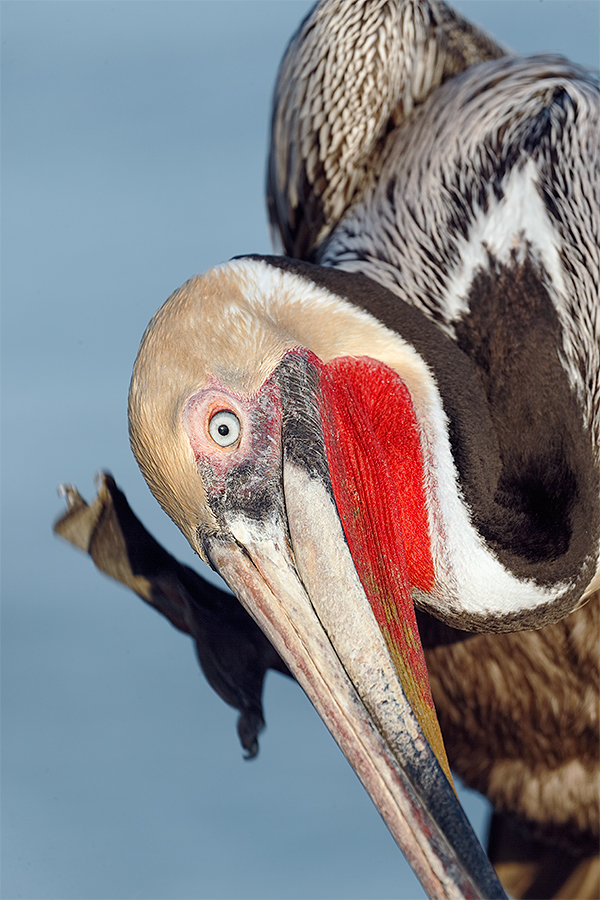
|
|
This image was created with the tripod-mounted Canon EF 100-400mm f/4.5-5.6L IS II USM lens, the Canon Extender EF 1.4X III (at 560mm) and the Canon EOS-1D X.. ISO 400. Evaluative metering at zero: 1/400 sec. at f/9 in Manual mode. AWB.
Center AF point/AI Servo Expand (by necessity)/Rear Focus AF as framed. The active AF sensor was fell on a spot to the right of and just below the bir’s eye. Click here to see the latest version of the Rear Focus Tutorial.
Image #1: Breeding plumage Pacific race Brown Pelican scratching.
|
Secrets to Success with the Hand Held 100-400 II/1.4X III/1D X Combination
Sorry; there will be nothing earthshaking here.
#1: Whatever the camera body, hand holding the 100-400 II with the 1.4X III TC yields the very best results when the sun is shining. That goes for double if you are using a 7D Mark II or another 1.6X crop factor body.
#2: For topnotch results when the sun is shining, work right on sun angle with your shadow pointed directly at the subject.
#3: Do not use One-Shot or Rear Focus and re-compose AF; doing so will result in unsharp images should you shift your position even a fraction of a millimeter as you do when you are breathing. With all due respect to the doubters, this too goes for double if you are using a 7D Mark II or another 1.6X crop factor body; with denser pixels the effects of gear shake will be greater on a pixel level with a crop factor camera than with a full frame body.
#4: The corollary to #3: always work in AI Servo mode and, after choosing a spot on the bird that will yield a sharp eye, have AF active at the moment of exposure.
#5: Even when working with AI Servo AF actively tracking, be sure to support your left forearm for added stability (and thus, increased sharpness). For today’s image my left forearm was resting on top of a cliff. I was standing in a natural, chest-high trench.
Note: The speed of initial AF acquisition with this combo is slowed as it is whenever a TC is added to the mix. This goes double for the 7D II or any of the pro-sumer bodies because the pro bodies have stronger batteries that better drive the AF system. My best advice for combatting this problem is to pre-focus at the approximate distance to the flying birds.
|
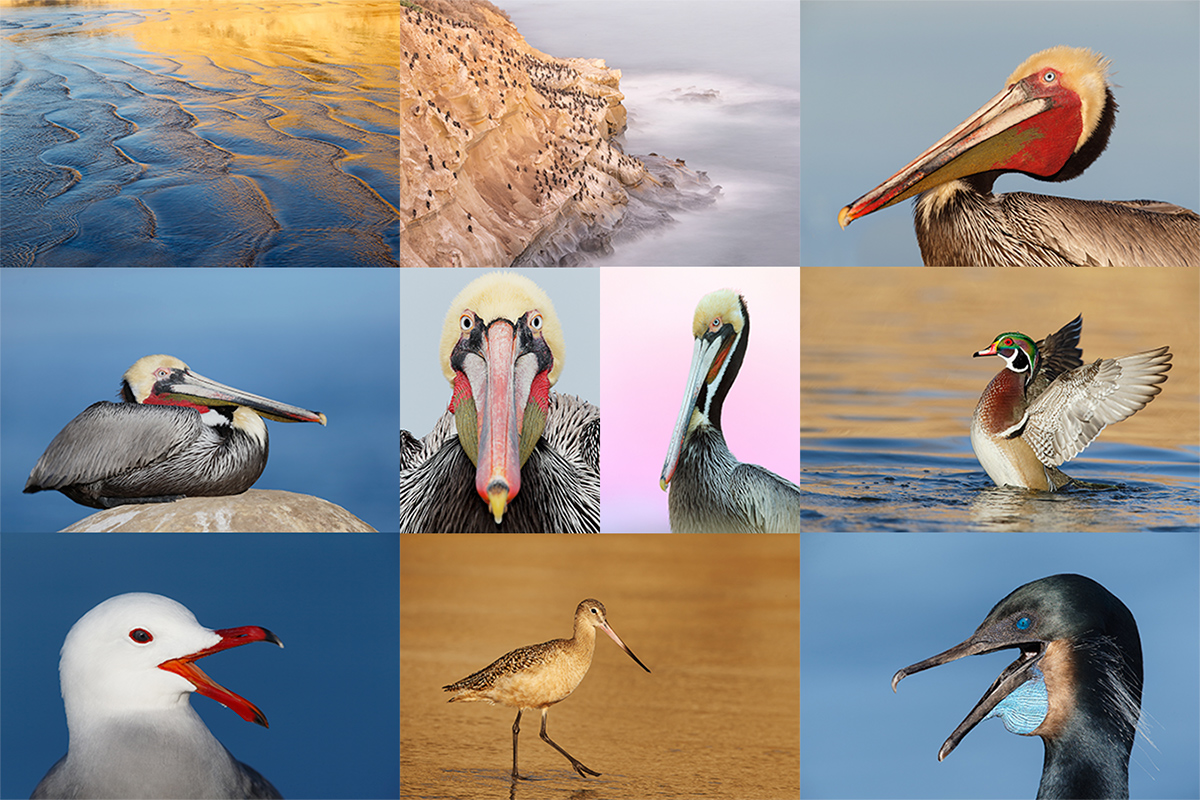
|
|
San Diego offers a wealth of very attractive natural history subjects. With annual visits spanning more than three decades I have lot of experience there….
|
2016 San Diego 4 1/2-DAY BIRDS AS ART Instructional Photo-Tour (IPT) JAN 8 thru the morning of JAN 12, 2016: $1899 (Limit: 10)
Meet and Greet at 7:00pm on the day before the IPT begins
Two great leaders: Arthur Morris and Denise Ippolito
Join us in San Diego to photograph the spectacular breeding plumage Brown Pelicans with their fire-engine red and olive green bill pouches; Brandt’s and Double-crested Cormorants in breeding plumage with their amazing crests; breeding plumage Wood and Ring-necked Duck; other species possible including Lesser Scaup, Redhead, and Surf Scoter; a variety of gulls including Western, California, and the gorgeous Heerman’s, all in full breeding plumage; shorebirds including Marbled Godwit, Willet, Sanderling and Black-bellied Plover; many others possible including Least, Western, and Spotted Sandpiper, Whimbrel, Black and Ruddy Turnstone, Semipalmated Plover, and Surfbird; Harbor Seals (depending on the current regulations) and California Sea Lions likely; and Bird of Paradise flowers. And as you can see by studying the two IPT cards there are some nice landscape opportunities as well.
Did I mention that there are wealth of great birds and natural history subjects in San Diego in winter?
|
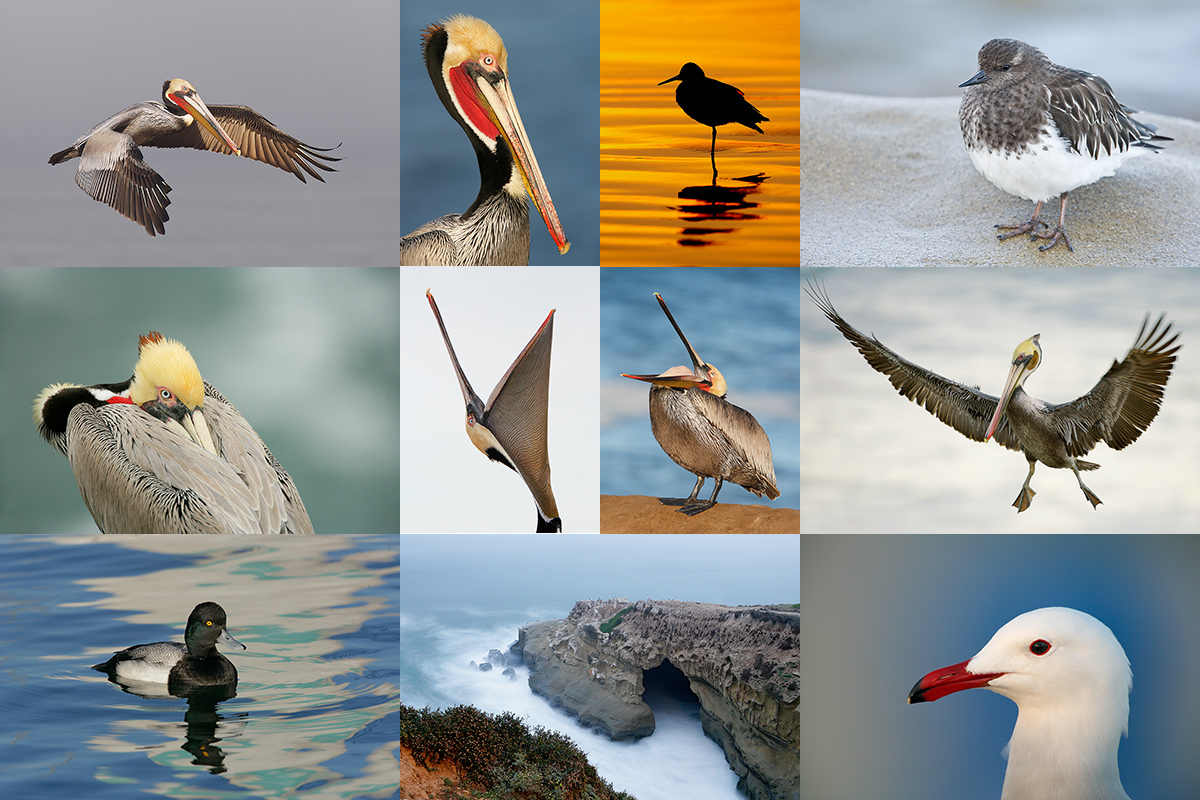
|
|
Though the pelicans will be the stars of the show on this IPT there will be many other handsome and captivating subjects in wonderful settings.
|
The San Diego Details
This IPT will include five 3 1/2 hour morning photo sessions, four 2 1/2 hour afternoon photo sessions, five lunches, after-lunch image review and Photoshop sessions, and a thank you dinner. To ensure early starts, breakfasts will be your responsibility.
A $499 non-refundable deposit is required to hold your slot for this IPT. You can send a check (made out to “Arthur Morris) to us at BIRDS AS ART, PO Box 7245, Indian Lake Estates, FL, 33855. Or call Jim or Jennifer at the office with a credit card at 863-692-0906. Your balance, payable only by check, will be due on 11/1//2015. If we do not receive your check for the balance on or before the due date we will try to fill your spot from the waiting list. Please print, complete, and sign the form that is linked to here and shoot it to us along with your deposit check. If you register by phone, please print, complete and sign the form as noted above and either mail it to us or e-mail the scan. If you have any questions, please feel free to contact me via e-mail.
Facebook
Be sure to like and follow BAA on Facebook by clicking on the logo link upper right. Tanks a stack!
Support the BAA Blog. Support the BAA Bulletins: Shop B&H here!
We want and need to keep providing you with the latest free information, photography and Photoshop lessons, and all manner of related information. Show your appreciation by making your purchases immediately after clicking on any of our B&H or Amazon Affiliate links in this blog post. Remember, B&H ain’t just photography!
…..
Amazon.com
Those who prefer to support BAA by shopping with Amazon may use this link:
Amazon Canada
Many kind folks from north of the border, eh, have e-mailed stating that they would love to help us out by using one of our affiliate links but that living in Canada and doing so presents numerous problems. Now, they can help us out by using our Amazon Canada affiliate link by starting their searches by clicking here. Many thanks to those who have written.
Typos
In all blog posts and Bulletins, feel free to e-mail or to leave a comment regarding any typos or errors. Just be right :).
August 12th, 2015 Stuff
After the very wet morning photo session, I spent a great hour with Dr. Dan Holland, my Long Island Active Release Technique chiropractor. Then I spent some time with my Mom, did a little shopping and cooking, and worked on this blog post. I meet three of the 8 IPT folks for an add-on private morning tomorrow. After our working brunch I will head back to my Mom’s for some rest, drive to the IPT motel, and meet the group at 8pm.
Including the time spent on image optimization this blog post took about 1 1/2 hours to prepare; that is practically like a day off :).
Singh-Ray Drop-in Filter Clarification
After going back and forth with my friends at Sing-Rey yesterday I have learned that the following is correct:
To order either the 3 stop Resin or the 5-stop Glass filters for the super-telephoto drop-ins folks will need to call Singh-Ray at 800-486-5501 (toll free) or 863-993-4100. If for Canon, tell them which 52mm Mor-Slo filter you want to order, give them the code artie10, and then arrange to send in your filter holder. Why do you need to send your filter holder? They need to confirm a perfect fit for each order and they will install and clean the filter. Folks using other brand lenses need to let them know the size and will of course need to send in the filter holder after ordering. Did I mention that you need to give them the code artie10 to receive your discount and to ensure that I get my affiliate credit ? 🙂
Click here for more Singh-Ray info and for the B&H filter holder links.
|
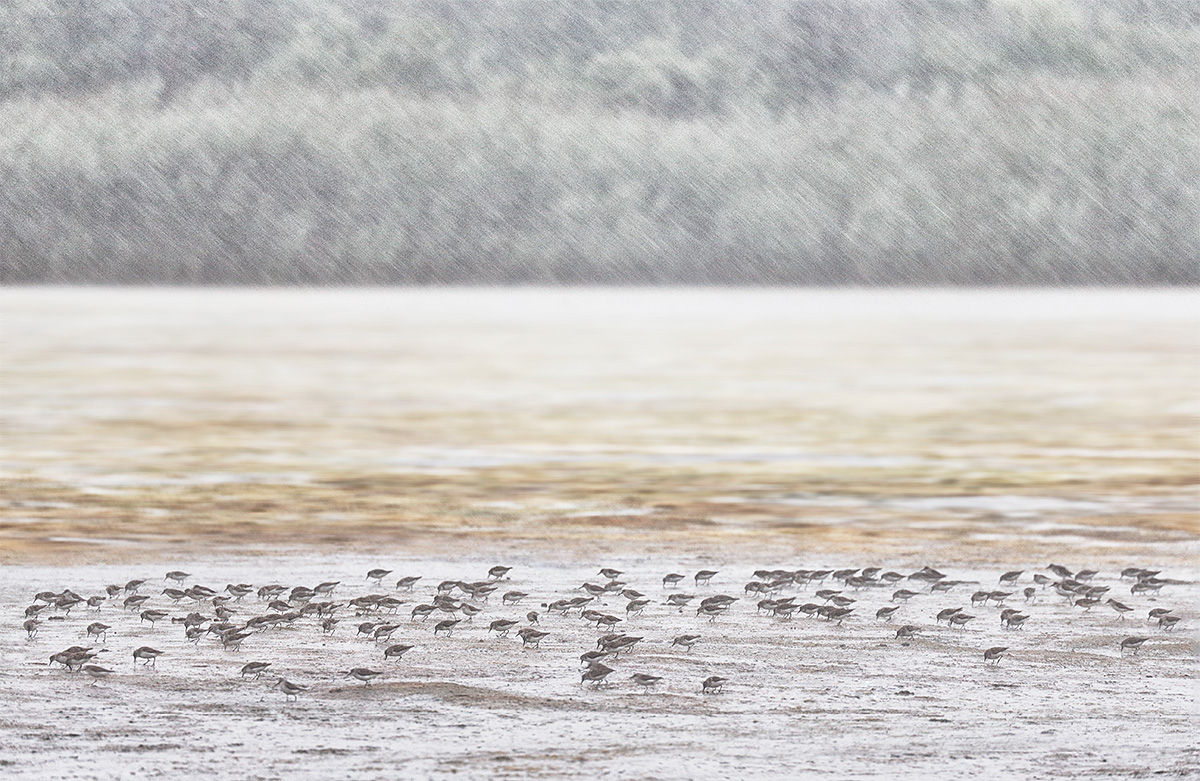
|
|
This image was created with the tripod-mounted Canon EF 100-400mm f/4.5-5.6L IS II USM lens (at 400mm) and the Canon EOS-1D X.. ISO 1600 (set by ISO Safety Shift). Evaluative metering +1 stop: 1/80 sec. at f/6.3 in Tv mode. AWB.
Center AF point/AI Servo/Rear Focus AF on the closest bird and recompose. Click here to see the latest version of the Rear Focus Tutorial. Click on the image to see a larger version.
Image #1: Shorebird flock in Armageddon Downpour
|
Photographing in a Downpour/East Pond Insanity
The plan was to meet Chris Billman at the refuge “rain or shine.” When I left my Mom’s at 4:50am, it was not raining. As I traversed the Southern State, it was drizzling a bit. That became rain once I got on the Belt Parkway. By the time we had donned our rain gear at JBWR it was raining pretty good. Only one of us brought some photographic gear. 🙂 Once we got out the the East Pond we had to deal with rain, hard rain, and more than a few minutes of Armageddon: periods of 30 degree slanted downpours with gusts to 30mph from the southwest. What fun.
|
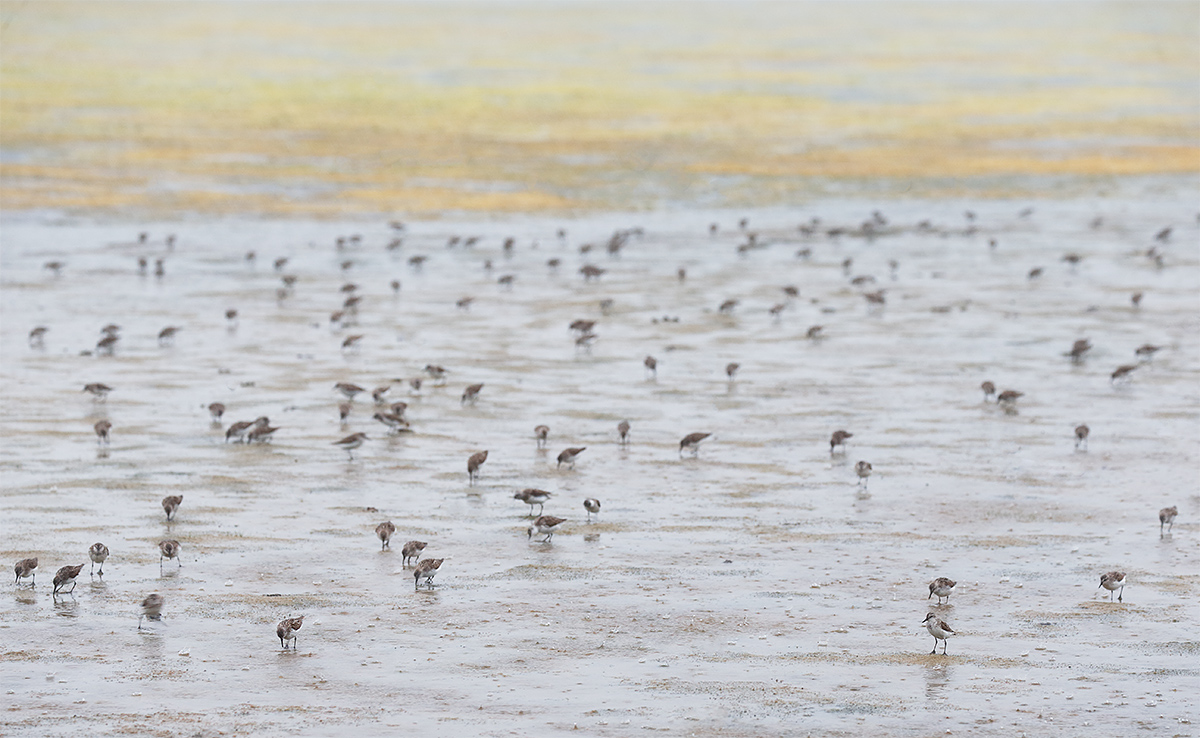
|
|
This image was created with the tripod-mounted Canon EF 100-400mm f/4.5-5.6L IS II USM lens (at 222mm) and the Canon EOS-1D X.. ISO 800. Evaluative metering +1 stop: 1/60 sec. at f/7.1 in Tv mode.
Center AF point/AI Servo/Rear Focus AF on the closest bird and recompose. Click here to see the latest version of the Rear Focus Tutorial. Click on the image to see a larger version.
Image #2: Medium-sized flock of Semipalmated Sandpipers feeding
|
East Pond Conditions
Water levels were somewhat higher than would be optimal. We had about 400 birds on the South Flat; most were Semipalmated Sandpipers with a smattering of Leasts. In addition, there were a few Semipalmated Plovers. There would typically be a few White-rumped and Western Sandpipers on this date but who could see? I identified a single Short-billed Dowitcher in Image #3. Can you spot it?
As you can see in each of today’s images, there are the big mats of algae that typically occur every few years.
|

|
|
This image was created with the tripod-mounted Canon EF 100-400mm f/4.5-5.6L IS II USM lens (at 105mm) and the Canon EOS-1D X.. ISO 800. Evaluative metering +1 stop: 1/60 sec. at f/7.1 in Tv mode.
Center AF point/AI Servo Expand/Rear Focus AF as framed was active at the moment of exposure (as is always best when hand holding). Click here to see the latest version of the Rear Focus Tutorial. Click on the image to see a larger version.
Image #3: Shorebird flock in flight blur
|
Why TV Mode?
Plus 1 stop EC (exposure compensation) was pretty much fine wherever I pointed the lens. With ISO Safety Shift enabled the camera would raise the ISO to achieve a given shutter speed. If I wanted an image fairly sharp, I simply set the shutter speed to 1/60 or 1/80 or 1/100sec. If I saw the flock take flight, I would drop down to 1/30 sec. It is somewhat ironic that my very favorite pleasing blur was created at 1/60 sec., one of my “sharp” settings.
Your Favorite?
Please take a minute to let us know what you think about today’s images? Like ’em all? Hate ’em all? Like one or more? Wherever you sit, please let us know why.
Facebook
Be sure to like and follow BAA on Facebook by clicking on the logo link upper right. Tanks a stack!
Support the BAA Blog. Support the BAA Bulletins: Shop B&H here!
We want and need to keep providing you with the latest free information, photography and Photoshop lessons, and all manner of related information. Show your appreciation by making your purchases immediately after clicking on any of our B&H or Amazon Affiliate links in this blog post. Remember, B&H ain’t just photography!
…..
Amazon.com
Those who prefer to support BAA by shopping with Amazon may use this link:
Amazon Canada
Many kind folks from north of the border, eh, have e-mailed stating that they would love to help us out by using one of our affiliate links but that living in Canada and doing so presents numerous problems. Now, they can help us out by using our Amazon Canada affiliate link by starting their searches by clicking here. Many thanks to those who have written.
Typos
In all blog posts and Bulletins, feel free to e-mail or to leave a comment regarding any typos or errors. Just be right :).
August 11th, 2015 Stuff
My late afternoon flight to Islip was a breeze. My younger daughter Alissa picked me up and brought me to my Mom’s. Forecasts of my Mom’s imminent death are at least somewhat premature. After three steps its as if she ran a marathon. Other than that she is as good as new. She will be 93 on September 19 if she makes it that long. She has been ready to check out for at least a few months in part because it is so hard for her to get around.
I head to JBWR early tomorrow for a short scouting visit.
This seemingly easy to assemble, mostly cut and pasted blog post actually took me about 3 hours to prepare. It will be published automatically from my Mom’s house in Holbrook, NY at 6:00am on Tuesday, August 11, 2015.
Please Remember to shop the BAA Online Store, and to use our Affiliate Links 🙂
To show your appreciation for my continuing efforts here, we ask, as always, that you use our the B&H and Amazon affiliate links on the right side of the blog for all of your purchases. B&H is recommended for you major photography gear purchases, Amazon for your household, entertainment, and general purpose stuff. Please check the availability of all photographic accessories in the BIRDS AS ART Online Store, especially the Mongoose M3.6 tripod heads, Gitzo tripods, Wimberley heads and plates, LensCoats and accessories, and the like. We sell only what I have used, have tested, and can depend on. We will not sell you junk. We know what you need to make creating great images easy and fun. And we are always glad to answer your gear questions via e-mail. I just learned that my account was suspended during my absence; it should be up and running by Monday at the latest.
I would of course appreciate your using our B&H affiliate links for all of your major gear, video, and electronic purchases. For the photographic stuff mentioned in the paragraph above we, meaning BAA, would of course greatly appreciate your business. Here is a huge thank you to the many who have been using our links on a regular basis and visiting the BAA Online store as well.
Wheeleeze
Without my Long Island Wheeleeze I would not be taking much gear to the beach at all. And I cernainly would not be lugging the 600 II. You can learn more about the great beach cart that enables me to get a ton of gear out on the beach without much effort here. Purchase yours Wheeleeze by clicking on the logo link below.
Nickerson Beach Gear Bag
Though my shoulder has been bugging me a bit and it was a close call on going with the 600 II as my big lens, I decided to bring–actually to ship, the big glass. Read more below on that decision in the section on the 400 DO II.
Canon EF 600mm f/4L IS II USM Lens. I’ve never been to Nickerson Beach without either the 600 f/4 or the 800mm f/5.6L IS. Aside from my bum right shoulder, there is no reason to start now. I expect to use the 600 most often with either teleconverter or naked for flight photography, the latter often from behind my seated tripod. I will have my Long Island Wheeleeze with me on all beach outings. I shipped the 600 II via UPS ground to my Mom’s house last week.
I am headed to the East Pond at Jamaica Bay Wildlife Refuge early tomorrow morning with Chris Billman to do some scouting. No carrier can make it through the mud there so I will be carrying the 600 II with the 1D X mounted on it in the LensCoat 4X Expandable Long Lens Bag (with harness). Call it shoulder love.
Canon EF 100-400mm f/4.5-5.6L IS II USM lens. I will be using this lens as my on-the-shoulder intermediate telephoto zoom lens with either the 5D III or the 7D II via a Black Rapid RS-7 strap). The 100-400 focal length fits almost perfectly with the 600. I will be using it for both for flight and for close work. I will be doing lots of pre-dawn and late in the day blurs where its sometimes problematic f/5.6 aperture will not be an issue. It was a pretty easy decision to leave the Canon EF 70-200mm f/2.8L IS II USM lens at home for the Nicerkson Beach IPT.
Canon EF 24-105mm f/4L IS USM Lens. This all-purpose B-roll lens will be in my Vested Interest Xtrahand vest where it can be grabbed when needed.
For me it was a no-brainer to bring the Canon EF 400mm f/4 DO IS II USM lens. Many would think that it duplicates the 100-400 II but there are lots of advantages that come along with its lighter weight (as compared to the 600 II) and its wider f/4 aperture (as compared to the 100-400II).
If my right shoulder gets worse instead of better, the 400 DO II if fully capable of serving me well as my big lens. Working with the 2X III TC (extender) gives me 800m mm of reach with the 1D X at f/8. In a much lighter and easier to maneuver package. If I need additional reach I can go to the 7D II. In addition, my suspicion is that the 400 DO II/1.4X III/1D X combo will outperform the 400 DO II/7D II combo as far as AF tracking accuracy with birds in flight. In need to try both set-ups and try to figure out if there actually is a definitive edge for the former…. And the 400 DO II offers a measure of insurance should fate claim my 600 II.
THE Canon EF 100mm f/2.8L Macro IS USM Lens with the optional Canon Tripod Mount Ring D for IS 100mm f/2.8L Macro Lens can be a plus on a still morning at the East Pond where Salt Marsh Fleabane is usually in bloom at this time of year. It can be useful at times out on the beach for photographing dead chicks or feathers (though the 100-400 II with its amazing close focus does a good job of filling that role. There was plenty of room in my ThinkTank Airport SecurityTM V2.0 for this lens (along with the 16-35mm that will be with me on my two Alaska trips).
Camera Bodies
EOS-1D X. I will use my rugged pro body primarily with the 600 II, going with the 7D II on the big lens only when I need the extra reach. The more powerful 1D X battery makes it better for flight and for driving the AF system when either TC is added.
5D Mark III). Depending on the situation, I will use either the 5D III or the 7D II on the 100-400 II.
EOS-7D Mark II. In addition to part time pairing with the 100-400 II I will go to the 7D II/600II combo (with or without either TC) whenever I need the extra reach.
TCs
I will, as usual, be making this trip with three Canon 1.4X III TCs and two 2X III TCs, Why so many TCs? With my style of bid photography–tight, clean, and graphic–I cannot afford to be without both TCs in the event of an accident or malfunction. Most common in the latter category would be that the locking pin sticks occasionally. When that happens, there is a risk of having your camera body hit the ground….
Questions Welcome
If you have a question about any of my gear choices please feel free to leave a comment. Do you disagree with any of my choices? What would you be brining to Nickerson Beach? And why?
Do Not Forget List!
Whenever I choose to leave one of my Singh-Ray filters at home on a big trip I always come to regret it. Quickly. So I recently added the following items to my “Do Not Forget Items to Bring on all Trips” packing list:
Singh-Ray 77mm Warming Circular Polarizer
Singh-Ray 77mm Mor-Slo 5-stop Glass ND filter
Singh-Ray 77mm Mor-Slo 3-stop Resin ND filter
Singh-Ray 5-stop glass 52mm filter to fit the Canon drop-in Filter Holder
I absolutely love the Singh-Ray 3-stop Resin and 5-stop Glass Neutral Density Filters. I use the 77mm versions of these filters on my 24-105, my 70-200mm f/2.8 L IS, and my new and beloved 100-400mm IS II lens so that I can create blurs on sunny days without having to stop down to f/too-many dust spots…. With a 5-stop glass ND in place I can easily get down to shutter speeds of 1/2 second and slower on clear, bright sunny days.
BIRDS AS ART worked with Singh-Ray to produce both a 3-stop Resin Neutral Density filter ($124) and a 5-stop Glass ND filter ($275) to fit the filter drawers of Canon Super-telephoto lenses. If you will be heading to Bosque this season, you will want at least one of the 52mm ND filters in your Xtrahand vest. To order one of the 52mm Mor-Slo filters you will need to call Singh-Ray at1-800-486-5501 (toll free) or 1-863-993-4100 (eastern time zone). Tell them that you want either the 52mm 3-stop Resin Mor-Slo ND or the 52mm 5-stop Glass ND (or both), give them the code artie10, and then arrange to send them your filter holder. Singh-Ray needs to confirm a perfect fit for each order and in addition, they will install and clean the filter. That’s why you need an extra filter holder or two:)
Remember that you will not get your 10% discount without mentioning the artie10 code. And I would not receive my affiliate commission. Thanks as always for remembering to use our discount/affiliate code with your Singh-Ray phone orders.

Singh-Ray Filters
Singh-Ray filters have been used by the world’s top photographers for many decades. As always, I will have my 77mm Singh-Ray Warming Polarizer in my vest in case of rainbows. And I now travel (as above) with various Singh-Ray ND filters so that I can create pleasing blurs even with clear skies and bright sun. See here for a great example.
No other filter manufacturer comes close to matching the quality of Singh-Ray’s optical glass that is comparable to that used by NASA. And they continue to pioneer the most innovative products on the market like their ColorCombo polarizer, Vari-ND variable and Mor-Slo 15-stop neutral density filters. When you use their filters, you’ll create better, more dramatic images and, unlike other filters, with absolutely no sacrifice in image quality. All Singh-Ray filters are handcrafted in the USA.
Best News: 10% Discount/Code at checkout: artie10
To shop for a Singh-Ray’s most popular solid ND filter, the 10-Stop Mor-Slo Glass Filter liter (for example), click on the logo link above, click on “Neutral and color Solid Neutral Density Filters (glass), then click on “Mor-Slo™ 5, 10, 15 and 20-Stop Solid Neutral Density Filters (glass),” choose the size and model, add to cart, and then checkout. At checkout, type artie10 into the “Have a coupon? Click here to enter your code” box, and a healthy 10% discount will be applied to your total. In addition to enjoying the world’s best filter at 10% off you will be supporting my efforts here on the blog.
52mm Filter Holder Insanity
It would be complete insanity to have to screw out the glass filter and then screw in a 52mm ND filter each time that you need it. The only option is to purchase a spare filter holder or two, screw the filter in, and keep that setup intact and ready to use. Singh-Ray includes a really neat soft leather filter holder with each purchase. I store all of the filters that I travel with in one of the small upper zippered pockets of my Xtrahand vest. I have two extra filter holders and will be bringing both the 3-Stop 52mm Resin ND and the 5-Stop 52mm Glass ND to Bosque.
Think Tank Rolling Bags
I will be using the larger of my two Think Tank rolling bags, the Airport Security™ V 2.0 Rolling Camera Bag. I will use the slightly smaller of the two, the Airport International™ LE Classic for my Southern Ocean trip. Except for the Singh-Ray polarizer, I everything above fit easily into my Airport Security™ V 2.0 Rolling Camera Bag on Thursday afternoon. It tipped the scales at 44 1/4 pounds; the legal limit for US flights is 40 pounds. Nearly all countries in the world give you slack as far as the 40 pounds goes on the way back to the US. As far as the extra 4 1/4 pounds, I have only been hassled for weight once in more than three decades of flying around the world…. I hope that I do not give myself a kine-ahora.
Think Tank Urban Disguise Laptop Shoulder Bag
Both denise and I use and love this amazing bag as it has tons of room and enables us to bring tons of extra stuff.
Please click on my Think Tank affiliate link here to earn a free gift when you purchase a Think Tank Rolling Bag.
Delkin Flash Cards
As always, I will have a 64gb Delkin e-Film Pro Flash Card in each camera body so that I never have to change cards in the field thus reducing the risk of losing a card…. Please note the new lower prices here. I do have a few extra 32 and 64gb cards in a Delkin CF Memory Card Tote, mostly to protect against operator errors….
Facebook
Be sure to like and follow BAA on Facebook by clicking on the logo link upper right. Tanks a stack!
Support the BAA Blog. Support the BAA Bulletins: Shop B&H here!
We want and need to keep providing you with the latest free information, photography and Photoshop lessons, and all manner of related information. Show your appreciation by making your purchases immediately after clicking on any of our B&H or Amazon Affiliate links in this blog post. Remember, B&H ain’t just photography!
…..
Amazon.com
Those who prefer to support BAA by shopping with Amazon may use this link:
Amazon Canada
Many kind folks from north of the border, eh, have e-mailed stating that they would love to help us out by using one of our affiliate links but that living in Canada and doing so presents numerous problems. Now, they can help us out by using our Amazon Canada affiliate link by starting their searches by clicking here. Many thanks to those who have written.
Typos
In all blog posts and Bulletins, feel free to e-mail or to leave a comment regarding any typos or errors. Just be right :).
August 10th, 2015 Stuff
Yesterday was a fairly relaxing day. I packed one of my two checked bags and my gear bag; details on the latter in tomorrow’s blog post. I still have to to pack my second checked bag, my Think Tank Urban Disguise laptop bag, and my Xtrahand vest but I have lots of time as my flight to Islip is at 3:00pm this afternoon. After two days of rest and some stretching my right shoulder is feeling a lot better. As am I. 🙂
This blog post took about an hour to assemble. It was published just before 6:00am on Monday, August 10 from my home in Indian Lake Estates, FL.
2nd Chance Challenges…
At times–after a while–folks start to take the blog for granted and get a bit lazy. Sure, most read it every day, but with a few specific posts folks lately have not been that interested in answering my questions by leaving a comment. The purpose of the blog it to get you to think and therefore to have everyone learn. In today’s blog post I will re-post two images, each with a previously ignored question. I challenge each of you to come up with a good answer. An interactive blog is a better blog….
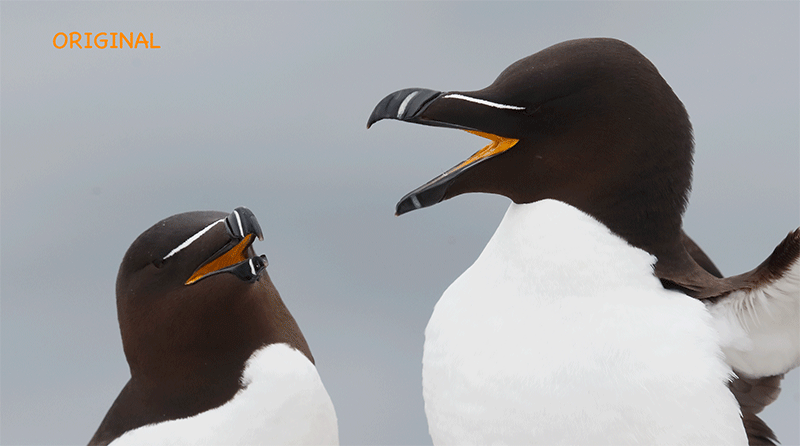
Before and after animated GIF. Note the browner tones and the much-improved eyes in the optimized version….
|
Important Exposure Question
In the “Dealing With Those Hard to See Eyes…” blog post here, I posted the animated GIF above and the question below. The answer to the questions reveals an important exposure principle, one that all good photographers should have completely mastered. I know from experience that few have done that. Do take a crack at it. I will be posting the answer and the explanation soon.
High Level Exposure Question
Why are the irises of Razorbills underexposed by about 1 1/2 stops in a properly exposed RAW file?
|
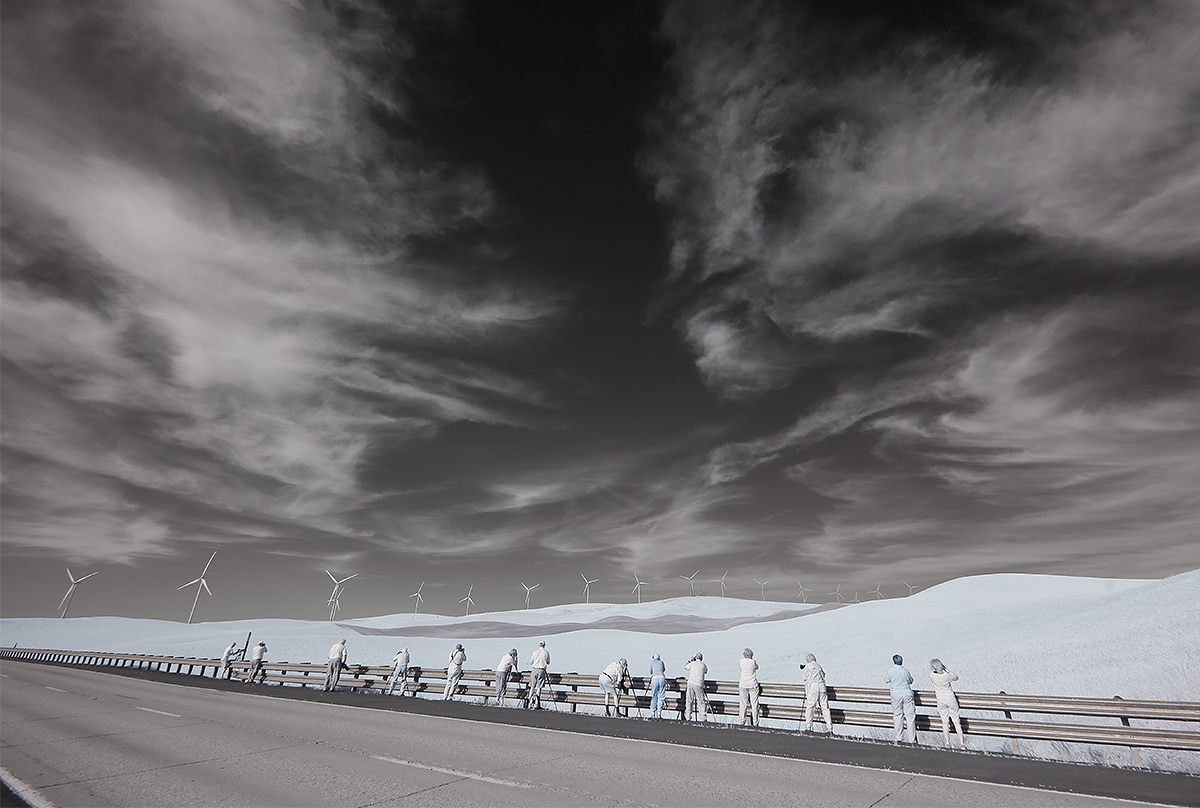
|
Image #2: Another version
|
Slightly Less Important Image Design Question
In the “Palouse Group Infrared Wind Turbine Image” blog post here, I posted the following with regards to both images.
Image Design Question
Do you like the little black triangle in the lower left corner? Why or why not?
|

|
|
Subject and focal lengths from upper left to right and then around to center.
Palouse Falls: 11mm; homemade kiddie race car: 105mm; barn siding pan blur: 798mm; Rolling fields diorama: 110mm; Crayola drums: 343 mm; Hay barn interior: 19mm; vintage gas station: 40mm; Dilapidated farm building: 13mm; Denise’s tree Infrared: 20mm.
Images and card design by Arthur Morris/BIRDS AS ART.
|
The Palouse ~ A Creative Adventure/BIRDS AS ART Instructional Photo-Tour (IPT)/Eastern Washington State. June 3-7, 2016/5 Full Days: $1699/Limit 12
The Palouse ~ A Creative Adventure/BIRDS AS ART Instructional Photo-Tour (IPT)/Eastern Washington State. June 10-14, 2016/5 Full Days: $1699/Limit 12
Double Header!
Maximize both your travel dollars and your learning experience by signing up for both IPTs.
|

|
|
Images and card design by Denise Ippolito/A Creative Adventure.
|
The Palouse IPTs
Rolling farmlands provide a magical patchwork of textures and colors, especially when viewed from the top of Steptoe Butte where we will likely enjoy spectacular sunrises and possibly a nice sunset. We will photograph grand landscapes and mini-scenics of the rolling hills and farm fields. We will take you to some really neat old abandoned barns and farmhouses in idyllic settings. There is no better way to improve your compositional and image design skills and to develop your creativity than to join us for this trip. Two great leaders: Denise Ippolito and Arthur Morris. Photoshop and image sharing sessions when we have the time and energy…. We get up early and stay out late and the days are long.
After 6 days of back-breaking scouting work in early June 2014 we found all of the iconic locations and, in addition, lots of spectacular new old barns and breath-taking landforms and views. On three additional scouting days in 2015 we discovered several more truly amazing locations. We will teach you what makes one situation prime and another seemingly similar one a waste of your time.
What’s included: In-the-field instruction, guidance, lessons, and inspiration, our newfound but very extensive knowledge of the area, all lunches, motel lobby grab and go breakfasts, and Photoshop and image sharing sessions when possible. There will be a meet and greet at 7:30pm on the evening before each workshop begins.
You will learn and hone both basic and advanced compositional and image design skills. You will learn to get the right exposure every time. You will learn to develop your creative eye. You will learn the basics of HDR (high dynamic range) photography. You will learn a variety of in-camera creative techniques. Most importantly you will learn to see the situation and to create a variety of top-notch images. Do see both of our blogs for lots more on that in the coming weeks. You will learn how the quality and direction of light combine to determine the success of your images. And–please don’t gasp–we will be working quite a bit with sidelight when creating landscapes. Lastly, we will be doing some infrared photography.
To Sign Up
A non-refundable $699 deposit is due now. The balance will be due on February 15, 2016. If we do not receive your check for the balance on or before the due date we will try to fill your spot from the waiting list. Whether or not your spot is filled, you will lose your deposit. If not, you can secure your spot by paying your balance.
With the spectacular success that we enjoyed in 2015 it seems quite likely that this one will fill up very quickly. Please let me know via e-mail that you will be joining us. Then you can either call Jim or Jennifer at 863-692-0906 during business hours or send us a check to leave a deposit; the latter is preferred. If by check, please make out to “Arthur Morris” and mail it to: Arthur Morris/BIRDS AS ART, PO Box 7245, Indian Lake Estates, FL, 33855. If you have any questions, please feel free to contact us via e-mail: artie or denise.
Travel Insurance Services offers a variety of plans and options. Included with the Elite Option or available as an upgrade to the Basic & Plus Options. You can also purchase Cancel for Any Reason Coverage that expands the list of reasons for your canceling to include things such as sudden work or family obligation and even a simple change of mind. You can learn more here: Travel Insurance Services. Do note that many plans require that you purchase your travel insurance within 14 days of our cashing your deposit check. Whenever purchasing travel insurance be sure to read the fine print carefully even when dealing with reputable firms like TSI.
Facebook
Be sure to like and follow BAA on Facebook by clicking on the logo link upper right. Tanks a stack!
Support the BAA Blog. Support the BAA Bulletins: Shop B&H here!
We want and need to keep providing you with the latest free information, photography and Photoshop lessons, and all manner of related information. Show your appreciation by making your purchases immediately after clicking on any of our B&H or Amazon Affiliate links in this blog post. Remember, B&H ain’t just photography!
…..
Amazon.com
Those who prefer to support BAA by shopping with Amazon may use this link:
Amazon Canada
Many kind folks from north of the border, eh, have e-mailed stating that they would love to help us out by using one of our affiliate links but that living in Canada and doing so presents numerous problems. Now, they can help us out by using our Amazon Canada affiliate link by starting their searches by clicking here. Many thanks to those who have written.
Typos
In all blog posts and Bulletins, feel free to e-mail or to leave a comment regarding any typos or errors. Just be right :).
August 9th, 2015 Stuff
I spent most of the day yesterday relaxing and not getting much done. Took a late easy swim, mostly kicking as the right shoulder is still a bit sore and stiff :).
This blog post which took about 1 1/2 hours to put together, was published at 8:40am from my home in Indian Lake Estates, FL. Tomorrow: fly to Islip and get ready for the Nickerson Beach IPT. I guess that I need to think about packing….
Lightroom Bashing?
The text below is adapted from a comment that I left in the long, mostly wonderful discussion that followed the “RAW Conversion 101/Step One & More Lightroom Insanity; Can You Help?” blog post here.
Howdy, You might wish to check your attitude at the door; this post was intended to help LR folks…. If you read the comments you will see that that is just what has happened. Many who (again) think or thought or assumed that my intent here was to trash or bash Lightroom. That is not at all true: my intentions were to find a solution to what I saw as a serious problem and to educate others; we have done both. And the next time I run into LR folks who do not know how to go about controlling their WHITEs in the Develop Module, I will know exactly how to help them.
Please understand that inflammatory comments like those the appeared in the “Lightroom/My Take” blog post here and provocative title phrases like “LR Insanity” will get more folks to visit than a boring title :)”
I still do not understand why anyone would use LR but I am fine that they do…. What I’ve always asked is “Aside from cataloguing, what can LR do that Photoshop can’t?” Do remember that PS can do dozens of important things that LR cannot do…. artie
The Comments Paved the Way to Understanding
Thanks to the many who commented and got things headed in the right direction. That group included Belinda, Dieter Schaefer, David Bose, Mike Moore, Jim Thomson :), Ted Thelin, Fabrizio Giudici, John Rowell, Rich LaBella, Kim Biledgaard, Alan Lillich, and Steen Torner. Steen’s comments put Alan Lillich and me on a straight path to the summary that follows immediately. Thanks again to all.
Lightroom Highlight % Values vs RGB Values Lessons Learned and Summary
The following text is adapted from an e-mail sent to me by many, many multiple IPT veteran (along with wife Pat) yesterday. Alan’s comments pretty much matched the conclusions that I had reached but had not committed yet to Word Press :). Thanks Alan.
Artie,
This turns out to be a deep story with many nuances. Lots of the web comments have bits of truth, most (mine included) oversimplified things in terms of actual working practices. Feel free to rework this, or we can collaborate on something to post. I’ll speak generically below, “you” means anyone, “Artie” means you specifically.
Bottom line: Figure out something that works for your workflow. Do not obsess about using simplistic adaptations of someone else’s workflow. Artie picks a specific white limit in his PS workflow because it works for him. Denise uses a slightly different limit. Someone using LR might do well to start with a simple percentage conversion, but they must go on to understand why artie or denise chose their numbers and decide for themselves what LR percentage works for them.
Comparing two people’s experience is very difficult without understanding exactly what each is doing and exactly what the applications and settings used by each are doing. In other words, lots of little changes in your workflow can change your results, sometimes dramatically. This is why it is very important for each person to use what works best for their specific workflow.
Here are some bits of the deeper story told while trying not to get too intense on the theory or obscure details.
Yes, turning on soft proofing in LR makes it display pixel RGB values as whole numbers from 0 to 255 instead of as percentages. Those pixel values are, however, affected by the soft proofing options. Thus, they only make sense if those options are as close as possible to the intended final output. Or if you are sure that those settings accurately reflect your early stage workflow. Consider that artie’s use of a WHITE limit is dealt with right out of the box as the first step in his workflow (after he has applied the standard recipe specific to each camera at a given ISO). He strives to render his WHITEs as clean bright WHITEs that do not at all approach GRAY while retaining the potential for fine detail. That might be too early to be making decisions based on specific output options, unless you always output the same way – always to the web, always to the same printer/paper/ink, etc.
(Notes: Alan chose the words “potential for” knowing that in many cases the detail in the WHITEs are revealed with either my NIK 50-50 recipe or via a Layer of Linear Burn, both usually with Opacity reduced after the effect is applied. See Digital Basics for complete details.
I make my JPEGs from my optimized TIFFs. I print from the optimized TIFFs that are sized and then sharpened by my right hand man, Jim Litzenberg. artie) My optimized TIFFs, my JPEGs, and my prints all look great at least to my eye. For some folks, folks like me, keeping things very simple works quite well. artie)
Choice of color space can have a big impact on pixel values. As this is part of your workflow, you’re always working on an image in a given color space. When soft-proofing is off, the in-memory RGB values are converted from the working color space to the color space of the monitor for display. This is why calibrating your monitor is important. Turning on soft-proofing adds another step, the working color space values are first converted to the output color space and then to the monitor color space.
LR works on RAW files in a unique manner. It is not different in massive ways from Photoshop or from DPP 4, but the RAW conversion process is different. The working color space in LR is close to but not identical to standard ProPhoto RGB; it uses slightly different gamma values (tone curves). Here is the link to a good article on the topic if you want to learn more:
http://ptgmedia.pearsoncmg.com/imprint_downloads/peachpit/peachpit/lightroom4/pdf_files/LightroomRGB_Space.pdf
Unless you really understand what the different gamma values mean, exactly what LR and ACR do, and exactly what ProPhoto RGB means within PS, don’t get obsessed with precise comparisons of LR percentages and RGB pixel values.
As a bit of anecdotal evidence, I photographed an X-Rite Color Checker Passport and then compared LR values as percentages and numbers using soft proofing with PS RGB numbers in a few ways. In summary, the LR percentages were reasonably close to the PS values converted to percent, much closer than the LR numbers using soft proofing. This is not to say Steen’s comments are wrong! Not at all. This says that my workflow and procedures differed from his. Yours are probably differ from both of ours. Here reasonably close means within a few percent. Steen’s example of 90% to 95% is on the edge of what I call reasonably close. Close enough as a starting point for everyone to be able to develop a strategy using the LR percentage values so that they wind up with bright WHITEs with lots of detail.
Hope this helps. Alan
Facebook
Be sure to like and follow BAA on Facebook by clicking on the logo link upper right. Tanks a stack!
Support the BAA Blog. Support the BAA Bulletins: Shop B&H here!
We want and need to keep providing you with the latest free information, photography and Photoshop lessons, and all manner of related information. Show your appreciation by making your purchases immediately after clicking on any of our B&H or Amazon Affiliate links in this blog post. Remember, B&H ain’t just photography!
…..
Amazon.com
Those who prefer to support BAA by shopping with Amazon may use this link:
Amazon Canada
Many kind folks from north of the border, eh, have e-mailed stating that they would love to help us out by using one of our affiliate links but that living in Canada and doing so presents numerous problems. Now, they can help us out by using our Amazon Canada affiliate link by starting their searches by clicking here. Many thanks to those who have written.
Typos
In all blog posts and Bulletins, feel free to e-mail or to leave a comment regarding any typos or errors. Just be right :).
August 8th, 2015
Apple 15.4″ Macbook Pro Notebook Computers with Retina Displays
Though the exact model I have fallen in love with is no longer in production the items in the logo link above are quite similar. The $3149 model is pretty much a slightly updated version of the machine I am currently using. Though it took me more than a month to comfortably transition from a PC to a Mac I can only wish now that I had switched a decade ago…. artie
August 8th, 2015 What’s Up?
I am feeling much better today. My right shoulder was the only thing still seriously bugging me by yesterday afternoon but I was able to get a late, last minute appointment with TJ McKeon, my Active Release Technique chiropractor and good friend. He hurt me pretty good but the shoulder is much improved this morning.
This blog post took about 1 1/2 hours to prepare. It was published from my home at Indian Lake Estates, FL just after 6:15am on Saturday August 8, 2015. I fly to Long Island on Monday afternoon to visit my Mom and lead the Nickerson Beach/JBWR IPT. With back to back Alaska trips (including the Bear Boat IPT) I will not be back home until September 9.
Namibia IPT
If you missed the info on this great trip, please click here. So far we have assembled a cast of international participants: one from the US, two from South Africa, one from Hong Kong, and one from Australia. More than a few are world class photographic talent….
Bright Sun Lesson
It had been cloudy as we sailed to South Plaza and cloudy while we rested a bit after a great lunch. It was cloudy when I woke up from my nap and cloudy as we boarded the pangas (zodiacs). It was cloudy as we made the dry landing just after 2:30pm. And then the big cloud moved to the east as the sun moved slowly toward the western horizon. We had to deal with bright sun and blue skies.
As is usually the case, there were lots of big Land Iguanas basking on the rocks near the landing site. Everyone was excited as they properly moved to our right to sun angle. But we were limited by several Stop signs; nobody could get right on sun angle with their shadows pointing at the subjects. I cautioned that the resulting side-lit images would be less than pleasing in the harsh sun, but big yellow male Land Iguanas were too much for folks to resist. Even when I pointed out the lovely lady iguana sitting in the shade the boys and girls continued making bad images despite my protestations…. Sometimes the clients just don’t listen. During an image sharing session everyone loved my in the shade lady but were–as I had predicted, not too happy with their images of the males in bright sidelight….
Made With the 100-400 II/2X III/1D X? Seriously You Jest
I had chosen the tripod-mounted 100-400 II/1D X combo for our session at the landing as the male iguanas were both close and fairly tame. My 400 DO was resting comfortably in my Think Tank Glass Limo. My TCs were in my fanny pack. Once I spotted the lovely lady iguana sitting in the shade I reached for the 1.4X TC and mounted it. But I still did not have enough reach. So I did something unthinkable: I reached for the 2X III TC and switched out the TCs. Why earthshaking? At f/11 I would have to focus manually; you lose two stops of light with the 2X and go from f/.5.6 to f/11. Without AF. But I was too lazy to get up off of my comfortable perch on a smooth lava rock….
While focusing manually (note that being on a sturdy tripod with a good tripod head is a necessity) I simply concentrated on the iguana’s captivating eye. Focusing accurately was actually a snap. Even as she changed position slightly I was able to focus accurately. Most every image in the series was incredibly sharp. At one point I focused automatically using contrast off the sensor in Live View but the manually focused images were just as sharp and it was easier to re-focus manually when the animal changed position so I quit using Live View.
|
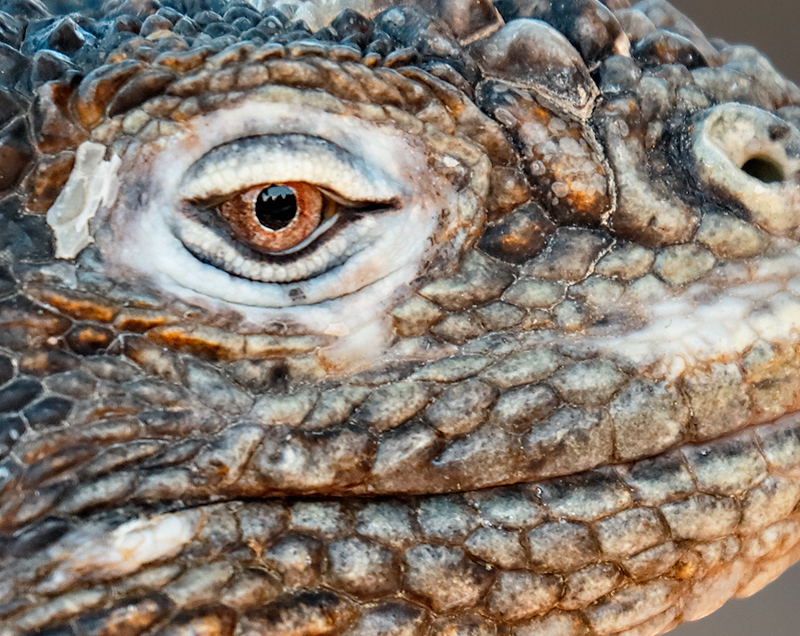
|
|
This (sharpened) 100% crop gives you an idea of how sharp the optics are with the 100-400 II/2X III combo and gives you an idea of how easy it is to focus manually when you concentrate on the subject’s eye….
|
The Ramifications?
#1: the new 100-400II is so sharp that using it with the 2X III TC yielded super-sharp images.
#2: the techniques detailed above will work only with relatively static subjects provided that the photographer is working on a tripod. Do not even think about using the 100-400II/2X III combo (yes, this will work with the 7D II as well as with the 1D X) when hand holding.
#3: though of somewhat limited use, working with the 2X III TC and the 100-400II further expands the amazing versatility of the new 1-4.
If what you have read in today’s blog post prompts or inspires you to purchase either the new 1-4 or the 2X III TC please use our affiliate logo link above to order either or both. If just one, simply click on the desired item.
|

|
|
All of the images on the bear boat card above were created in Katmai National Park during the month of September.
|
Bear Boat/Bears Catching Salmon IPT: September 1-8, 2015 from Kodiak, AK/6 FULL & 2 HALF DAYS: $6699. Happy campers only! Maximum 8/Openings: 2. Plus the leader: Arthur Morris.
Call for late registration discount info: 863-692-0906 and ask for me.
Join me in Katmai National Park, AK for seven days of photographing Coastal Brown Bears (grizzlies) catching salmon, fattening up for the long winter. Other subjects will include Mew and Glaucous-winged Gulls in flight and dip-feeding on salmon roe. Did I mention that we live on a boat and that the food is great? Most of our photography will be done in a variety of famed locations: Geographic Harbor, Kinak Bay, and Kukak Bay. We once had 39 bears fishing the creek at Kukak….
It is mandatory that you be in Kodiak no later than the late afternoon of August 31, 2015 September to avoid missing the float planes to the boat on the morning of September 1. With air travel in AK being what it is, with the chance of fog or other bad weather–being on Kodiak on August 30 is an even better plan). I will be on Kodiak on August 30 to avoid any potential disaster. That said in my nearly a dozen bear boat trips I was delayed only once but since I was day early as noted above there was no harm, no foul.
We will take one or more float planes to the boat mid-morning on September 1. We will photograph bears fishing that afternoon and every day for the next six days (weather permitting of course). We should have bears catching salmon every day. In addition, we will get some nice stuff on Mew Gull and Glaucous-winged Gulls dining on roe and the remains of predated salmon. We may–depending on where the concentrations of bears are–get to photograph Harbor seals and some hauled out Steller’s Sea Lions (an endangered species). Halibut fishing (license required) is optional. On September 8, our last morning on the boat, those who would like to enjoy one last photo session will do so. The group returns to Kodiak via float plane midday. Most folks will fly to Anchorage and then continue on red-eye flights to their home cities.
The eight days will consist of six full days (Sept 2, 3, 4, 5, 6, & 7) of photography featuring lots of Coastal Brown Bears catching salmon as above plus a variety of other natural history subjects plus some nice scenic photography that I forgot to mention above. Plus the first afternoon and the last morning.
What’s included? 8 DAYS/7 NIGHTS on the boat as above. All meals on the boat. (The food is quite excellent.) National Park fees. One night’s double occupancy lodging on Kodiak; arrive: Sept 1/depart: Sept 2. The thank-you-in-advance dinner on Sept 1. In-the-field photo tips, instruction, and guidance. An insight into the mind of a top professional; I will constantly let you know what I am thinking, what I am doing, and why I am doing it. Small group image review, image sharing, and Photoshop instruction on the boat.
What’s not included: Your round trip airfare to and from Kodiak, AK (almost surely through Anchorage). All necessary lodging other than the cost of your double occupancy room on the night of August 31 should you opt to arrive early–we can arrange that in advance for you. We will let you know the cost of a single supplement for the one night if so desired. The cost of the round-trip float plane to the boat on September 2 and back to Kodiak on September 9. The cost of a round trip this year was $500. The suggested crew tip of $210.
Is this an expensive trip? Yes, of course. But with 6 full and two half days, a wealth of great subjects, and the fact that you will be walking with the bears just yards away (or less….) it will be one of the great natural history experiences of your life. Most folks who take part in a Bear Boat IPT wind up coming back for more.
A $2,000 per person non-refundable deposit by check only made out to “Arthur Morris” is required to hold your spot. Please click here to read our cancellation policy. Then please print, read, and sign the necessary paperwork here and send it to us.
Your deposit is due immediately. That will leave a balance of $4699. The next payment of $2699 will be due on February 15, 2015. The final payment of $2000 is due on May 1, 2015.
I hope that you can join us for this wondrously exciting trip.
Facebook
Be sure to like and follow BAA on Facebook by clicking on the logo link upper right. Tanks a stack!
Support the BAA Blog. Support the BAA Bulletins: Shop B&H here!
We want and need to keep providing you with the latest free information, photography and Photoshop lessons, and all manner of related information. Show your appreciation by making your purchases immediately after clicking on any of our B&H or Amazon Affiliate links in this blog post. Remember, B&H ain’t just photography!
…..
Amazon.com
Those who prefer to support BAA by shopping with Amazon may use this link:
Amazon Canada
Many kind folks from north of the border, eh, have e-mailed stating that they would love to help us out by using one of our affiliate links but that living in Canada and doing so presents numerous problems. Now, they can help us out by using our Amazon Canada affiliate link by starting their searches by clicking here. Many thanks to those who have written.
Typos
In all blog posts and Bulletins, feel free to e-mail or to leave a comment regarding any typos or errors. Just be right :).
|
|

